




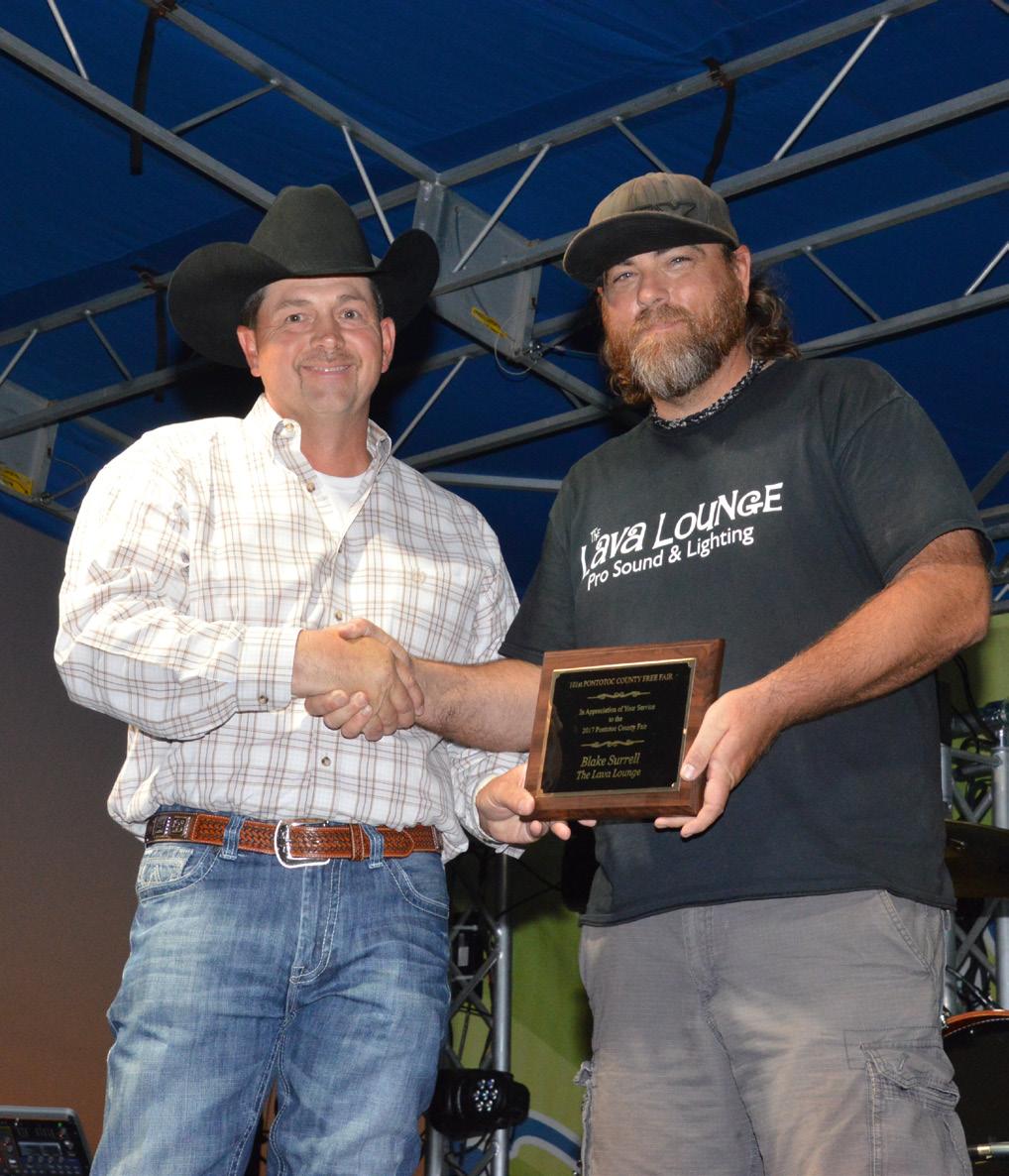
We proudly dedicate the 2024 Pontotoc County Free Fair to Mr. Todd Ray. Todd was involved in showing livestock during his school years and later went to Murray State College and East Central University.
Todd has been involved in the Pontotoc County Free Fair in some capacity for many years, from being a spectator to a show Dad. Raising and showing livestock has always been a passion for Todd.
Todd served on the Pontotoc County Fair Board from 2009 – 2017. He served as President of the board for 7 years. During that time the fair celebrated its 100th Anniversary. With Todd’s leadership a lot of history was obtained and published in the centennial fair book. During his time on the fair board, Todd raised over $210,000 as added money for the exhibitors in the fair. Each year, Todd’s goal was to make the fair better than the last. Todd worked tirelessly to help the kids of Pontotoc County. He didn’t care what school they attended, he just wanted each kid to have every opportunity to participate in the fair and to have a great experience. Todd continues to support the fair long after his retirement from the board.
Todd and his wife Laura are the proud parents of Jake and Shelbe Allen and Easton Ray.

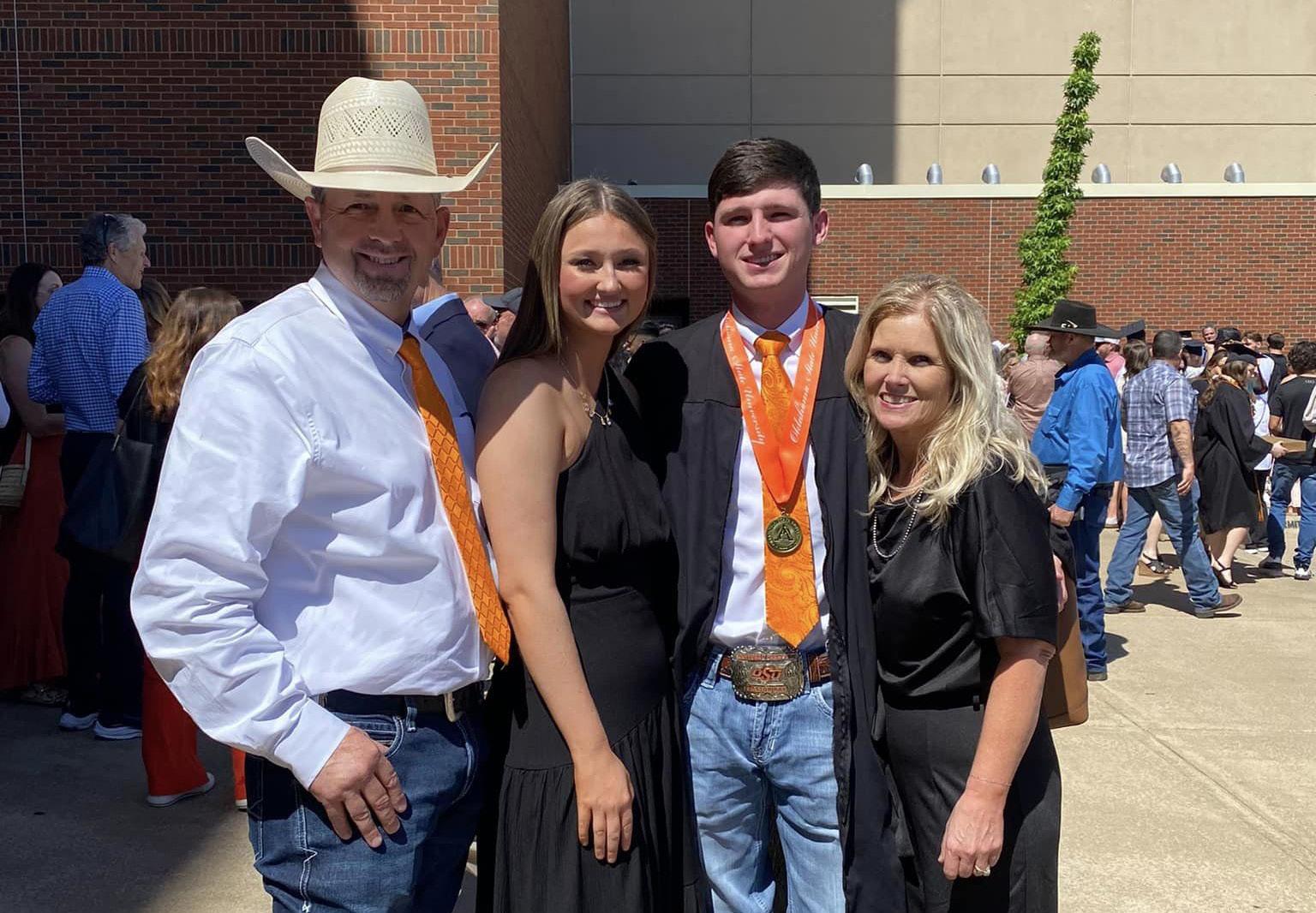


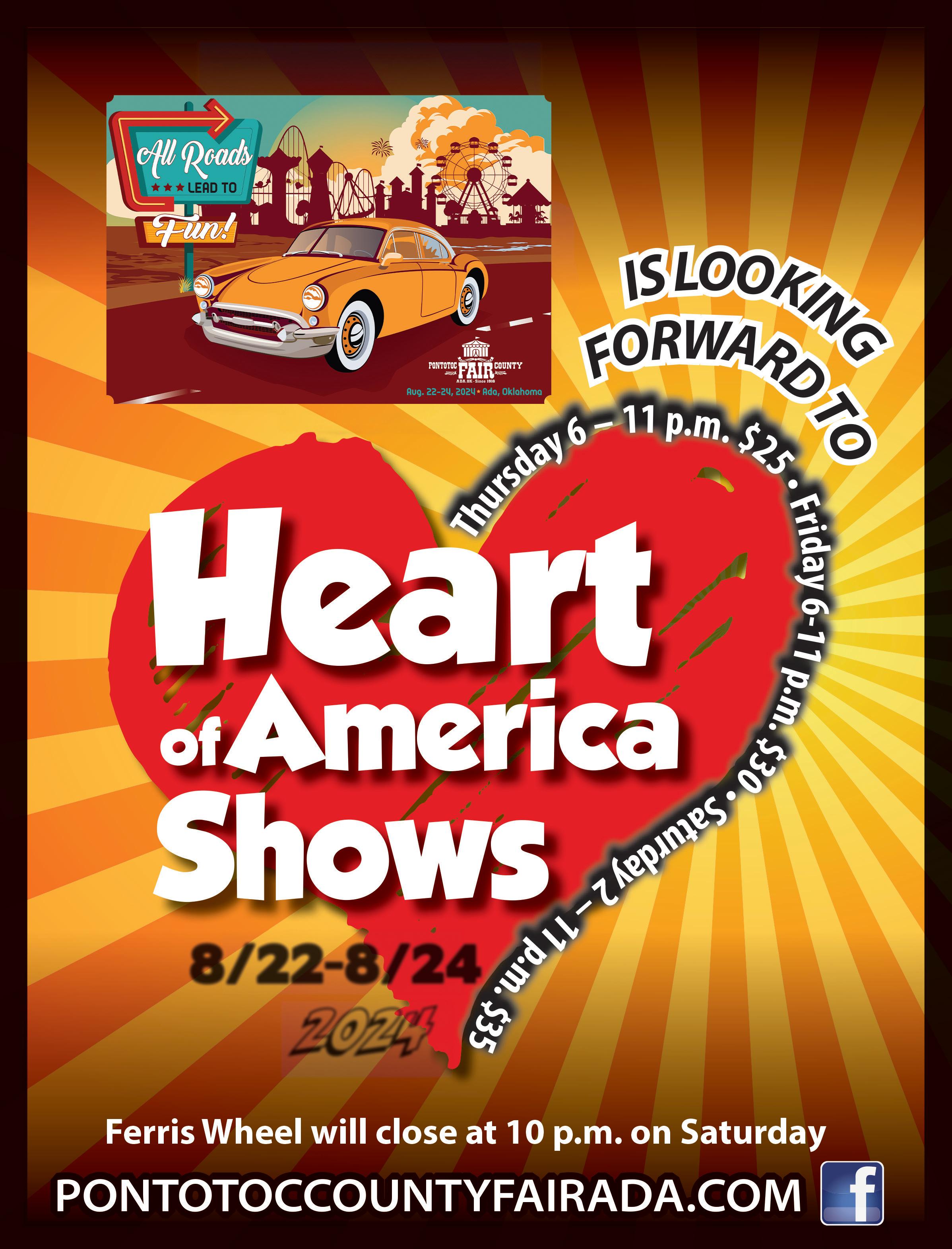



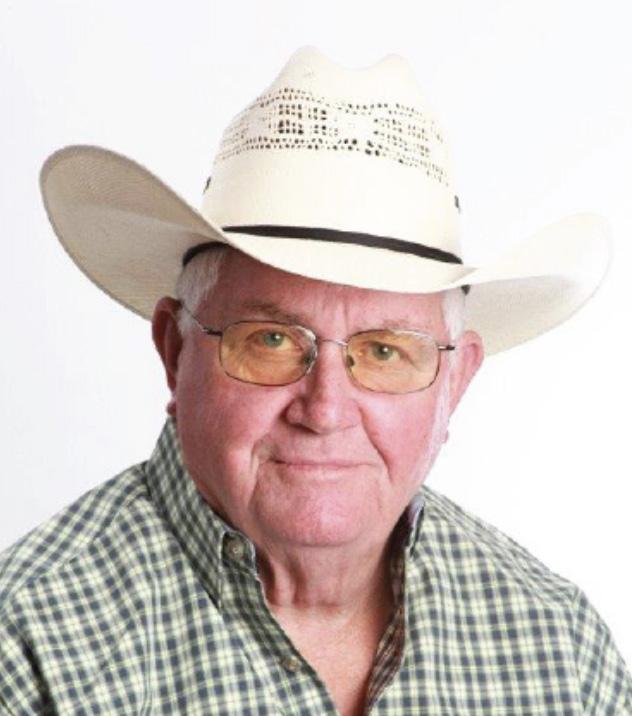


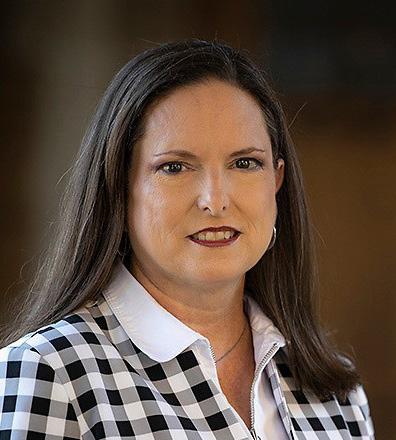



We are very excited about our 2024 Pontotoc County Free Fair. After months of hard work, it’s time to gather together and enjoy our great and wonderful heritage.
We have so many exciting things for you and your family to enjoy! Whether you come for the livestock shows, exhibits or carnival, there is something for everyone.
We are proud of the Agri-Plex facility and hope the citizens of Pontotoc County enjoy the Agri-Plex and notice the improvements that have been made.
We believe the Pontotoc County Fair Board, The Fair Director, the Extension Staff, and the many volunteers have done an excellent job in preparing for the fair and deserve the credit for the success of the Free Fair.






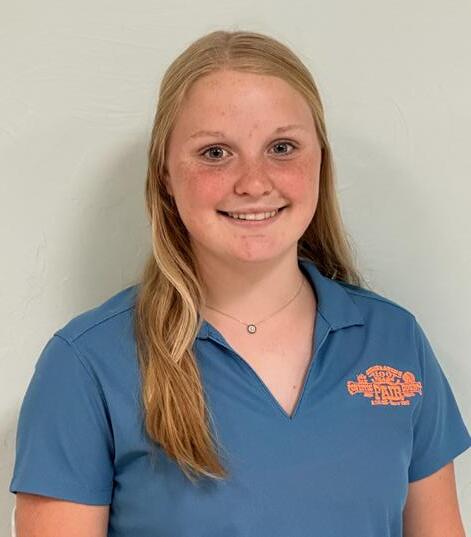


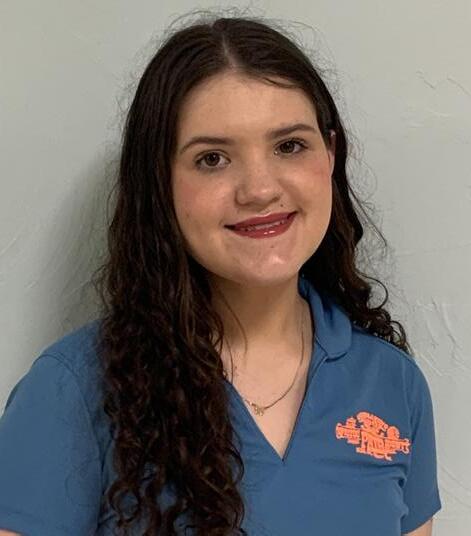
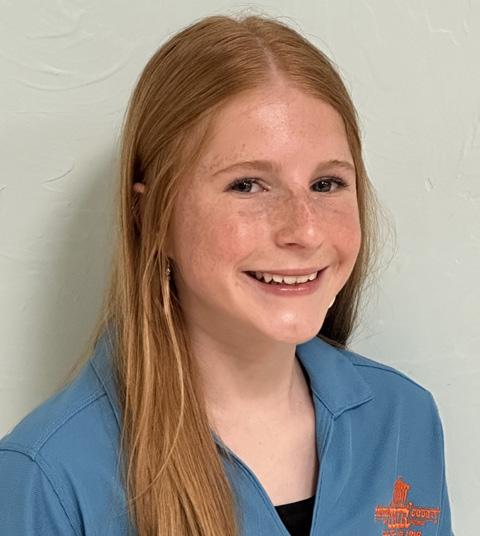










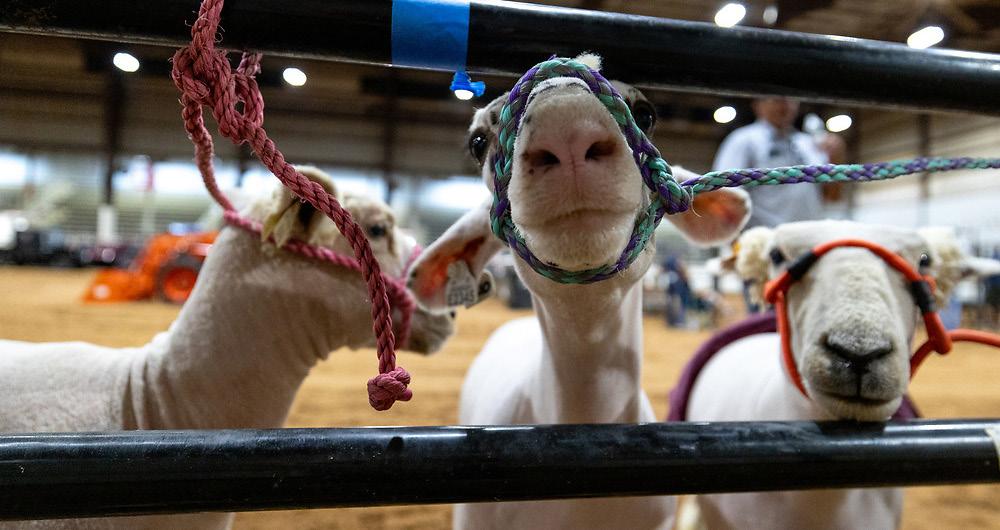



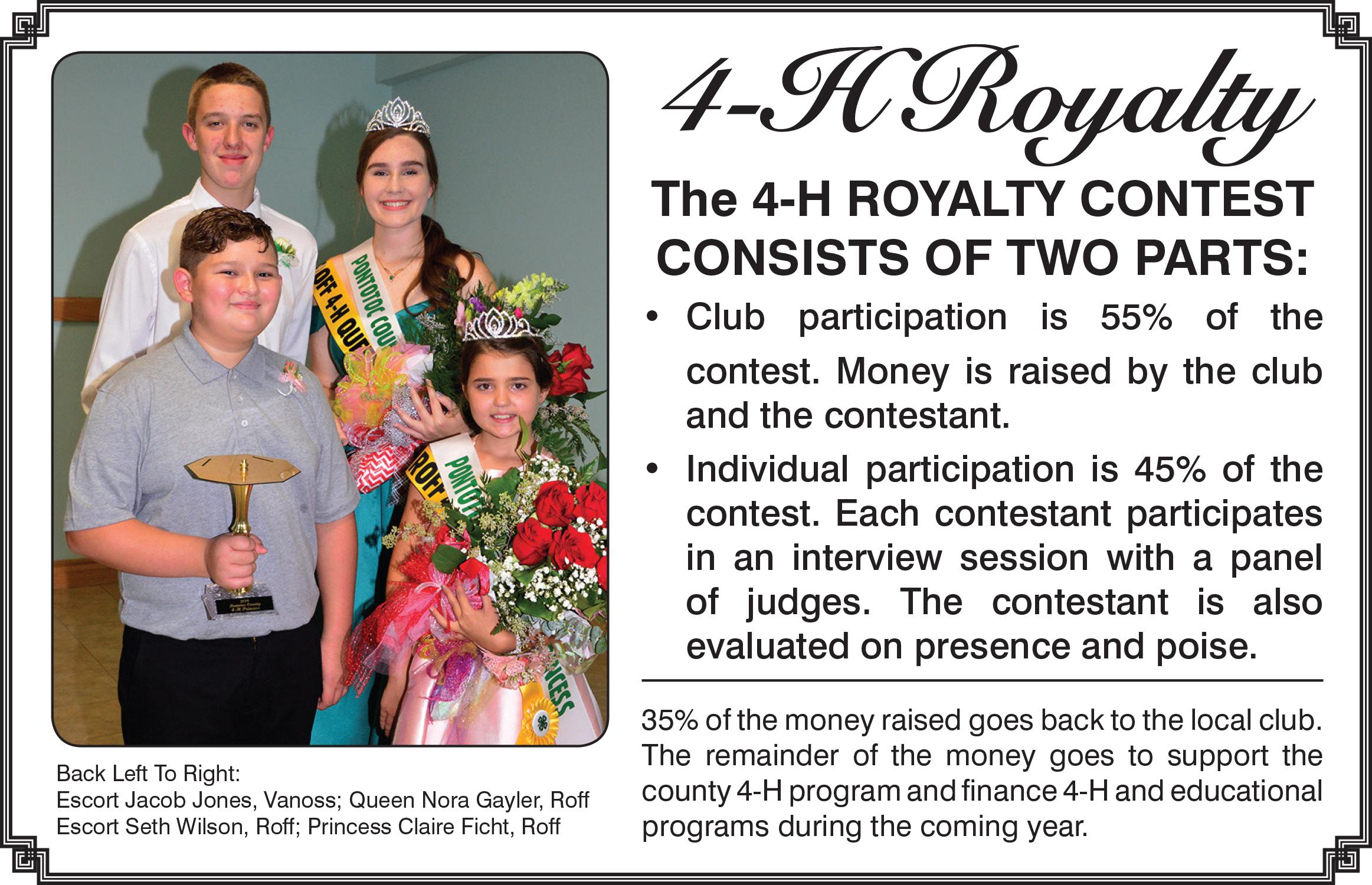
THE 4-H ROYALTY CONTEST CONSISTS OF TWO PARTS:
• Club participation is 55% of the contest. Money is raised by the club and the contestant.
• Individual participation is 45% of the contest. Each contestant participates in an interview session with a panel of judges. The contestant is also evaluated on presence and poise.
35% of the money raised goes back to the local club. The remainder of the money goes to support the county 4-H program and finance 4-H and educational programs during the coming year.

Online Entries - https://pontotocfairada.fairentry.com
MONDAY, JULY 15 PONTOTOC COUNTY FAIR ONLINE ENTRY SYSTEM OPEN
FRIDAY, AUGUST 9
All Entry Deadline (No Late Entries. No online entry will be available on entry drop off day.)
5 p.m.
Open and Jr. Poultry
Open and Jr. Rabbit
Open and Jr. Horse Show
Open and Jr. Livestock - Beef, Goats, Sheep, Swine
Open Class Indoor Exhibits
4-H Indoor Exhibits Sections 300-325
4-H & FFA ID and Judging Contests Register Here https://bit.ly/3vJySZb
**No Online Entries will be available on entry drop off days. All entries must be pre-entered at https://pontotocfairada.fairentry.com by Friday, August 9.
MONDAY, AUGUST 12
Pre-Registration Required by Friday, August 9 for All Contests
Check In 4:00-4:15 p.m.; Contests Start at 4:15 p.m. North Room Contests will be in this order:
4-H Consumer Decision Making
4-H FCS Skill-A-Thon
4-H Horticulture ID
THURSDAY, AUGUST 15
Pre-Registration Required by Friday, August 9 for All Contests
Check In 4:00-4:15 p.m.; Contests Start at 4:15 p.m. North Room Contests will be in this order:
4-H & FFA Animal Science Skill-A-Thon
4-H & FFA Natural Resources/Wildlife Skill-A-Thon
4-H & FFA Livestock Judging
MONDAY, AUGUST 19
12 p.m.-5 p.m. Pick up printed indoor exhibit tags. Picking these up and tagging exhibits makes for an easy drop off on the designated Open Class and 4-H entry day.
TUESDAY, AUGUST 20
3 p.m. – 7 p.m.
4-H Entries Drop Off (Section 300-325) Convention Center No Open Class Entries Accepted
WEDNESDAY, AUGUST 21
7 a.m. – 8 p.m. No Swine, Sheep, Goats or Beef in Barns
7 a.m. Check Jr & Open Horse Papers Big Red Barn Horses In North Stalls Only
8 a.m. Jr. & Open Horse Show Big Red Barn
8 a.m. – 7 p.m. 4-H Exhibits (Section 300-325) Closed for Judging
3 – 7 p.m. Open Class Exhibits Drop Off Convention Center (No Animal or 4-H Entries Accepted)
4 – 6 p.m. Poultry Will Be Pullorum Tested & In Place (Barn Closed After Testing)
4 – 6 p.m. Open & Jr. Rabbits In Place
7 p.m. Convention Center Closed
THURSDAY, AUGUST 22
10 a.m. – 12 noon Open & Jr. Poultry & Rabbits In Place – Pullorum testing available.
10 a.m. Open & Jr. Poultry & Rabbits Closed For Judging Poultry & Rabbit Showmanship starts immediately after judging.
1 p.m. – 4 p.m. Antique Tractors Move In
9 a.m. – 12 noon Convention Center Closed for Judging All animals checked in and weighed at appointed time to be show eligible. No Exceptions!
4 p.m. – 5 p.m. Open & Jr. Goat Check In & Weigh in
5 p.m. – 6 p.m. Open & Jr. Beef Check In & Weigh in
6 p.m. – 7 p.m. Open & Jr. Sheep Check In & Weigh in
7 p.m. – 8 p.m. Open & Jr. Swine Check In & Weigh In
3 p.m. – 9 p.m. Fair Opens to the Public Convention Center Booths and Exhibits Open
3 p.m. – 8 p.m. Kids Ag Zone Big Red Barn
6 p.m. Cowboy Reading Time Big Red Barn, Kids Ag Zone
6 p.m. – 11 p.m. CARNIVAL RIDES OPEN
5 p.m. Registration PAWS Dog Show Big Red Barn
6 p.m. PAWS Dog Show Big Red Barn
6:30 p.m.
County Commissioners Free Watermelon Feed Front of Red Barn
7:30
7:30
9
9
8
7
FRIDAY, AUGUST
1. The management of Pontotoc County Free Fair is the hands of the County Free Fair Board, which composed of nine elected members, tree from each County Commissioners district. The executive board consists of the President, Vice-President, Secretary, Treasurer, and one member appointed by the board. The executive board has the power to make decisions directly related to the function and operation of the free fair. The Pontotoc County Free Fair is financed by taxation. No admission charges will be made, and no entry fee will be charged. The Pontotoc County Free Fair Association is organized under the County Free Fair Association Act of 1937.
2. The Pontotoc County Fair Board is responsible for all premiums and awards listed in the Pontotoc County Fair Book. Any added awards or money not listed in the fair book are not governed by the Pontotoc County Fair Board.
3. All property of every character entered at the fair for any purpose shall be subject to the control of the secretary or superintendent in charge.
4. Separate exhibits must be provided for entry.
5. All junior exhibitors will have the privilege of making entries of products or livestock produced by them in all open classes in addition to their entries in the junior division provided that separate exhibits are provided by each entry.
6. Entry forms will be provided for listing all entries and exhibitors are required to see that their exhibits are properly listed on same.
7. The superintendent of the livestock department will assign spaces and exhibitors will be expected to keep their space or stall in sanitary condition at all times during the fair.
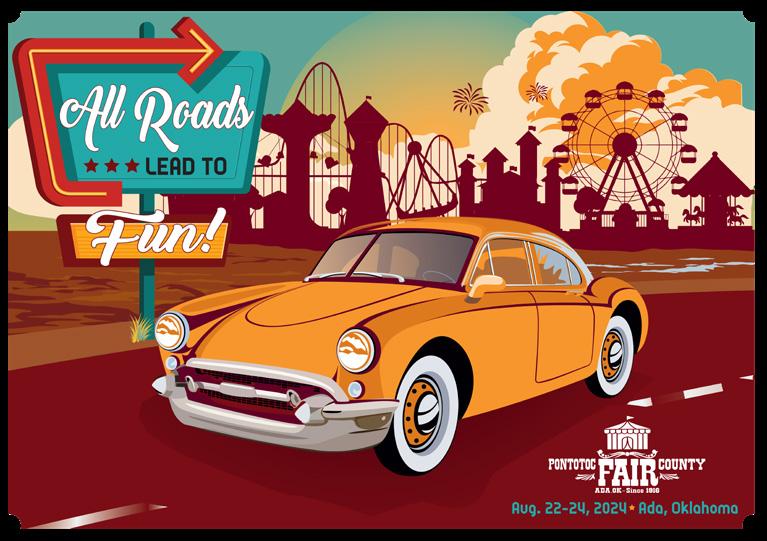
8. Any member of the fair association shall have access to all premises of any character of the fairgrounds or concessions at any time during the fair.
9. The decision of the judge shall be final, and no appeal will be considered.
10. The executive board reserves the final and absolute right to determine all questions regarding the eligibility of entries and the awarding premiums.
11. No claim for injury to any person or property shall ever be asserted for suit instituted or maintained against the Free Fair Association, its officers or their agents, on behalf of any person, firm, corporation, or their agents, representatives, servants or employees, having a license or privilege to exhibit on the fairgrounds or to occupy space thereon.
12. No premium will be awarded on articles not mentioned in the schedule of premiums.
13. All premiums will be paid as soon as possible after the close of the fair. In paying premiums, the evidence of award will be the superintendent book.
14. All rules that are applicable shall be made a part of all contracts made with concessionaires.
15. A superintendent will be appointed for each department, whose duty it shall be to receive the exhibits, properly classify and place them, and to assist the judges.
16. All livestock entered in the fair must be in a healthy condition.
17. If the premiums won at the fair exceed the amount set up in the budget, the fair board reserves the right to prorate the premium money to the winners.
18. Premiums will not be paid on any exhibit removed from the fair prior to release date and hour of each department.
19. Exhibits will receive awards and premiums according to the judge’s decisions of worthiness regardless of number of exhibits in a class.
20. The owner of an open exhibit must be a resident of Pontotoc County or member in good standing of the Pontotoc County OHCE. The junior show is open to all 4-H and FFA members of Pontotoc County who meet age and membership guidelines established by the 4-H Clubs and FFA Chapters in Pontotoc County.
21. Exhibits exhibited in the previous fairs or “updated” items are not eligible. Violations will be disqualified with no premiums paid. All decisions are final.
22. All animals remain penned or tied in appointed stalls Friday from 9 a.m. to 2 p.m. due to children’s day at the fair.
23. All Livestock Show will adhere to OYE Rules. OYE Rules can be found at https://okyouthexpo.com/show-information/ rules/
24. All trailers must park in assigned area. Vehicles left inside the barns or alley way anytime during fair hours will be towed at owner’s expense.
Entry Forms on website: www.pontotoccountyfair.com or OSU Ext. office
PAWS Dog Show, Thursday, August 22
Superintendent: Jane Johnston
Registration: 5 p.m. Big Red Barn Contest: 6 p.m.
Categories: Most Appropriate Named, Dog Owner look-a-like, Best Trick, Best Behaved, Best Dressed
Dog Race, Thursday, August 22
7:30 p.m. Big Red Barn
Goat Fitting Contest, Friday, August 23
Superintendent: Odie Heck
Registration: August 9, 5 p.m. Big Red Barn Contest: 5 p.m. Big Red Barn
Cattle Fitting Contest, Friday, August 23
Superintendent: Odie Heck
Registration: August 9 Contest: 6 p.m. Big Red Barn
Antique Tractor Show, Big Red Barn
Sponsored by Hisle Brothers
Registration Due August 9 Entry Form: http://pontotoccountyfairada.com/
Check & move in:
Thursday, August 22, 1 p.m. – 4 p.m. Friday, August 23, 8 a.m. – 2p.m.
Viewing Hours: Friday, August 23 4 p.m. – 8 p.m. Saturday, August 24 10 a.m.- Noon
Kids Pedal Tractor Pull Friday, August 23
Superintendent: Ernie Chupp
Announcer: Danny Manuel
Registration: 6:30 p.m. Front of Outdoor Stage Contest: 7 p.m.
Age: 4 – 13 years old
Awards: 1st Place – Trophy, 2nd & Third ribbons, participation ribbons
How Sweet It Is, Friday, August 23
Superintendent: Janna Kelley
Registration: 6:30 p.m. Contest: 7 p.m.
Location: OSU Extension Kitchen Categories: Cakes, Pies, Candy, Cook’s Choice
Prize: Kitchen Aid Stand Mixer
Kids Ninja Warrior, Saturday, August 24
Superintendent: Danny Manuel
Registration: 1:30 p.m. Contest: 2 p.m.
Location: In the middle of the Livestock Barn
Age: Age 4-6 female and male, Age 7-9 female and male, Age 10-12 female and male
Corn Hole Tournament, Friday & Saturday
Superintendents: Charlie Pogue
Contest: 7 p.m. Friday August 23 Blind Draw
Location: Big Red Barn
Registration: 10 a.m. Saturday, August 24
Play starts at 11 a.m.
Locations: Big Red Barn
$20 for Singles and $40 for Doubles
Backyard division (those who don’t play in leagues)
Open Division Cash Prizes
Precious Baby Contest, Saturday, August 24
Superintendent: TBA
Registration: 10:30 a.m. Contest: 11 a.m.
Location: Convention Center Stage
Age: 3 years and under Categories: Cutest Casual Outfit, Cutest Fancy Outfit, Family look-a-like, Beach Baby & Photogenic
(Bring 4x6 or larger print of entered child) Awards: Trophies & Ribbons
Cosplay Costume Contest, Saturday, August 24
Superintendents: Sarah Jocie & Nelda Burrows
Registration: 1 – 3 p.m.
Cosplay Costume Craftsman Judging: 3 p.m.
Cosplay Costume Contest 4 p.m.
Location: Convention Center Stage
Entry Form: http://pontotoccountyfairada.com/ Categories: Overall Best in Show, Best Exhibition, Best Craftsman, Kids 14 & under
Social Media Photography Contest
Sponsor: Pontotoc County Fair Board
Deadline: 7 pm each night Thurs. Fri. Sat.
Image must be taken at the 2024 Pontotoc County Fair
All images will be copyright released
Jpg & Raws can be emailed to pontotocfair@gmail.com
Use Hash Tag: #pcfairadaok24 for FB or IG
Award: $50 each day of 2024 Pontotoc County Fair
Over-All Winner receives $150.00
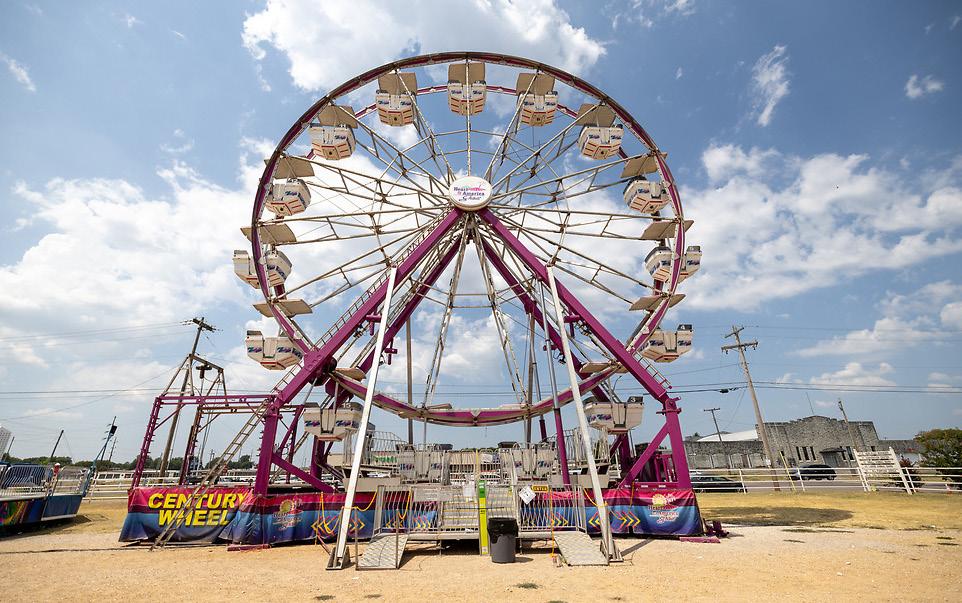
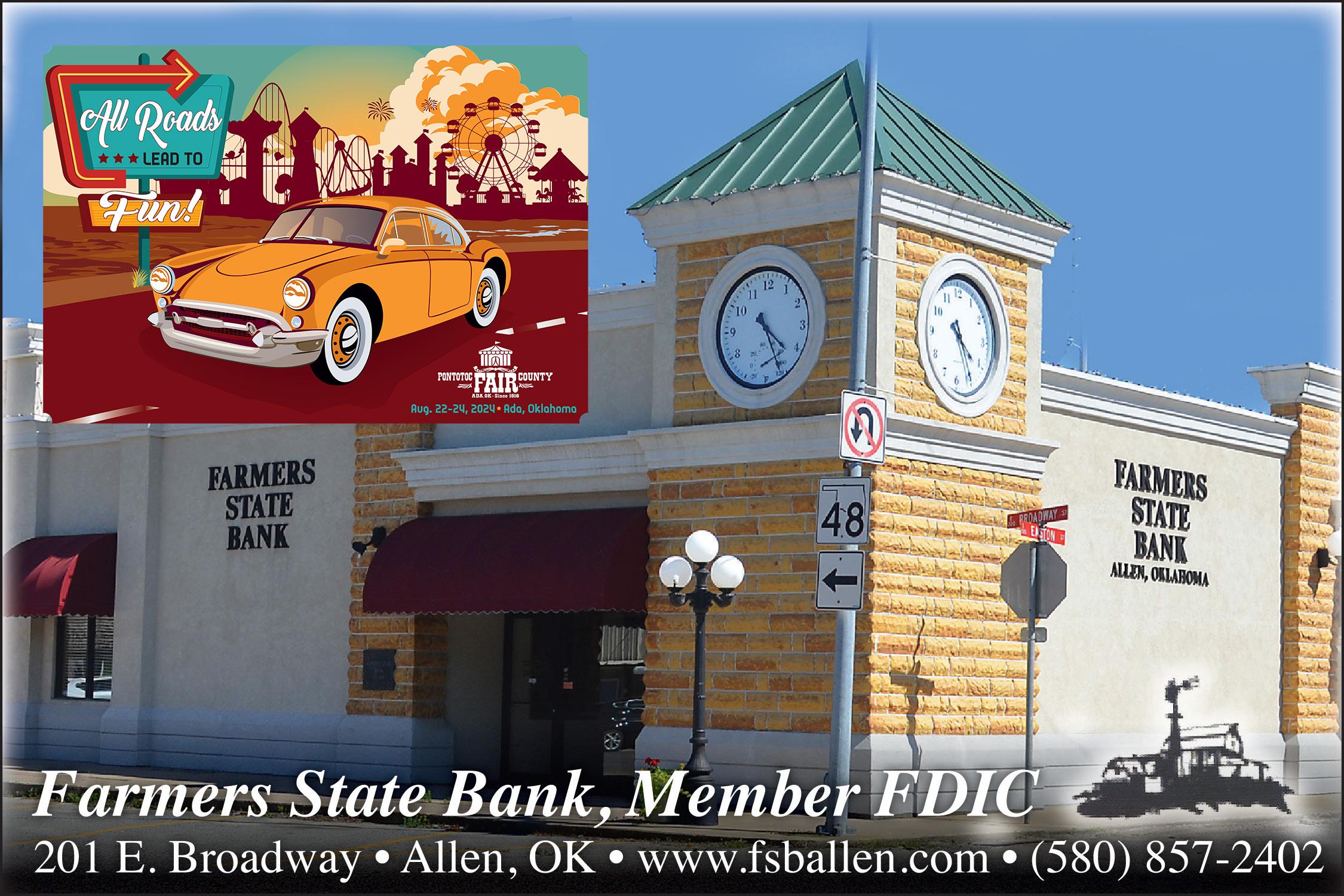
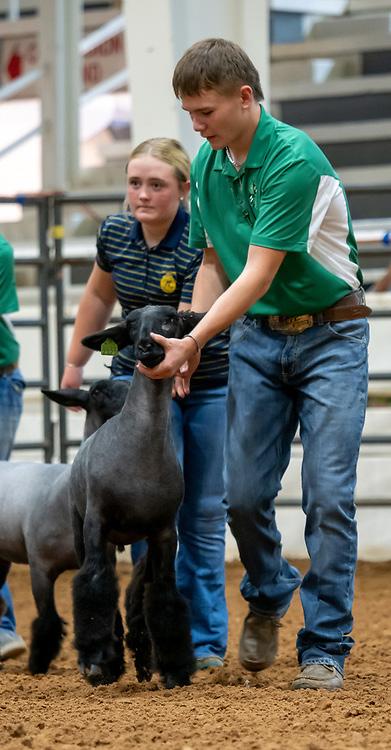
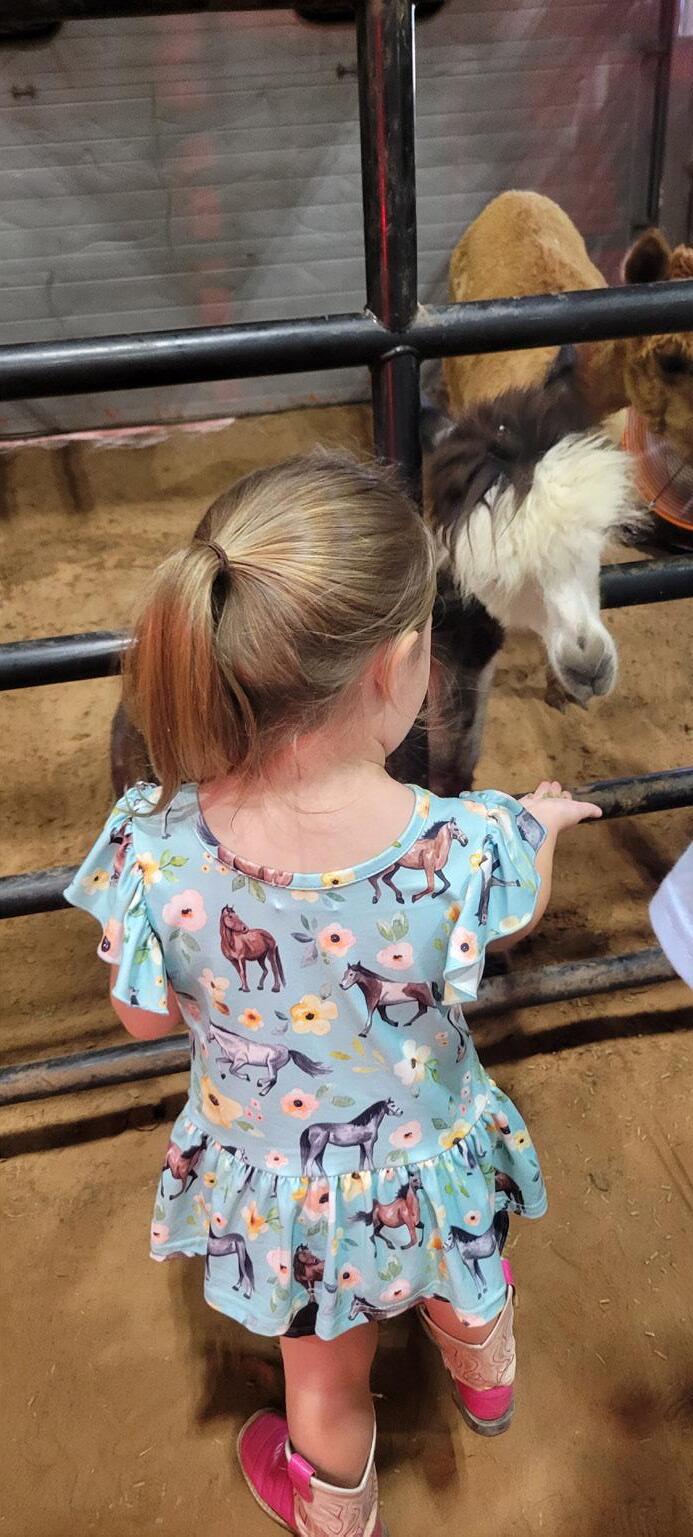















The RCB Band is an exciting band playing an extensive catalog of hit songs covering Classic Rock, Country, and Blues from the 60’s through today. The Band is from Allen, Oklahoma and was formed in 2019. Band members are a diverse group of talented musicians and singers who add their personal touch to the band’s songs, musical arrange-
Band Members include: Jennifer Caldwell (Vocals), Cara Belt (Vocals/ Rhythm Guitar), Al Giancotti (Hammond Organ/Keyboards), David Keith (Drums), Richard Laden (Rhythm Guitar), Mike Mitchell (Vocals/ Percussions), Ricky

We would love to entertain your audience or perform at your next event. To inquire about booking, please contact

Billy K Band has opened up for Cody Canada & The Departed, Little Texas, shared the stage with Ricochet and has opened acoustically for Duane O’ Brien of Little Texas, Zac Maloy of the Nixons and Grammy Award Winning Marcus Hummon. Nashville Debut “Outrun The Rain” in 2012 under AMC Nashville Records
Go Big or Go Home” under TMG Records in early 2016.



Cowboy Jim Garling and Susanne Woolley have been playing music together for over a decade. They met while working at the National Cowboy and Western Heritage Museum in Oklahoma City during their annual chuckwagon event held in May. They have been entertaining folks together since that time. Jim plays a swing style guitar while singing cowboy and western swing tunes. Susanne sets them afire with her amazing fiddle licks and vocal harmonies. We hope you can catch our show. Tap your feet, yell “yeehaw”, and sing along.
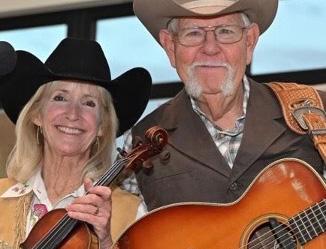
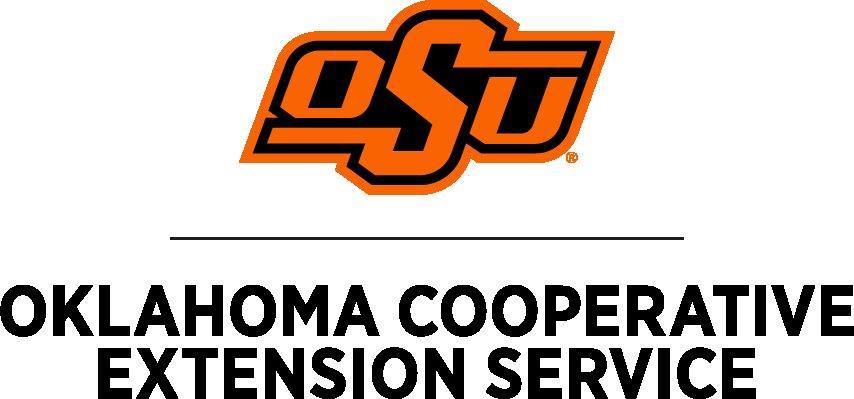


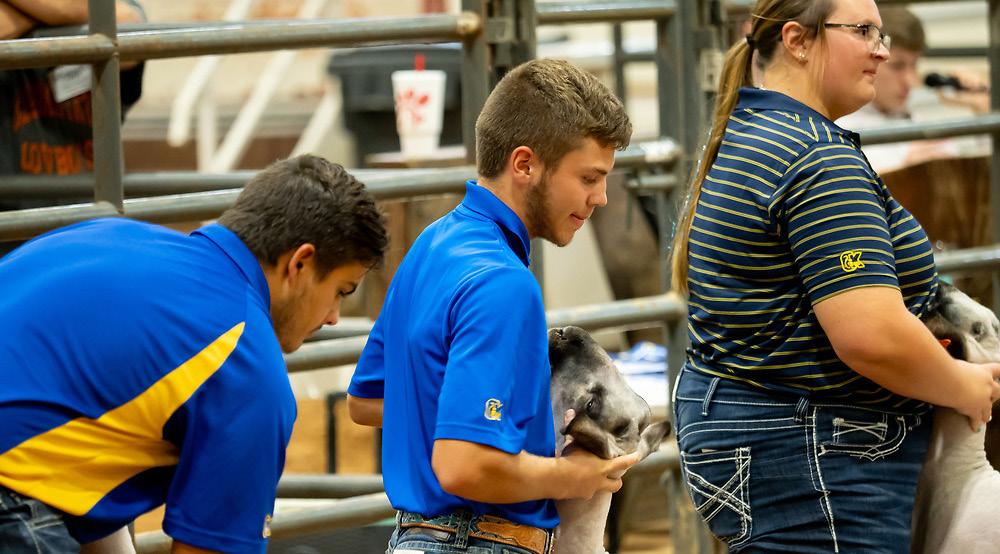
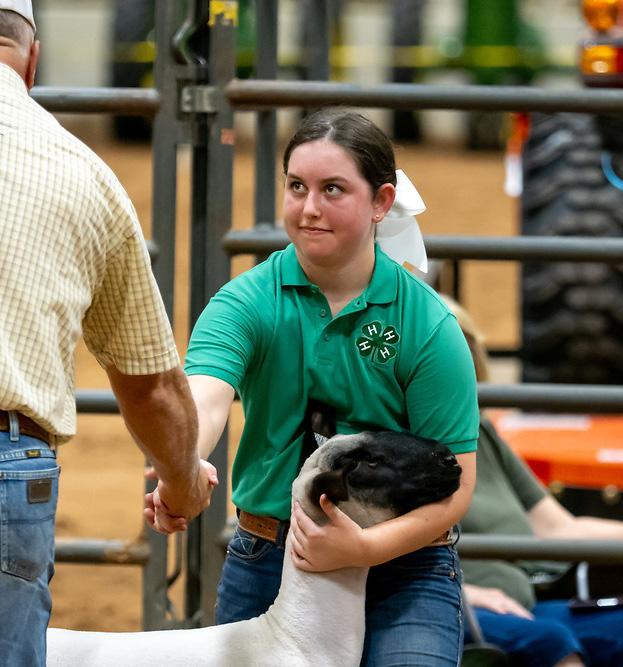
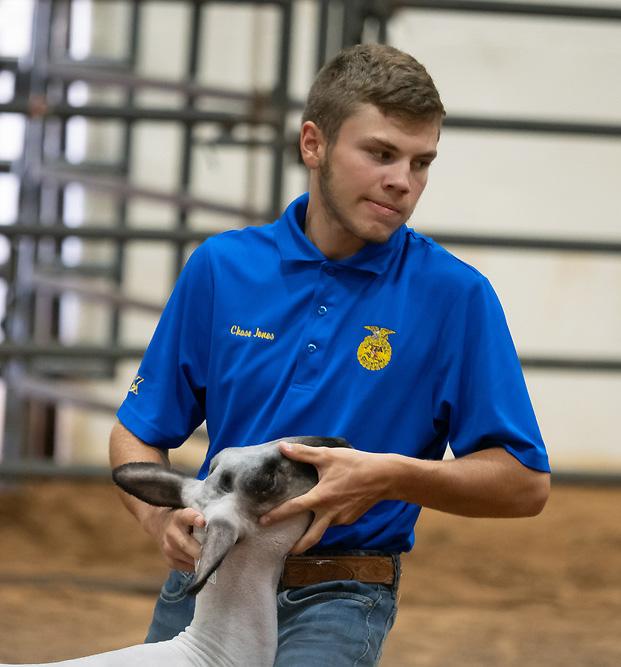

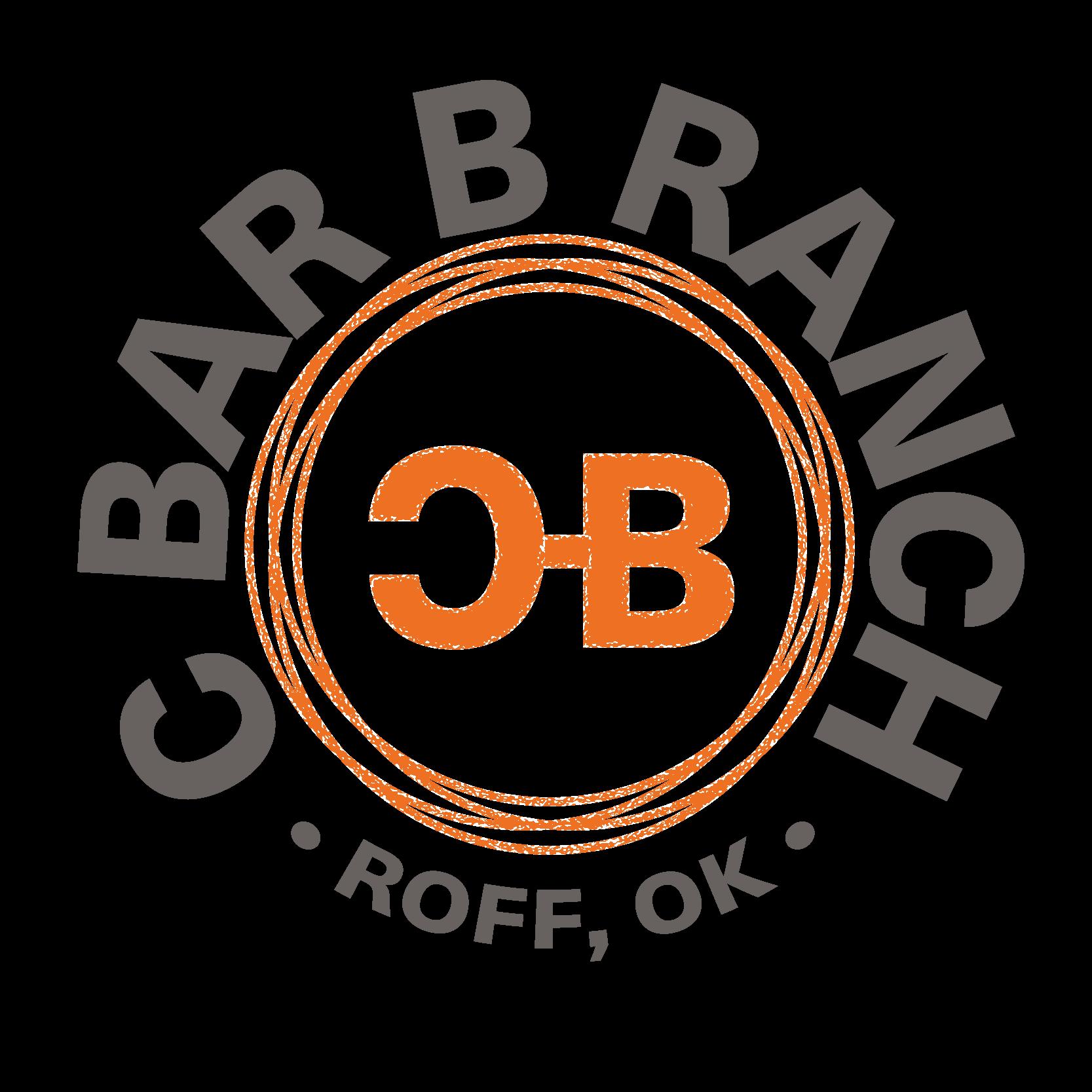




All Entries are made through pontotocfairada.fairentry.com
100
Superintendents: Bill Britt
Entries for the Open and junior horse show must be entered online by August 9th.
NO LATE ENTRIES ACCEPTED. No changes in classes or additions will be allowed after the entry deadline. All horses must check Coggins papers as soon as they arrive.
Open and junior horse exhibitors need to pre-enter. The same horse MAY be entered in the open and junior horse show but CANNOT be shown by the same exhibitor. A junior exhibitor may enter the open and junior show but must exhibit different horses. NO junior exhibitor can show the same horse in the open and junior show. All contestants may only exhibit one horse per class.
Premiums; 1st – $6 2nd - $4
1. Stallion Foal
2. Stallion (1 yr. old)
3. Stallion (2 yrs. Old)
4. Stallion (3 yrs. Old & over)
Champion Stallion – Ribbon
Reserved Champion Stallion – Ribbon
5. Weanling filly
6. Mare (1 yr. old)
7. Mare (2 yrs. old)
8. Mare (3 yrs. old)
Champion Mare – Ribbon Reserve Champion Mare – Ribbon
9. Gelding (1 yr. old)
10. Gelding (2 yrs. old)
11. Gelding (3 yrs. old & over)
Champion Gelding – Ribbon
Reserve Champion Gelding – Ribbon
12. Pony Halter (pony defined as equine not exceeding 54 inches at the withers)
13. English Pleasure Riding
14. Western Pleasure (Novice – Not won a ribbon before)
15. Western Pleasure (Open)
16. Open Horsemanship
17. Reining
18. Trail Class
19. Barrel Racing
SECTION 101: OPEN BEEF CATTLE
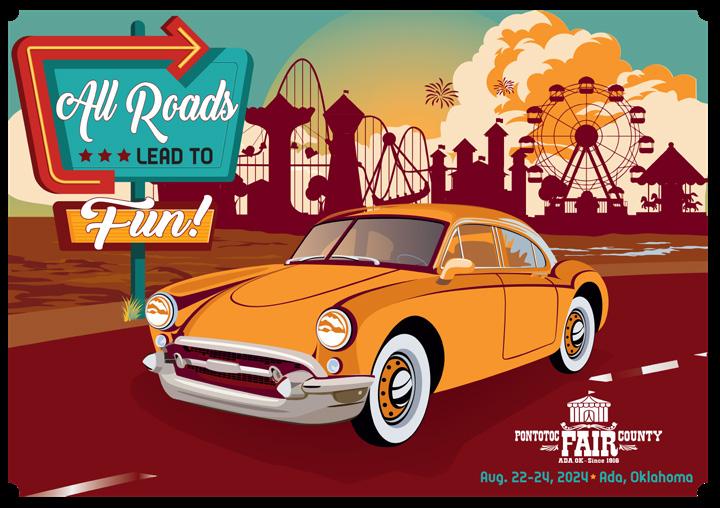
Superintendent: Rindy Bacon
Premiums: 1st -$6; 2nd $4
1. Bull Calves (under 1 yr of age)
2. Bull Yearlings (1-2 yrs of age)
3. Bulls (over 2 yrs. of age)
Champion Bull – Ribbon
Reserve Champion Bull – Ribbon
4. Heifers (under 1 yr. of age)
5. Heifers (1-2 yrs. of age)
6. Cows (over 2 yrs of age)
Champion Female – Ribbon Reserve Champion Female – Ribbon PeeWee Beef Showmanship – Ribbon
SECTION 103: OPEN SWINE
Superintendents: Brady Jennings
All Swine must be pseudorabies tested after June 1, 2024. 175 lbs. minimum weight
Premiums: 1st-$6; 2nd - $4
1. Junior Gilt (born in March or April this year)
2. Senior Gilt (born in Jan. or Feb. this year)
Champion Gilt – Ribbon
Reserve Champion Gilt – Ribbon Peewee – Showmanship
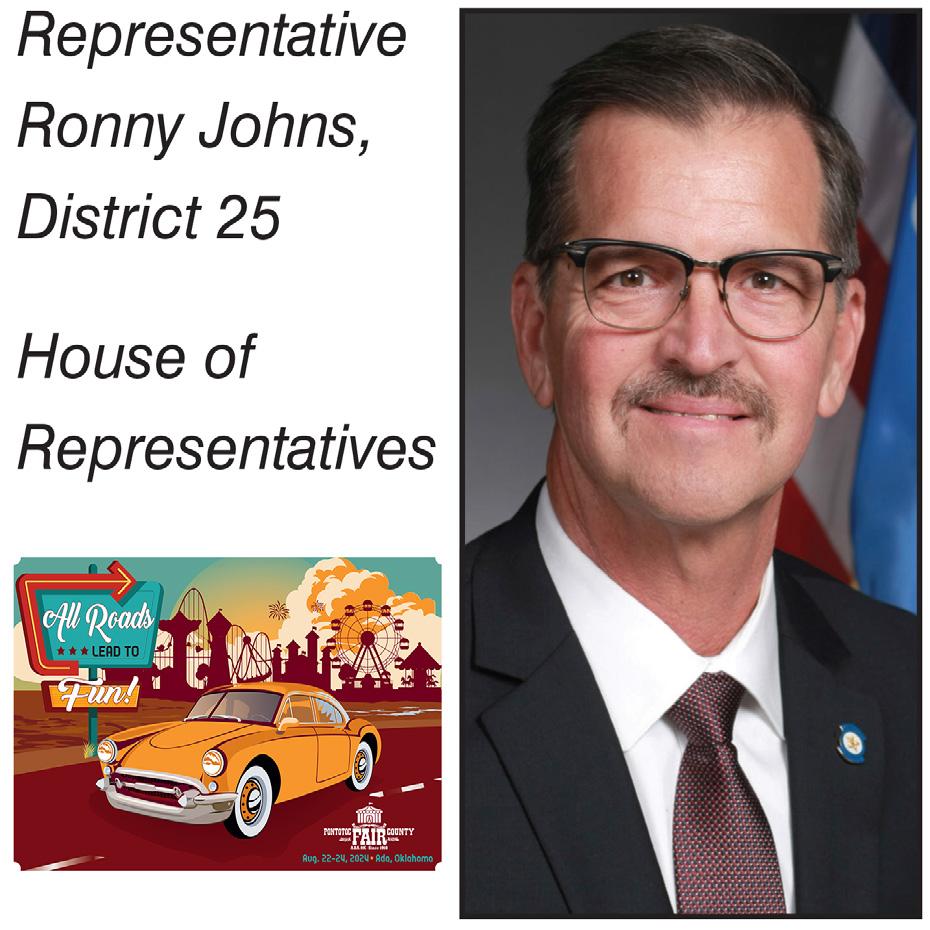
Superintendent: Bill Britt & Rick Fraizer
All sheep must have a scrapies ear tag. OYE Rules will apply to show.
Premiums; 1st - $ 6; 2nd - $4
1. Ram Lamb (under 1 yr. of age)
2. Ram (over 1 yr. of age)
Champion Ram – Ribbon
Reserve Champion Ram – Ribbon
3. Ewe Lamb (under 1 yr of age)
4. Ewe (over 1 yr of age)
Champion Ewe – Ribbon
Reserve Champion Ewe- Ribbon
5. Market Wether Lambs
6. Peewee Sheep Showmanship – Ribbon
SECTION
Superintendent: Justin Smith
Premiums: 1st-$6; 2nd - $4
MILK GOATS
Classes will be provided for Alpines, Nubians, Sannens, Toggenburgs and LaManchas. Ribbons only will be awarded.
1. Doe, Age 3-6 months
2. Doe, Over 6 months
3. Doe, Yearling
4. Doe Milker (Will be divided if numbers allow – freshened or non-freshened)
Champion Overall Milk Goat
Reserve Champion Overall Milk Goat
OPEN PYGMY GOATS
Ribbons only will be awarded Pygmy Goats
OPEN MEAT GOATS
Ribbons only will be awarded Market Wethers
OPEN DOE CLASSES
5. Milk Tooth
6. Yearling
7. Two-Year-Old
8. Aged
Champion Meat Doe
Reserve Champion Meat Doe
PEEWEE HANDLER
Peewee Handler, 6-8 Years (Doe or Wether)
Peewee Handler, 5 Years and Under (Doe or Wether)
Superintendents: Janice Hall & James Arnold
• NO LATE ENTIRES ACCEPTED
• All birds must be pre-entered online and pullorum tested or be from a certified NPIP flock. Birds will be tested and caged Wednesday, August 21st from 4-6 p.m., and barn will close after testing is completed. Testing will also be available Thursday from 10 – 12. Exhibits must be




in place by 12:00 noon. Exhibitors are responsible for proper classification of entries. Only breeds and varieties recognized by the American Poultry Association and American Bantam Association will be eligible for awards. Improperly classified exhibits may be disqualified by the judge. The decision of the judge is final. All sick or suspect animals will be removed. Exhibitor will be limited to four birds per variety less than 1 year old.
• Coops will be allotted as entries are received, but exhibitors should be prepared to furnish their own cages if all fair-owned cages become full.
• Classes listed below will have divisions for (a) Cock (b) Hens (c) Cockerels (d) Pullets.
• Bring your own bedding, feed and water containers.
• Premiums will be paid to first, second and third place birds, providing there are three or more birds judged in that sex and variety. Where less than three birds judged in a sex and variety, premiums will not be paid and ribbons only will be awarded.
Premiums: 1st- $1.50-; 2nd - $1; 3rd - .50
LARGE FOWL
1. American Class
2. English Class
3. Asiatic Class
4. Continental Class
5. Mediterranean Class
6. All Other Standard Breeds
BANTAM FOWL
7. Single Comb Clean Legged
8. Rose Comb Clean Legged
9. Feather Legged
10. Old English Game
11. Modern Game
12. All Other Comb Clean Legged
WATERFOWL
13. Bantam Ducks
14. Light Ducks
15. Medium Ducks
16. Heavy Ducks
TURKEYS
17. Turkeys
Poultry Showmanship-Must pre-enter when entries are turned in. Will begin after completion of judging.
Pre-Junior- (5-7), Junior- (8-10), Intermediate (11-13), Senior (14-18)
EGG SHOW
Ribbons only will be awarded. An Entry will consist of three eggs from same variety and will be judged for Shell Color, Shape, Texture, and Uniformity. Entry Judging Cards will be provided at check in, as well as plates for displaying the entry.
Premiums: 1st- $1.50-; 2nd - $1; 3rd - .50

Open Rabbits
Superintendent: TBD
An exhibit shall consist of one rabbit at least 6 months of age.
All rabbits must be pre-entered.
Entires must be completed online. NO LATE ENTRIES.
• Coops will be allotted as entries are received, but exhibitors should be prepared to furnish their own cages if all fair-owned cages become full.
• Classes listed below will have divisions for (A) Bucks & (B) Does.
• Bring your own bedding, feed and water containers.
Premiums: 1st -$1.50; 2nd - $1; 3rd - $1
18. Market Class (Meat)
19. Fur Class
20. Fancy Class
Rabbit Showmanship-Must pre-enter when entries are turned in. Will begin after completion of judging.
Pre-Junior- (5-7), Junior- (8-10), Intermediate (11-13), Senior (14-18)
Superintendents: James Dowell, Pontotoc County Master Gardener’s
All products must have been grown in Pontotoc County this year and produced by the exhibitor.
Premiums: 1st - $1.50; 2nd - $1; 3rd .50
1. Yellow Corn (10)
2. White Corn (10)
3. White Grain Sorghum (10)
4. Colored Grain Sorghum (10)
5. Wheat, any variety (1 peck)
6. Spanish Peanuts (1 peck)
7. Soybeans (1 peck)
8. Alfalfa (2 quarts)
Superintendents: James Dowell, Pontotoc County Master Gardener’s
Premiums: 1st - $1.50; 2nd - $1; 3rd - .50
1. Red Apples (5)
2. Yellow Apples (5)
3. Pears (5)
4. Red Irish Potatoes (5)
5. White Irish Potatoes (5)
6. Gold Sweet Potatoes (5)
7. Red Sweet Potatoes (5)
8. White Onions (5)
9. Yellow Onions (5)
10. Red Onions (5)
11. Watermelon, oblong (1)
12. Watermelon, round (1)
13. Watermelon, small ice box (1)
14. Cantaloupes (1)
15. Pumpkin, field type (1)
16. Pumpkin, round & Flat (1)
17. Pumpkin, pie type (1)
18. Squash, winter, acorn (1)
19. Squash, winter, other (2)
20. Squash, summer yellow straight neck (2)
21. Squash, summer yellow crook neck (2)
22. Squash, summer zucchini (2)
23. Okra (6)
24. Peppers, Jalapeno (5)
25. Peppers, small hot (5)
26. Peppers, large hot (5)
27. Peppers, sweet bell (5)
28. Peppers, sweet banana (5)
29. Tomatoes (5)
30. Tomatoes, cherry (5)
31. Ornamental Gourds (1)
32. Cucumbers (3)
33. Other items not listed
SPECIAL AWARD
BIG PUMPKIN
WATERMELON
Pontotoc Master Gardeners has agreed to provide $20 awards for the largest (by weight) for each of the 4 above categories. Each exhibit will be placed in the appropriate classes. Entries from both the junior and open division will be eligible for these awards.
Superintendents: James Dowell, Pontotoc County Master Gardener’s
• Only one (1) exhibit allowed in each class per individual.
• Honey should be placed in colorless, one-pint honey jars or standard, colorless one-pint fruit jars such as those made by Kerr, Ball, Mason, etc. Other types of jars will be rejected. Jar covers should be new if possible and should be screwed on tightly to prevent leakage. There should 1/4”-1/2” air space below the lid.


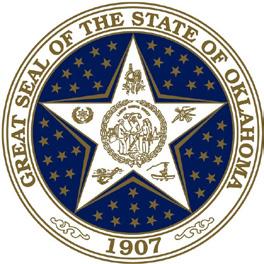

• Honey should be clear and free from foreign particles
• Comb honey should be perfectly capped, free from stains, bee-bread and finger prints. Edges should be cleancut, not ragged. One (1) piece only in each jar; as wide as jar mouth will permit and 3.5-4” in length.
Premiums: 1st $1.50; 2nd - $1; 3rd - .50
1. Light Comb Honey
2. Light Extracted Honey
3. Medium Comb Honey
4. Medium Extracted Honey
5. Dark Comb Honey
6. Dark Extracted Honey
All Entries are made through pontotocfairada.fairentry.com
The rules and regulations of the Pontotoc County Free Fair shall apply to these departments. An exhibitor may have only one entry in a class
All exhibits must have been made since the last county fair and must be the work of the person exhibiting them. All entries will be taken on Wednesday, August 21st from 3 – 7 p.m., and will be released at 9 a.m., Monday, August 26th.
Superintendent: Glenda Oliver
All food items must be displayed on a DISPOSABLE cardboard or paper plate. Covered with plastic bag or Ziploc bags. Cakes, pies or breads may be picked up at 1 p.m., Thursday. One slice will be kept for display. Food that does not place will be discarded after the fair. Premiums; 1st -$1.50; 2nd $1; 3rd - .50
1. One loaf of White Yeast Bread
2. One loaf of Other Yeast Bread
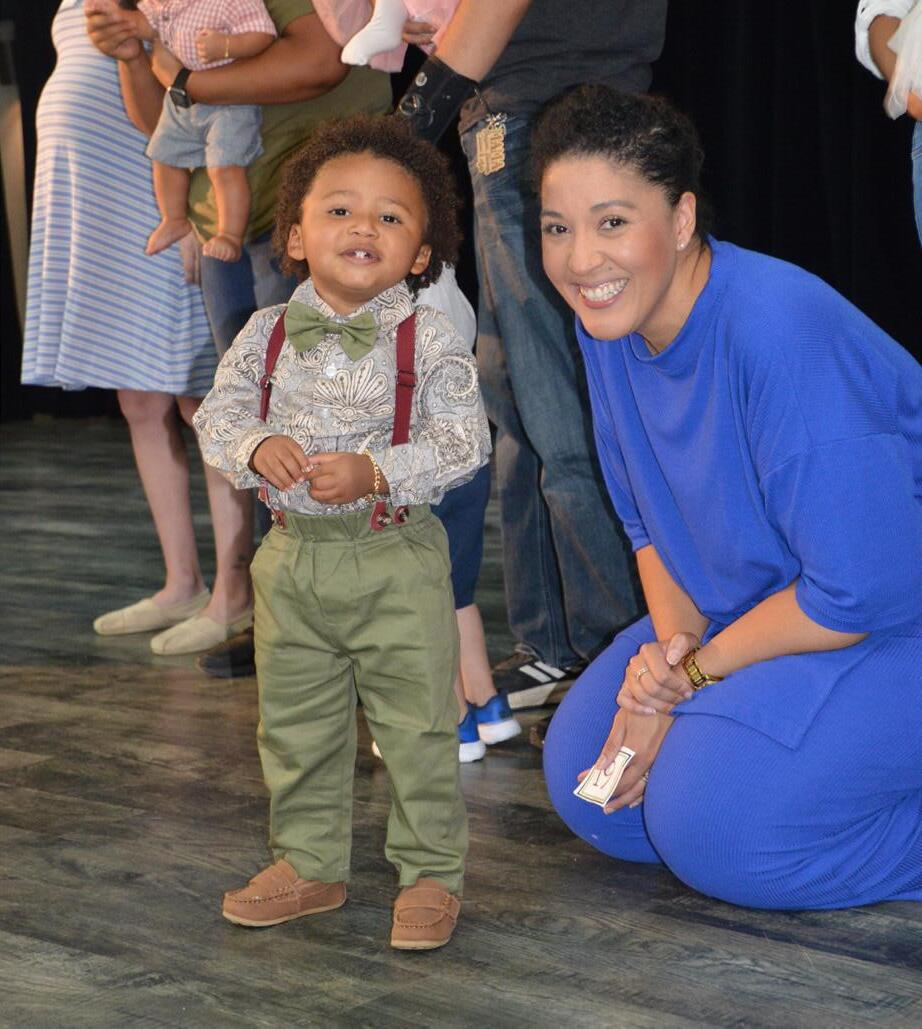

3. One loaf Bread Machine Bread
4. Plain Yeast Rolls (3)
5. Cinnamon Yeast Rolls (3)
6. Other Yeast Rolls (3)
7. Loaf of Quick Fruit &/or Nut Bread (sweet)
8. Quick Bread Muffins (3)
9. Other Quick Bread
10. Biscuits (3)
CAKES
11. Angel Food Cake without icing
12. Apple Cake
13. Pound Cake
14. Other Loaf Cake
15. Cake made with Prepared Mix
16. German Sweet Chocolate Cake
17. Devil’s Food or Chocolate Cake
18. Coconut Cake
19. Banana Nut Cake with Icing
20. Other Layer Cake
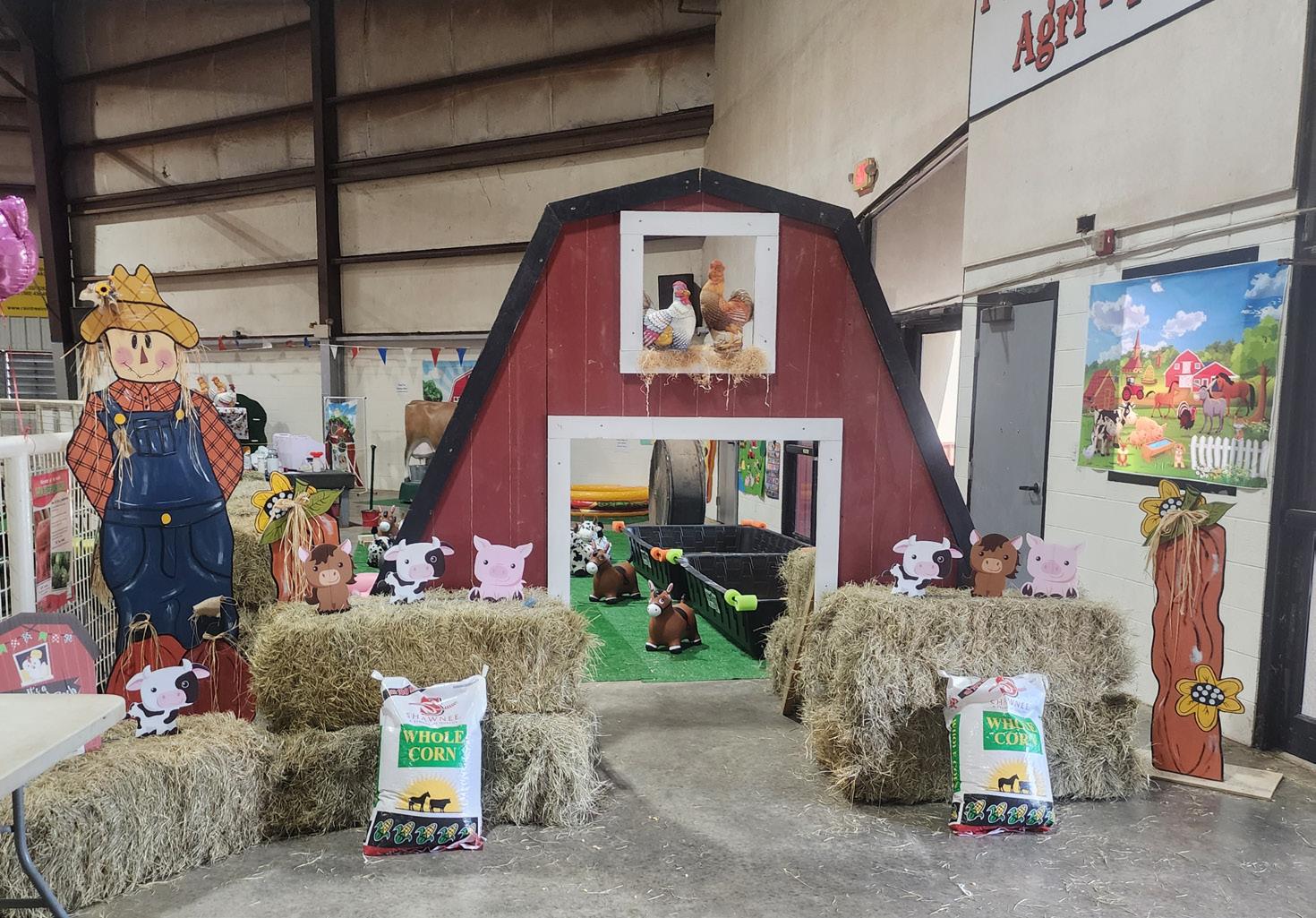
21. Pecan Pie
22. Fruit Pie
23. Sugar Cookies (3)
24. Peanut Butter Cookies (3)
25. Brownies (3)
26. Ice Box Cookies (3)
27. Chocolate Chip Cookies (3)
28. Other Cookies (3)
HOMEMADE CANDIES
29. Old Fashion Chocolate Fudge (3)
30. Marshmallow Cream Fudge (3)
31. Divinity (3)
32. Peanut Candies (3)
33. Nut Brittle (3)
34. Other Candy (3)
35. Pecan Candy (3)
JUNIOR FOODS FOR EXHIBITORS AGE 13 & UNDER
36. Brownies (3)
37. Peanut Butter Cookies (3)
38. Chocolate Chip Cookies (3)
39. Rolled Sugar Cookies (3)
40. Other Cookies (3)

Best of Wheat Bread Baking Contest
Sponsored by the Oklahoma Wheat Commission
Senior Division
Junior Division (18 years and older) (Under 18 years of age at time of county entries) Class
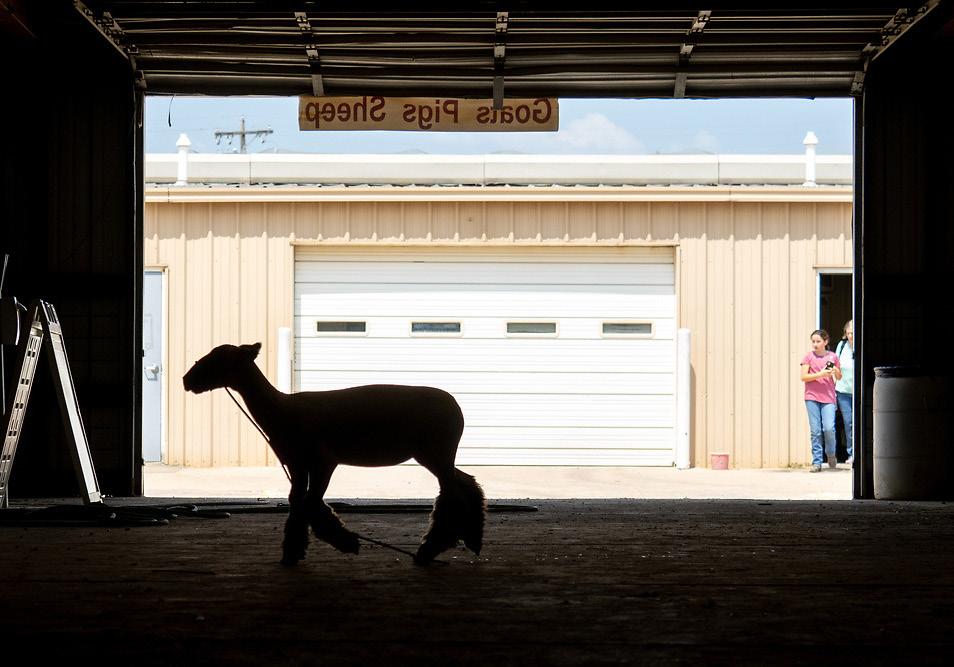

43.
44. Other Wheat Breads 50.
45. Sweet Breads
46. Bread Machine
County winners (excluding bread machine class) will receive awards from the Oklahoma Wheat Commission. Recipe must accompany entry.
State Contest will be held September 22th at the Oklahoma State Fair. Participants are responsible to take their own entries to this competition.
Superintendents: Jodie Langwell & Darrell Langwell
To be exhibited in regulation Ball or Kerr half-pint, pint or quart jars. All can items must use the proper headspaces deemed by the USDA; ¼” for jams and jelly, ½” for fruits & tomatoes, 1” for low acid foods.
Jars must be clean and ready to show. Visible rust on the lid or rings is an automatic disqualification.
Premiums: 1st - $1.50; 2nd - $1; 3rd - .50
1. Apples
2. Berries
3. Peaches

Pears
5. Other Fruit
6. Jr. Division (13 & under)
7. Cherries
VEGETABLES
8. Green or Wax Beans
9. Beets
10. Carrots
11. Corn
12. Blackeye or Field Peas
13. Potatoes
14. Cubed Pumpkin
15. Sauerkraut
16. Tomatoes
17. Tomato Juice
18. Tomato Sauce
19. Mixed Vegetables
20. Other Vegetables
21. Jr. Division (13 & under)
22. Stewed Tomatoes
PESERVED, BUTTER, JAM, MARMALADE, JELLIES
23. Cherry Preserves
24. Peach Preserves
25. Pear Preserves
26. Strawberry Preserves
27. Other Preserves
28. Apple Butter or Sauce
29. Other Fruit Butter or Sauce
30. Apricot Jam or Marmalade
31. Berry Jam or Marmalade
32. Pear Honey, Jam or Marmalade
33. Other Jam or Marmalade
34. Apple Jelly
35. Berry Jelly
36. Grape Jelly
37. Plum Jelly
38. Peach Jelly
39. Pear Jelly
40. Other Jelly
41. Jr. Division (13 & under)
PICKLES, RELISH & SAUCE
42. Beet Pickles
43. Bread & Butter Pickles
44. Sweet Cucumber Pickles
45. Dill Cucumber Pickles
46. Pickled Fruit
47. Mixed Vegetable Pickles
48. Pepper Pickles
49. Okra Pickles
50. Other Pickles
51. Chow Chow or Piccalilli
52. Picante Sauce
53. Salsa
54. Jalapeno Slices
55. Corn Relish

56. Pepper Relish
57. Other Relish
58. Other Sauce
59. Jr. Division (13 & under)
DRIED PRODUCE (1/2 CUP REQUIRED WITH NAME ON LABEL)
Shown in a regulation jar. ½ pint or pint Ball or Kerr Jars only
60. Dried Fruits
61. Dried Vegetables
62. Dried Herbs
63. Dried Peppers
64. Other Dried Vegetables
SECTION 206: CLOTHING
Superintendents: Jeralee McNeil Premiums: 1st $1.50; 2nd - $1; 3rd - .50
1. Apron
2. 1 Piece Sportswear
3. Pants or Shorts
4. 2 or More Pieces Sportswear
5. Dress of Cotton or Blend
6. Dress for Best Wear
7. Dress or Ensemble of Knit
8. Blouse or Shirt (Lady’s)
9. Blouse or Shirt (Men’s)
10. After 5, Dress or Ensemble
11. Coat or Suit (Adult)
12. Hand Appliquéd Garment
13. Machine Appliquéd Garment
14. Hand Embroidery Garment
15. Machine Embroidery Garment
16. Decorated Garment
17. Painted Garment
18. Lingerie or Sleepwear
19. Ladies Skirt
20. Infant’s Garment (under size 2)
21. Girl’s Dress (size 2 to 12)
22. Children’s Play Wear – Boy’s (1 or 2 pieces)
23. Children’s Play Wear – Girl’s (1 or 2 Pieces)
24. Belts 25. Purses 26. Hand Knitted Garment
Machine Knitted Garment
Crocheted Garment 29. Wool or Wool Blend Garment
Boy’s Wear
Recycled Clothing
Fabric Scarf
or Shorts
39. 2 or 3 Piece Sportswear coordinates
Wool or Wool Blend Garment 41. Clothing Articles other than above
Superintendents: Emmelen Allen & Jeralee McNeil All articles must have been made since the last county fair. Premiums: 1st - $1.50; 2nd - $1; 3rd - .50
Table Cloth
Crochet Table Cloth
Pillow Cases (2)
Crochet Afghan (granny squared)

Ada’s only full-service funeral home with in-house cremation services and local cemetery property. It would be our privilege to assist you throughout the process.
Smith-Phillips Funeral Home 123 East 13th Street Ada, Oklahoma (580) 332-6011 smithphillips@phillipsfuneralservice.com
Stout-Phillips Funeral Home 409 Wewoka Street Wewoka, Oklahoma (405) 257-3321 stouth@phillipsfuneralservice.com
Hudson-Phillips Funeral Home 310 East Main Street Holdenville, Oklahoma (405) 379-5422 hudson@phillipsfuneralservice.com



30. Appliquéd Quilt
31. Hand Pieced Quilt
32. Hand Quilted Quilt
33. Any Other Type New Quilt
34. Bedspread
35. Refinished or Upholstered Piece of Furniture
36. Quilt Top (not quilted)
37. Machine Pieced Quilt
38. Machine Embroidery Quilt
39. Hand Embroidery Quilt
40. Jr. Quilt (quilt completed under the age of 12)
NURSING
41. Apron
42. Crochet (any article)
43. Embroidery (any article)
44. Knitting (any article)
45. Decorative Pillow
46. Quilt
47. Crafts
48. Other Handwork
Superintendents: Jessie Welch & Jan Nessel
All articles must be the work of the exhibitor and made since the last county fair.
Premiums: 1st - $1.50; 2nd - $1; 3rd - .50
1. Glazed Ceramic (1)
2. Antique or Detailed Stained Ceramic (1)
3. Dry Brush Ceramic (1)
4. China Painting
5. Wood Craft

6. Wood Turned Closed/hollow form (opening is 1/3 or less than diameter of piece)
7. Wood Turned Bowl
8. Wood Turned Platter
9. Wood Turned Writing instrument
10. Wood Turned Lidded container
11. Wood Turned Ornament
12. Wood Turned Segmented piece
13. Wood Turned Spindle pieces (turning between centers)
14. Wood Turned Miscellaneous
15. Nature Art
16. Wood Carving
17. Wall Hanging (not a painting)
18. Wall Hanging (Wreaths)
19. China Doll (1)
20. Handmade Doll (1)


21. Tole Painting
22. Plaster Craft
23. Glass Craft
24. String Art
25. Framed or Box Collection
26. Other Collection (10 items or less)
27. Miscellaneous Craft
28. Recycled Craft
29. Paper Craft
30. Jewelry
31. Beadwork
32. Hand & Loom Work 33. Native American Art 34. Miniature Craft
35. Diorama
36. Scrapbook
37. Scrapbook Page (any subject)
38. Leather Craft
39. Rubber Stamping
40. Basket Weaving
41. Plastic Canvas Craft
42. Barn Quilt (any size)
JUNIOR CRAFT
(For exhibitors 13 years of age & under)
43. Ceramics
44. Wood Craft
45. Plastic or Plaster Craft
46. Collections
47. Leather Craft
48. Glass Craft
49. String Art

50. Paper Craft
51. Craft (other than above)
52. Diorama
53. Craft Item made from Duct Tape
54. Lego Craft – (Large above 12”)
55. Lego Craft – (Small under 12”)
(Lego Crafts must be glued and displayed on a base)
FLOWER ARRANGEMENTS
(Not a growing house plant)
56. Fresh Flower Arrangement
57. Dried Flower Arrangement
58. Silk Flower Arrangement
JUNIOR
(For exhibitors 13 years of age or under)
59. Fresh Flower Arrangement
60. Artificial Arrangement

















































































































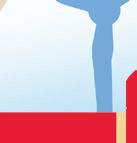
















































































HOLIDAY PARADE
62. Christmas Tree Skirt
63. Christmas Tree Ornament
64. Christmas Stocking
65. Holiday Candle Holder
66. Holiday Table Cloth
67. Holiday Table Runner
68. Holiday Wall Hanging
69. Holiday Yard Ornament
70. Holiday Wreath 71. Holiday Ceramics
72. Holiday Centerpiece
73. Other Holiday Decoration
74. Holiday Placemats (2)
SECTION 209: ART
Superintendent: TBD Premiums: 1st - $1.50; 2nd - $1; 3rd - .50
All articles must have been made since the last county fair. Exhibitors will be only allowed one entry per class. No Art allowed large than 20” x 24” Art can be framed, but NO GLASS allowed in frames
OILS, ACRYLICS OR PASTELS 1. Portrait 2. Portrait – Water Color 3. Portrait – Pencil

30. Sculpture
31. Art on Nature Item
PAINTINGS BY JUNIOR ARTISTS
(For exhibitors 13 years of age & under)
32. Portrait
33. Landscape, Seascape, etc.
34. Still Life
35. Animal
36. Abstract
37. Pencil
38. Ink
39. Charcoal
40. Paint by Number or Kit
41. Age 5 & under (size limited to 8 1/2 “x 11”)
Participation Ribbons only.
SECTION 210: PHOTOGRAPHY
Superintendent: Bryant Kelley
• Only amateur photographers may enter. An amateur is a person who derives no more than 10% of their income from photography.
• Pictures must be 5” x 7” and matted on a 8” x 10” backing
• Overall impact of the photo will be considered
Floral – Water Color 18. Floral – Pencil
Animal – Water Color 21. Animal – Pencil
23. Abstract – Water Color
Abstract – Pencil 25. Western Art
Western Art – Water Color 27. Western Art – Pencil
• Black and white and color photos will be accepted (except in Class 10 & 21)
• Photos must be titled or identified on the front
• Limit entries to not more than 1 per class. Entries may be reclassified if deemed advisable by superintendent.
17 Years old and Under Class 1 -12
1. Nature (animals, birds, insects, etc.)
2. Action
3. Scenic or Landscapes
4. Flowers
5. Geometric, textures, patterns or lines
6. Patriotic
7. People
8. Computer enhanced (anything that modifies the original image)
9. Events (people taking part in any type of event,
such as school, church, community, organizations, etc.)
10. Black and White
11. Picture Story (3 or more mounted on one stiff backing, not to exceed 18” x 24”)
12. Miscellaneous (anything else)
18 Years Old or Older (Classes 13 – 23)
13. Nature (animals, birds, insects, etc.)
14. Action
15. Scenic or Landscapes
16. Flowers
17. Geometric, textures, patterns or lines
18. Patriotic
19. People
20. Computer enhanced (anything that modifies the original image)
21. Events (people taking part in any type of event, such as school, church, community, organizations, etc.)
22. Black and White
23. Picture Story (3 or more mounted on one stiff backing, not to exceed 18” x 24”)
24. Miscellaneous (anything else)
6 years old and under
25. Miscellaneous
211: HOME & COMMUNITY EDUCATION
Superintendents: TBA
An OHCE group may enter one exhibit in each class. All entries must be made within the last year and made by the person exhibiting the item.
Premiums: 1st - $1.50; 2nd - $1; 3rd - .50; 4th - .50 5th .50
CANNING
Must be canned in regulation Ball or Kerr quarts, pints or half-pint jars.
1. Tomatoes or Tomato Juice
2. Other Vegetable
3. Juicy Fruit (berries, cherries, grapes, pineapple, plums)
4. Fleshy Fruit (apples, apricots, nectarines, peaches, pears)
5. Pickles or Relish
6. Jam, Jelly, Preserves
FOOD PREPARATION
One exhibit required for bonus points.
7. Yeast Dinner Rolls (3)
8. Iced Layer Cake (not a mix)
9. Loaf of Quick Bread (not yeast)
NOTE: HCE exhibitors may remove all but one piece of their food exhibit by 1 p.m. after judging on Thursday.
CLOTHING 10. Street Dress
or
(any



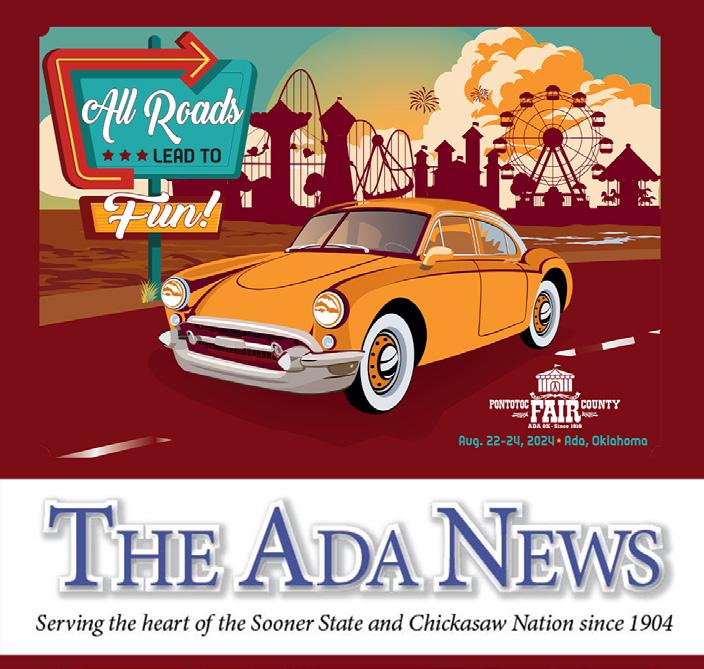

13. Men’s Wear (shirt, slacks, or suit)
14. Girl’s Sports (12 yrs. & under)
15. Girl’s Dress (12 yrs. & under)
16. Boy’s Wear (12 yrs. & under)
17. Lady’s Skirt
18. Lady’s Blouse
19. Lady’s Pants or Shorts
20. Framed Painting (oil, watercolor, charcoal, pastels)
21. Framed Picture (any needlework)
22. Quilted Wall Hanging
23. Any decorative Pillow
24. Baby Quilt
25. Decorative Accessory (Other)
26. Artificial or Dried Flower Arrangement
27. Stuffed toy (No Dolls)
28. Crochet or Knit Afghan
29. Hand Embroidery Article (including counted cross stitch)
30. Table Covering (cloth, runner, mats)
31. Furniture Renovation (A story of what was done must accompany the exhibit. Before and after pictures will help tell the story)
32. Dolls
33. Other Wall Hanging not listed OHCE History Book
• The history and accomplishments made this past year (September – August)
• Originality
• Neatness and attractiveness
• Story of Achievement (not to exceed 1,000 words)
• Good news coverage (community involvement)
• Pictures that tell a story
• Participation: County Fair, County Meetings, District Meetings, State OHCE Meeting, County Workshops, Leaders Lessons, Quilt Show and Other OHCE events.
• Pictures, newspaper articles and ribbons or winnings displayed in some way to show participation of members.
A champion ribbon will be awarded to the top HCE booth based on No.’s 1, 2, 3, above.
212: SPECIAL EXHIBITORS
Participation ribbons only
All articles in this class shall be made by residents of Pontotoc County that are considered special or developmental handicapped.
1. Cookies (3)
2. Cake (any kind)
3. Pencil Drawing
4. Watercolor
5. Paint by Number
6. Color Art
7. Other Craft Item
SECTION 213: FCCLA Premiums: 1st - $1.50; 2nd - $1; 3rd - .50
1. Jelly
2. Preserves
3. Salsa
4. Quick Bread
5. Yeast Bread
6. Chocolate Chip Cookies
7. No Bake Cookies
8. Party Cookies
9. Other Cookies
10. Any Cake (iced by not decorated)
11. Sewn Garment
12. Sew – Non clothing item
13. Recycled Item
14. Item made from duct tape
15. Quilt or Quilted item
16. Poster (any FCS subject)
17. FCCLA Notebook and display
18. Career Portfolio or career investigation
A. Grades 8 – 9
B. Grades 10 – 12
C. Job interview 10 – 12
19. Chapter Scrapbook
20. Other FCCLA Project including National Programs

General Superintendents: Extension Educators & Ag-Ed
Instructors
All Entries are made through pontotocfairada.fairentry.com
Peewee 8 and under
Jr. Classifies as Grades 3-5
Int. Classifies as Grades 6-8
Sr. Classifies as Grades 9-12
Rules & Regulations:
• Eligibility: This show is open to all 4-H and FFA members of Pontotoc County who meet age and membership guidelines established by the 4-H Clubs and FFA Chapters in Pontotoc County. Exhibitors who have graduated from High School prior to the current calendar year will not be eligible.
• Each junior exhibitor must be enrolled in each project or in a supervised farming program which he or she expects to exhibit in this department.
• Each junior exhibitor must have produced his own crop exhibit and must own and have daily care of any cattle, sheep, goats, swine, dairy, poultry or rabbits exhibited.
• Junior exhibitors may not enter the same exhibit in both the junior division and the open class.
• Junior exhibitors may exhibit only one exhibit in each class except livestock where each exhibitor may exhibit two entries in each class.
• Except for collections which are added to in successive years, no exhibit may be entered more than on time and exhibits must be made in the past year.
• All animals being exhibited at the Pontotoc County Fair are required to remain on the grounds until all entries have been released on Saturday by 11 a.m. or after their show has completed.
• If at any time the Fair Board deems temperature unsafe for the livestock, all animals will be released from the grounds.
Any violation of the following rules will automatically result in disqualification.
• The use of any drug or chemical compound that is not approved by the Food and Drug Administration for use in meat animals is prohibited. The illegal administration of approved drugs and compounds is also prohibited. All animals entered in the show are subject to blood, urine and tissue test by the show, FDA and USDA for illegal substance and substances that exceed the acceptable levels established by the United States Department of Agriculture, the Food and Drug Administration, the Food Animal Residue Avoidance Databank and the Environment Protection Agency. A positive test will result in disqualification. The exhibitor shall assure full responsibility for any violation or regulations related to drugs and medications to include withdrawal times and the condemnation of carcasses due to drug rule/regulation
violations. This includes forfeiture of all premiums and market values of the animal. All premiums will be withheld until tests have been completed.
• No hair coloring of any type will be allowed to be used on any exhibit above the flank of the animal. Added hair or other material, natural or man-made may not be used in the grooming of any entry. Any attempt to change the composition or appearance of any animal will result in disqualification. Grooming must be performed by the exhibitor, another exhibitor in the show, parent or legal guardian, or Ag Instructor (Professional Grooming is prohibited).
• Official dress or organizational clothing must be worn during the show.
All Other Rules will follow OYE Livestock Rules. Rules can be found at https://okyouthexpo.com/wp-content/uploads/2022/03/2022-Oklahoma-Youth-Expo-All-Species-Rulebook.docx-4.pdf
See Schedule for official check in and weigh in time. All animals must be checked in by the superintendent and weighed.
Superintendents: Bill Britt
The same horse may be shown in the open and junior show but not by the same exhibitor. Junior exhibitors may show in both the open and junior show but not with the same horse. No coaching of patterns from outside the ring. Awards will be given to overall High Point and Reserve High Point horse in each age division. No horse may cross enter a western pleasure class and a ranch horse riding class at the same show.
2022 Oklahoma State
4-H Horse Show Rules
Pg. 48. Rule 2.
No classes will be added after the entry deadline!
Premiums: 1st - $10; 2nd-$6; 3rd - $4 NO WEANLINGS OR STALLIONS IN THE JUNIOR SHOW
1. Mares (2 yrs of age & under)
2. Mares (3 yrs of age and over)
Champion & Res. Champion Mare – Ribbon
3. Gelding (2 yrs & under)
4. Gelding (3 yrs of age and over)
Champion & Res. Champion Gelding – Ribbon
5. Pony Halter (pony as defined equine not exceeding 54 inches at the withers)
6. Peewee Showmanship
7. Junior Showmanship (Buckle Award)
8. Senior Showmanship (Buckle Award)
9. Lead Line (youth 5 years and under)
10. Walk-Trot (8 and under)
11. Peewee Western Pleasure
12. Junior Western Pleasure
13. Senior Western Pleasure
14. Pony Western Pleasure (all ages)
15. Peewee Western Horsemanship
16. Junior Western Horsemanship
17. Senior Western Horsemanship
18. Peewee Trail
19. Junior Trail
20. Senior Trail
21. Peewee Reining
22. Junior Reining
23. Senior Reining
24. Peewee Ranch Horse Riding
25. Junior Ranch Horse Riding
26. Senior Ranch Horse Riding
27. Peewee Ranch Horse Trail
28. Junior Ranch Horse Trail
29. Senior Ranch Horse Trail
30. Peewee Barrel Racing
31. Junior Barrel Racing
32. Senior Barrel Racing
33. Peewee Pole Bending
34. Junior Pole Bending
35. Senior Pole Bending
36. Peewee Goat Ribbon
37. Junior Goat Tying
38. Senior Goat Tying
39. Peewee Roping
40. Junior Roping
41. Senior Roping
42. Peewee Boxing
43. Junior Boxing
44. Senior Boxing
45. Peewee Ranch Ground Handling
46. Junior Ranch Ground Handling
47. Senior Ranch Ground Handling
48. Peewee Breakaway
49. Junior Breakaway
50. Senior Breakaway
Team roping participants may only enter one time in each class. An adult may, not limited to, rope with a junior exhibitor. ie. Adult header for class #36 junior heeling.
51. Junior Heading
52. Senior Heading
53. Junior Heeling
54. Senior Heeling
Superintendent: Rindy Bacon
All junior beef animals will be tied or put in horse stalls. Beef animals must remain tied for school tours on Friday, August 23th from 9am-2pm.
Classes will be provided for any recognized breed having acceptable entry. Classes will be provided for Commercial Heifers based on weight. Two Heifers to make a breed. If there are not two heifers in a particular breed, the heifer will be shown as AOB.
Premiums: 1st - $15; 2nd - $10; 3rd - $5
1. Heifer Born March 1 – May 1, 2024

2. Heifer born February 1 – February 28, 2024
3. Heifer born January 1 – January 31, 2024
4. Heifer born November 1 – December 31, 2023
5. Heifer born September 1 – October 31, 2023
Breed and Res. Breed Champion – Ribbon
Grand and Res. Grand Champion Heifer – Ribbon
Steers will show by weight. All classes will be broken by the show superintendent. All breeds will show together.
Grand & Res. Grand Champion - Ribbon
Beef Showmanship
All Beef exhibitors are eligible to show for showmanship
Jr. Beef Showmanship (3-6 Grade) Buckle
Int. Beef Showmanship (7-9 Grade) Buckle
Sr. Beef Showmanship (10-12 Grade) Buckle
Premiums: 1st -$15; 2nd - $13; 3rd - $10; 4th - $9; 5th - $8; 6th - $7; 7th - $6; 8th - $5; 9th - $5; 10th - $5
Pontotoc County Beef & Goat Fitting Contest
Superintendent: Odie Heck – Beef
Superintendent: Easton Ray – Goat
Beef - All teams must consist of three exhibitors with eligible beef entries at the 2023 Pontotoc County Fair.
Goat – All teams must consist of two exhibitors with eligible goat entries at the 2023 Pontotoc County Fair.
Each team must be comprised of the following regulations:
A. Each team member must be from Pontotoc County
B. Each team member must be compromised of three members
C. Each Beef team must have at least one member under the age of 13 on the day of the contest.
Each Goat team must have at least one member under the age of 15 on the day of the contest.
Contest Rules:
1. Entry numbers and heat selections will be assigned as entries are received.
2. Each heat will be thirty minutes in length. A ten-minute warning will be given. At the end of the 30-minute allotted time, clippers down and work stopped.
3. All Grooming rules of the Pontotoc County Fair will be strictly enforced.
4. The animal must be provided by the team, being an eligible entry at the 2023 Pontotoc County Fair. The animals must be owned by one of the team members.
5. Each animal must be completely clean and dry.
6. Students will be judged based upon the following criteria:
A. Quality of team workmanship
B. Team Skills Compatibility & Organization
C. Compatibility of the use of various types of clippers.
7. Exhibits will be evaluated based upon a single judge system. Neatness of individuals and area will be a consideration.
8. There will be no more than six teams to a heat and top two teams of each heat will transfer to the finals.
Note: Each team will be responsible for providing your own power source.
Superintendent: Brady Jennings
All swine must be pseudo rabies tested after June 1, 2024.
Gilts: Gilts do not need registration papers but must meet breed requirements.
Premiums: 1st - $15; 2nd - $10; 3rd - $5
Guilts show by weight
Champion & Res. Champion Gilt – Ribbon
Market Barrows: Weights 200-280lbs. Any barrow weighing more than 280lbs may be disqualified by the superintendent. Maximum of 3 barrows per exhibitor. Classes will be broke at the discretion of the Superintendent.
1. Berkshire
2. Chester White
3. Duroc
4. Hampshire
5. Herford 6. Poland
7. Spot
8. Yorkshire
9. Light Cross (Must have no black pigmentation)
10. Dark Cross
Grand & Res. Grand Champion Barrow – Ribbon
Jr. Swine Showmanship (3-6 Grade) – Buckle
Int. Swine Showmanship (7-9 Grade) - Buckle
Sr. Swine Showmanship (10-12 Grade) – Buckle
SECTION 110: JUNIOR SHEEP
Superintendent: Rick Frazier
Ewes: All sheep must have a scrappies ear tag.
Premiums: 1st - $15; 2nd - $10; 3rd - $5

1. Ewe Lamb (under 1 yr of age)
2. Ewe (1 yr & under 2)
3. Ewe (2 yrs of age)
Champion & Res. Champion Ewe – Ribbon
Overall Supreme and Res. Supreme Ewe – Ribbon
Market Lambs: Only wether lambs may compete. Market lambs must have lamb teeth with no signs of permanent teeth. Maximum of 3 market lambs per exhibitor. Classes will be broke at the Superintendent’s discretion. Official classification will be performed by show officials.
4. Dorset
5. Hampshire
6. Suffolk
7. Crossbreed
8. Natural Color
9. Hair
10. Shropshire
11. Speckled Face
12. Southdown
Grand & Res. Grand Market Lamb – Ribbon
Jr. Sheep Showmanship (3-6 Grade) – Buckle
Int. Sheep Showmanship (7-9 Grade) - Buckle
Sr. Sheep Showmanship (10-12 Grade) – Buckle
SECTION 112A: JUNIOR POULTRY
Poultry Superintendents: Janice Hall & James Arnold
• No late entries accepted.
• All birds must be pre-entered online and pullorum tested or be from a certified NPIP flock. Birds will be tested and caged Wednesday, August 21st from 4-6 p.m., and barn will close after testing is completed. Testing will also be available Thursday from 10 – 12. Exhibits must be in place by 12:00 noon. Exhibitors are responsible for proper classification of entries. Only breeds and varieties recognized by the American Poultry Association and American Bantam Association will be eligible for awards. Improperly classified exhibits may be disqualified by the judge. The decision of the judge is final. All sick or suspect animals will be removed.
• Exhibitor will be limited to four birds per variety less than 1 year old.
• Coops will be allotted as entries are received, but exhibitors should be prepared to furnish their own cages if all fair-owned cages become full.
• Classes listed below will have divisions for (a) Cocks (b) Hens (c) Cockerels (d) Pullets.
• Bring your own bedding, food, and water containers. Exhibitor is responsible for the care (feed, water, clean pen, fan, ice jugs) of their own animals during the fair.
• Premiums will be paid to 1st, 2nd, and 3rd place birds, providing there are three or more birds judged in that sex and variety. Where less than three birds are judged in a sex and variety, premiums will not be paid and ribbons only will be awarded.
Premiums: 1st - $1.50; 2nd - $1; 3rd - $.50
Large Fowl Classes:
1. American
2. English
3. Asiatic
4. Continental
5. Mediterranean
6. All Other Standard Breeds
Bantam Fowl Classes:
7. Single Comb Clean Legged
8. Rose Comb Clean Legged
9. Feather Legged
10. Old English Game
11. Modern Game
12. All Other Comb Clean Legged WATERFOWL
13. Bantam Ducks
14. Light Ducks
15. Medium Ducks
16. Heavy Ducks TURKEYS
17. Turkeys
Junior Broiler Show
Superintendent: Janice Hall
Pre-registration is required for this class by April 15. Chicks are ordered from a designated supplier in April for June delivery.
Premiums; 1st - $5; 2nd - $3; 3rd $2
18. (Pen of 3 birds) Lights
19. (Pen of 3 birds) Heavies
Juniors may enter one pen in each class. Entry forms and complete rules for broiler class available at extension office.
Poultry Showmanship-Must pre-enter when entries are turned in
Pre-Junior- (5-7), Junior- (8-10), Intermediate (11-13), Senior (14-18)

EGG SHOW – An Entry will consist of three eggs from same variety and will be judged for Shell Color, Shape, Texture and Uniformity. Entry Judging Cards will be provided at check in, as well as plates for displaying the entry.
Premiums: 1st -$1.50; 2nd - $1; 3rd - $1
Superintendent: TBD
No late entries accepted. Obtain entry forms at the OSU Extension Office. An exhibit shall consist of one rabbit at least 6 months of age. Coops will be allotted as entries are received, but exhibitors should be prepared to furnish their own cages if all fair-owned cages become full. Classes listed below have divisions for (a) Bucks and (b) Does. Bring your own bedding, feed and water containers.
Premiums: 1st - $5; 2nd - $3; 3rd - $2
1. Market (Meat)
2. Fur
3. Fancy
Rabbit Showmanship-Must pre-enter when entries are turned in. Will begin after completion of judging.
Pre-Junior- (5-7), Junior- (8-10), Intermediate (11-13), Senior (14-18)
Superintendent: Justin Smith
All Goats must have permanent official identification that meets the requirements of the Oklahoma Scrapie Eradication Program. A maximum of 3 market wethers per Exhibitor. Classes will be broken at the Superintendent’s discretion. Exhibitors may exhibit up to 4 does with a maximum of 3 per division. Entries in the Wether Dam class must be slick sheared.
Premiums; 1st - $15; 2nd - $10; 3rd $5
Jr. Showmanship (3-6 Grade) – Buckle
Int. Showmanship (7-9 Grade) – Buckle
Sr. Showmanship (10-12 Grade) – Buckle
1. Market Wethers (by weight)
Champion and Res. Champion Wether – Ribbon
2. Meat Goat Breeding Does Prospect Does, Milk Tooth Only (by weight) Champion and Res. Champion Breeding Doe– Ribbon
Superintendent: Seth Reeves
Articles exhibited must have been constructed by the exhibitor within the past year. All exhibits must include bill of materials with realistic costs.
Premiums: 1st - $15; 2nd - $10; 3rd - $5
1. Trailers
2. Racks (metal or wooden)
3. Livestock Equipment (feeders, panels, etc.)
4. Crops Equipment (planters, conveyors, storage)
5. Shop Improvement Projects
6. Hobby & Recreation
• Each exhibitor must be an enrolled member of a Pontotoc County 4-H Club.
• A 4-H member can only enter one exhibit per class.
• The 4-H member should enter the class that matches the grade level as of August 1, 2023. Exhibits should be project work done for the 2023-24 4-H year.
• No 4-H member may enter the same exhibit in both the 4-H and Open classes.
• Each member must have produced or made the exhibit in the current year. (September 1, 2023 - Fair 2024). Upon violation of this rule, ALL 4-H exhibits of this member will be disqualified, and no premiums paid.
• Exhibits entered in previous fairs or “updated” exhibits are not eligible unless guidelines for the class state otherwise. Exhibit(s) found in violation in Sections 300-325 will be disqualified by the 4-H educator and Fairboard. No premiums paid. All decisions are final.
• All exhibits should be permanently signed and dated in an inconspicuous location if material permits. Judges and/or educators may permanently mark exhibits with the year.
• First place exhibits qualifying for the state fair cannot weigh more than 25lbs or be larger than 3ft in height or length. Any exhibits larger will be the responsibility of the exhibitor to transport to Oklahoma City on state fair entry day and pick up on exhibit release day if the exhibitor wants to participate in the state fair with this exhibit.
• 4-H exhibits are entered and displayed at the risk of the exhibitor. The 4-H program, in cooperation with the Fairboard, accepts exhibits and will exercise due care to protect them. However, neither the 4-H program nor the Fairboard can accept responsibility for loss or damage to any exhibit
due to the conditions imposed by large crowds, the arrangement of buildings in which exhibits are housed or large number of exhibits. Members who have exhibits of great sentimental and/or monetary value should carefully consider whether such exhibits should be exposed to the hazards of the Fair.
• All 4-H exhibits should be the original work of the 4-H member. When information is taken from books, publications, magazines or from the internet, it should be expressed in the 4-H members own words. The 4-H member must reference the source of the information by using an asterisk (*) or a number (if more than one) and name the actual source at the end of the paper, poster or educational display.
• No copyrighted or trademark protected written or visual material (pictures, photos, drawings, illustrations, etc.) should be used from books, magazines, publications, professional photographers or from the internet without permission from the original creator. If 4-H member applies for and is granted permission to use a copyrighted or trademark protected item, a copy of the permission form or letter needs to be attached to the back of the exhibit and properly cited with an asterisk (*) or number.
• When using the official clover with H’s, the tail should curve to the right and the words 18 U.S.C. 707 must appear under the lower right leaflet, unless poster and clover are hand drawn. For more information on proper use of the 4-H clover please refer to https://4h.okstate.edu/educators/clover-and-emblem/index.html
Youth ages 5-7 may enter in 4-H Cloverbuds. This is a non-competitive, pre-4-H program allowing children to discover 4-H, develop positive self-concept, social interactions, decision-making skills and have tons of fun. Exhibits can include 14x22 posters or any craft item made in the last year. All exhibits should be marked with name and age. Participation ribbons will be given for each exhibit. No premiums paid.
Premiums For All 4-H Sections: 1st - $3; 2nd - $2; 3rd - $1; 4th - $1; 5th - $1
• Poster must be constructed on poster board 14” x 22” (1/2 of a poster board). They may be horizontal or vertical. Poster may be produced by any medium — watercolor, ink, crayon, acrylic, charcoal, collage, computer, etc. — Posters must be flat. Do not use 3-dimensional pieces on posters. Posters will be judged on 1) educational idea portrayed, 2) public appeal, and 3) creative and original ability presented. Copyrighted or trademarked cartoon characters or other designs must not be used due to copyright restrictions.
• For display purposes, exhibitors are encouraged to laminate or cover all posters with clear plastic film. Posters must be signed and dated on the back in permanent marker before laminating. If
not marked the judging committee may mark or punch. Text of posters should be readable from at least 10 ft. away.
• Each county is limited to one poster per class. Individual 4-H member is restricted to those exhibits designed for his or her age group.
• The 4-H member’s name, age before September 1, and county should be on the back of the poster in the upper left hand corner. ect.
Beginner Division (Grades 3-5)
1. 4-H promotional poster designed to recruit 4-H members, volunteers, promote any 4-H event or promote any 4-H project.
2. Poster designed to promote 4-H using the theme “Find your spark in 4-H”.
3. Poster recognizing or documenting one of the following: Oklahoma 4-H history during one decade or the evolution of a particular 4-H project area over the decades. ect.
Intermediate Division (Grades 6-8)
4. 4-H promotional poster designed to recruit 4-H members, volunteers, promote any 4-H event or promote any 4-H project.
5. Poster designed to promote 4-H using the theme “Find your spark in 4-H”.
6. Poster recognizing or documenting one of the following: Oklahoma 4-H history during one decade or the evolution of a particular 4-H project area over the decades.
Advance Division (Grades 9-12)
7. 4-H promotional poster designed to recruit 4-H members, volunteers, promote any 4-H event or promote any 4-H project.
8. Poster recognizing or documenting one of the following: Oklahoma 4-H history during one decade or the evolution of a particular 4-H project area over the decades. ect.
9. Poster designed to promote 4-H using the theme “Find your spark in 4-H”.
• This must be an in-depth look at a 4-H project or projects. Space for the booth is 3’ deep and 4’ wide (with sides extended for display). Back can be 4’ high.
• There will be no solid dividers between booths, use lightweight materials for ease in transporting.
• Display must be free-standing. Models, photographs, posters or other means for display may be used.
• Display may be prepared by an individual or group from a county.
• Criteria for judging will be 1) effectiveness of the message, 2) appropriateness to the theme, 3) interest and attractiveness to the public.
• Display must focus on ONE of the following and be suitable for display at a local business during National 4-H Week or at another time.
• Promotion of a specific 4-H project, member recruitment, current youth issue, event etc.
• Community Service

• EXHIBITS IN THIS SECTION MUST PROMINENTLY DISPLAY A 4-H CLOVER OR MENTION 4-H. When using the official clover with H’s, the tail should curve to the right and the words 18U.S.C. 707 must appear under the lower right leaflet, except for hand drawn clovers. For more information on proper use of the 4-H clover please refer to http://4h. okstate.edu/educators/4-h-name-and-emblem
• Do not include valuables, food items that will spoil or potentially harmful products in any educational display. The 4-H Program can accept responsibility for loss of valuables. Potentially harmful products will be discarded.
1. Educational Booth Display (other than community service or theme “Find your spark in 4-H”) Display may be project area, member recruitment, current youth issue, event, etc.
2. Community Service Booth Display - Sharing about a community service that a 4-H member or county 4-H group has done. Should include pictures, examples, and scope of projects. The impact on others will be an added criterion for judging. Project should be the extension of a 4-H project area.
3. Display using the theme “Find your spark in 4-H”.
• These exhibits consist of photos taken by the individual exhibitors. A photo can be entered only one year. Individuals can exhibit in only one level, and may enter only one exhibit per class in that level. Level 1 is for members who have beginning skill level, Level 2 is for those who have intermediate skill level, and Level 3 is for those who have advanced skill level. All ages within each level are before September 1 of the current calendar year.
• DIGITAL PHOTOS may be entered. Adjustments to digital photographs are limited to color and contrast adjustments, cropping, gray scaling, exposure adjustments, and red eye reduction (with the exception of Classes 25 to 28).
• PRINTS: Black and white or color prints may be exhibited. Prints must be no smaller than 4” x 6” and no larger than 5” x 7” (except when panoramic prints are used) for all classes except Classes 5, 10, 14, 18 and 22 where prints may be up to 8” x 10”. Prints should be printed on photo-quality paper (not copy paper). Print quality is taken into consider-
ation by the Judges. Photos will be disqualified if in a frame.
• TITLES, CAPTIONS AND OTHER REQUIRED INFORMATION: On the front of the board, there must be a title (i.e. My Trip to the Zoo, or My Favorite Photo) and each photo must have a caption giving the viewer more information about the photograph. The title should not be the class description (ie. Digitally adjusted photo) rather a description of the subject of the photos (ie. “My Day at the Zoo”). The back of each board must include the exhibitor’s name and county. BOARDS: Prints must be securely attached to the surface of ‘a single black or white (not colored) poster board, foam core, or mat board, Photos will be disqualified if on regular printing paper or card stock. No double matting, use of multiple layers or more than one color. The entire print must be seen and cannot be masked in any way. Boards must be 14” x 14” for all classes.
Junior Classes — Grades 3-7
(for members who have beginning skill level)
1. Four (4) photos, one from each of the following categories: people, animals, plant life and scenery.
2. Four (4) photos of people doing different things, showing a variety of activities, camera angles and lighting choices.
3. Four (4) otherwise outstanding photos showing common mistakes in picture taking. The caption for each print must correctly identify what is wrong and provide an appropriate solution to prevent the mistake.
4. Series of four (4) photos telling a story or illustrating a single event.
5. Best individual photo made this year.
Senior Classes - Grades 8-12 (for members who have beginning skill level)
6. Four (4) photos, one from each of the following categories: people, animals, plant life and scenery.
7. Four (4) photos of people doing different things, showing a variety of activities, camera angles and lighting choices.
8. Four (4) otherwise outstanding photos showing common mistakes in picture taking. The caption for each print must correctly identify what is wrong and provide an appropriate solution to prevent the mistake.
9. Series of four (4) photos telling a story or illustrating a single event.
10. Best individual photo made this year.
Junior Classes — Grades 3-7 (for members who have intermediate skill level)
11. Four (4) photos showing good composition, such as placement of subject, framing, contrast or perspective. The caption for each photo or the title of the board must explain the ideas being illustrated.
12. Four (4) action photos showing use of film speed

of digital ISO, please include the film speed or digital ISO, shutter speed and aperture (if the camera is adjustable)
13. Four (4) photos showing effect (lighting, media, techniques and processes). The caption for each photo or the title of board must explain the ideas being illustrated.
14. Best individual photo made this year.
Senior Classes - Grades 8-12 (for members who have intermediate skill level)
15. Four (4) photos showing good composition, such as placement of subject, framing, contrast or perspective. The caption for each photo or the title of the board must explain the ideas being illustrated.
16. Four (4) action photos showing use of film speed or digital ISO, please include the film speed or digital ISO, shutter speed and aperture (if the camera is adjustable).
17. Four (4) photos showing effect (lighting, media, techniques and processes). The caption for each photo or the title of board must explain the ideas being illustrated.
18. Best individual photo made this year.
19. Four (4) photos showing members’ knowledge of one of the following: different lenses, photo lamps, existing light, filters, or special effects.
The caption for each photo or the title of the board must explain the idea(s) being illustrated.
20. Four (4) outstanding “people” pictures.
21. Four (4) landscapes or nature photos.
22. Best individual photo taken this year.
Exhibit must include both the original photo labeled “original photo, the digitally adjusted photo labeled “adjusted photo, with a short summary of what was done (cropping, red-eye removal, color or contrast adjustment, gray scaling, exposure adjustment, etc.). Must be on a single black or white poster board, form core or mat board 14” x14”
23. Junior (grades 3-7)
24. Senior (grades 8-12)
Digitally altered photographic illustration taken with a digital camera by the exhibitor - Alterations are beyond common photography techniques of red eye removal, cropping, etc. Exhibit includes a print of the original photograph labeled “original photo’, and the digitally altered image labeled “photographic illustration’. Must be on a single black or white poster board, form core or mat board 14” x 14” Attach up to 4 page of written explanation of the alterations to the back of the exhibit.
25. Junior (grades 3-7)
26. Senior (grades 8-12)
Digitally altered scanned image – Exhibit must include the original image labeled “original image’, and the digitally altered image labeled “altered image’. Alterations are beyond common photography techniques of red eye removal, cropping, etc. Must be on a single black or white poster board, form core or mat board 14” x 14”. Attach up to % page of written explanation of alterations to the back of the exhibit. Trademark images may not be used.
27. Junior (grades 3-7)
28. Senior (grades 8-12)
SECTION 303 4-H CREATIVE ARTS
Juniors - Grades 3-7 Seniors - Grades 8-12
1. Jr. Fine Art: Pencil, charcoal, pastels, chalk, ink
2. Sr. Fine Art: Pencil, charcoal, pastels, chalk, ink
3. Jr. Fine Art: Watercolor
4. Sr. Fine Art: Watercolor
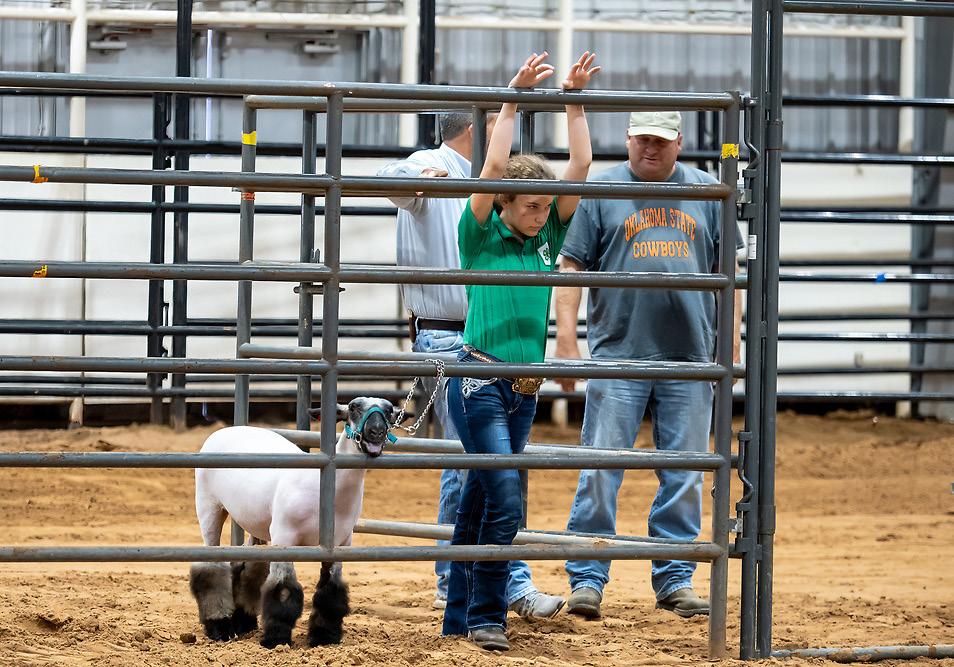
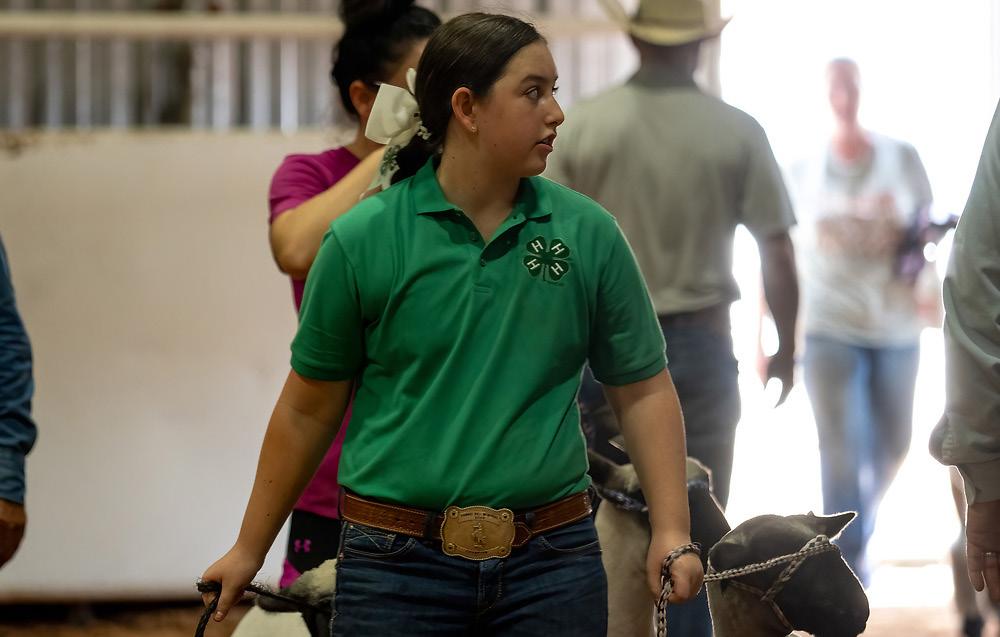

5. Jr. Fine Art: Oil or acrylic
6. Sr. Fine Art: Oil or acrylic
7. Jr. Art Portfolio: Must include at least 5 pieces/pictures of art made by exhibitor
8. Sr. Art Portfolio: Must include at least 5 pieces/pictures of art made by the exhibitor
9. Jr. Creative Writing: Must be original work, no more than 500 words, typed in 12 point font, double spaced. Entry should be placed in a paper folder with brads. Exhibitor name and county should be on the front of the folder.
10. Sr. Creative Writing: Must be original work, no more than 500 words, typed in 12 point font, double spaced. Entry should be placed in a paper folder with brads. Exhibitor name and county should be on the front of the folder.
11. Jr. Pottery: Original design made from clay using a process of hand molding or on a potter’s wheel
12. Sr. Pottery: Original design made from clay using a process of hand molding or on a potter’s wheel
13. Jr. Print Process Article: Block printing and other printing methods
14. Sr. Print Process Article: Block printing and other printing methods
15. Jr. Nature Craft: Article made from natural materials including weaving or basket making.
16. Sr. Nature Craft: Article made from natural materials including weaving or basket making.
17. Jr. Bead Craft Article
18. Sr. Bead Craft Article
19. Jr. Leathercraft: Kit
20. Sr. Leathercraft: Kit
21. Jr. Leathercraft: Original Design
22. Sr. Leathercraft: Original Design
23. Jr. Hand Crafted Wax Candle
24. Sr. Hand Crafted Wax Candle
25. Jr. Hand Crafted Gel Candle
26. Sr. Hand Crafted Gel Candle
27. Jr. Puppet
28. Sr. Puppet
29. Jr. Paper Craft

30. Sr. Paper Craft
31. Jr. Plastic Craft: Includes but not limited to LegoTM Art. If LegoTM Art is entered, it must be glued.
32. Sr. Plastic Craft: Includes but not limited to LegoTM Art. If LegoTM Art is entered, it must be glued.
33. Jr. Duct Tape Craft
34. Sr. Duct Tape Craft
35. Jr. Miscellaneous: limited to items that cannot be entered in any other class.
36. Sr. Miscellaneous: limited to items that cannot be entered in any other class
*NOTE: Puppets may either be entered in Design and Construction (Jr. class 42 or Sr. class 49) or in Paper Craft depending upon medium and criteria.
• Every exhibit must be labeled on the back with the following information: Name, Club, County, Age before September 1 and date poster or exhibit was made.
• Copy written material such as professional photos, books, publications or items on the internet should not be used as original.
• Exhibits displayed as posters must be constructed on poster board 14” x 22” (1/2 of a poster board). They may be horizontal or vertical.
• Posters will be judged on 1) educational idea portrayed, 2)

public appeal, and 3) creative and original ability presented. Copyrighted or trade-marked cartoon characters or other designs must not be used due to copyright restrictions.
• For poster displays purposes, exhibitors are encouraged to laminate or cover all posters with clear plastic film. Text of posters should be readable from at least 10 ft. away.
• Promotional exhibits in this section must include an official 4-H Clover or mention 4-H. For more information on proper use of the 4-H clover please refer to http://4h.okstate. edu/educators/4-h-name-and-emblem
Flat flyer (one-sided) designed by the exhibitor to promote a club or county 4-H educational program or activity. Computer generated flat flyer (8 1/2” x 14” or 8 1/2” x11”). Flat flyers should be securely attached to an appropriately sized poster board.
1. Juniors (grades 3-7)
2. Seniors (grades 8-12)
Brochure, card or invitation related to 4-H (may be double-, tri-, or four-fold measuring 8 1/2” x 11” or 8 1/2” by 14” before folding.) Attach two (2) flat copies of the brochure (one side showing the front and the other side showing the back of the brochure) to an appropriately sized poster board no larger than 14” x 22” - 1/2 of a poster board. Attach a large envelope to the back of the poster board and insert a folded copy of the brochure.
3. Juniors (grades 3-7)
4. Seniors (grades 8-12)
PowerPoint Presentation related to 4-H. Presentation should either promote 4-H or educate about a 4-H project. Presentations should include an official 4-H Clover or mention 4-H. Presentation entry includes a printout of at least five (5) slides and script/presentation notes in a folder or notebook. Include presentation file in a labeled CD (in an envelope). All PowerPoint presentations should be mounted on a free standing display board not to exceed 3’ x 4’ when the sides are extended for display. Commercially available “Science Fair Presentation boards” are encouraged”. First place exhibits in each class will be displayed. Second place and sub-sequential exhibits may be displayed based upon space available and judges’/committees’ discretion.
5. Juniors (grades 3-7)
6. Seniors (grades 8-12)
Digital Media For Group Or Club Project - Submit a video (maximum of 3 minutes) designed for social media use on STEM projects. The video must be in .mp4 format and submitted on a flash drive. Video may only contain first names of the participants and participants must have a signed media release form on file in their county Extension office.
7. Group Media
Additional technology exhibits (Classes 8-33) can be found in the State Fairbook https://bit.ly/4am8327

See State Fairbook https://bit.ly/4am8327

• Fall 2022 – All Design and Construction projects will be REQUIRED to have the Skill Mastery Sheet securely attached to the project. Use a safety pin and attach directly to the exhibit when at all possible. The sheet MUST be completed by the 4-H member.
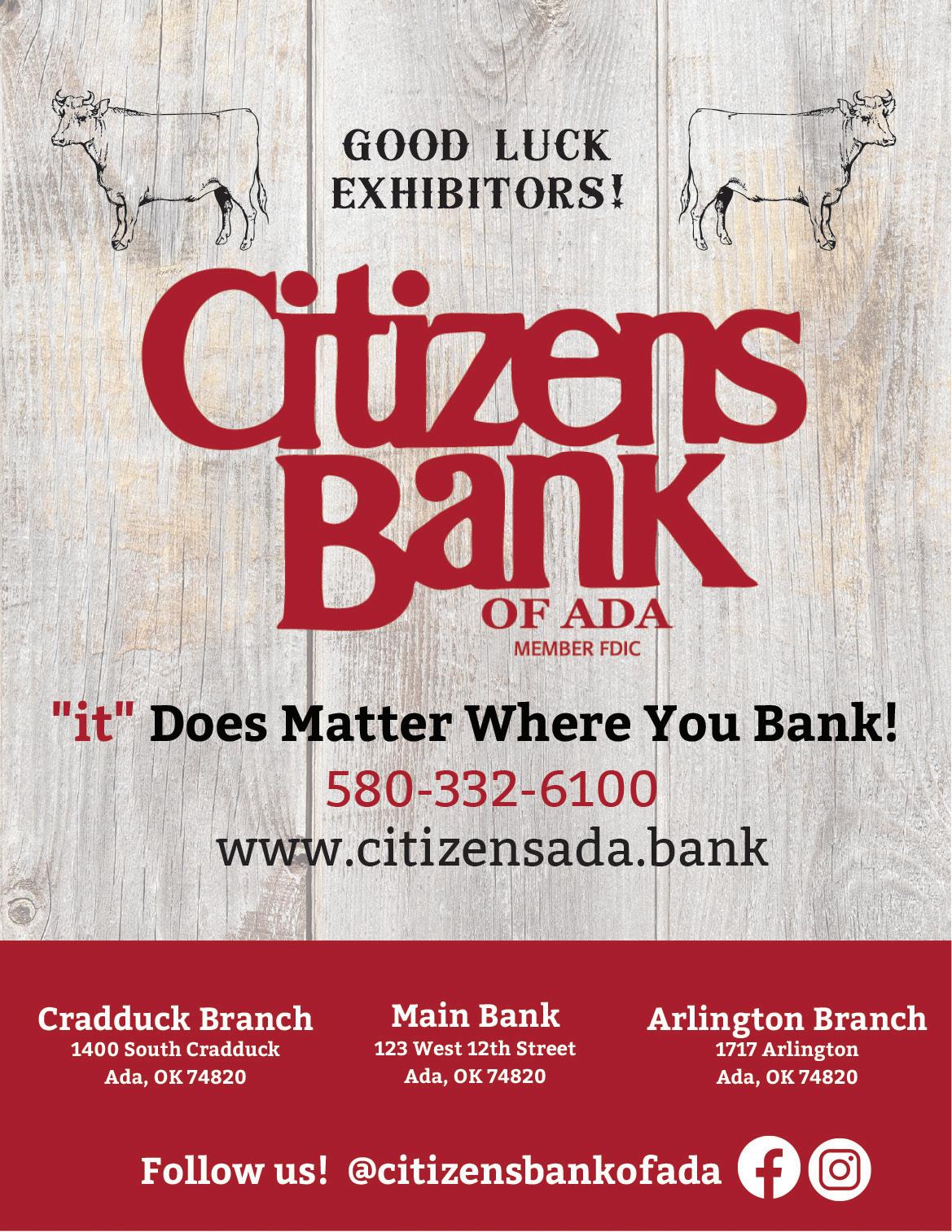
The skill mastery sheet (https://4h.okstate.edu/projects/ design-and-construction/curriculum-andpatterns.html is an education tool to guide project work. Click Sample Technique Cards to find instruction for many of the techniques noted in the skill sheets (i.e. facings, zippers, hems, fasteners, etc.).
Instruction Sheets for the projects listed can be found at: https://4h.okstate.edu/projects/design-andconstruction/project-guide-sheets.html
• Fair exhibits have been carefully selected and directed for members to investigate and learn specific skills/information and to demonstrate mastery of these skills/information.
• The end-product/exhibit is being evaluated on the skills “learned/mastered.” The skill sheet serves as the member’s “personal reflection” and communicates to the judge what was learned. Why is this important? Because in 4-H, the reflection and application of what was learned is more important than the end product/exhibit.
• The skill sheet is to be used as a planning tool. It is important that each 4-H member take responsibility for the life skill of “learning to learn.” This may require members, leaders and educators to look up terms and learn techniques as part of the educational process.
• Resources, instructions and project guides are posted online. Members are encouraged to seek out other valid resources which teach proper technique and knowledge in the areas of design and construction.
• General Skills to be mastered in project/product in ADC, IDC and HTDC: ♣ Structural Design: Construction technique, size, form, color and texture suited to the materials and product end use. ♣ Elements of Design: The finished product illustrates the member is learning or “mastering” the basic elements of design - line, shape or form, texture, color, and space. ♣ Principles of Design: The finished product illustrates an awareness and application of the principles of harmony, proportion, balance, rhythm and emphasis adding dimension, interest and/or appeal to the finished product. ♣ Surface Design: This is any lines, shapes, colors, textures, or materials applied to the product or item’s design that creates an emotional or personal quality, individuality and creative expression without disturbing initial/end purpose/how it is used. Design is that “something” which makes the item unique to the individual designer.
• Reports/Descriptions/Expense Sheet/etc. – Exhibits requiring a report/description/expense sheet of any kind, can be typed or neatly/legible handwritten. Report should be one-two pages. If typed, it must be double spaced using a minimum of 12-point font. Report MUST be SECURELY attached to the exhibit.
APPAREL DESIGN & CONSTRUCTION - (ADC)
Grades 3-5 - Review section 306 general instructions. Project must have at least two (2) skills/techniques identified as appropriate for the ADC Level 1 or Level 2 project work. Some classes have specific skills/techniques

which must be incorporated into the exhibit.
1. Simple Tops (shirt, tank top, t-shirt, vest, poncho, costume, or any other similar simple top). No lined garments. Exhibits in classes 01 and 02 are to be SIMPLE. Exhibit must have two (2) or more of the specific skills/techniques listed under any of the following headings Level 1 Mastery Sheet: Buttons, Casing, Hem, Seams, Seam Finishes.
2. Simple Bottoms (shorts, capris, pants, skirts, costume, or any other similar simple bottom). Garments are not to be lined, have pockets or a zipper. Exhibits in classes 01 and 02 are to be SIMPLE. Exhibit must have two (2) or more of the specific skills/techniques listed under any of the following headings Level 1 Mastery Sheet: Hem, Seams, Seam Finishes, Waistband.
3. Simple Lined or Unlined One-piece garment with one or one or more: pocket, waistband or facing (top, bottom, robe, jacket, dress, jumpsuit, vest, poncho/shawl costume, or any other similar one-piece garment). Exhibit must have two (2) or more of the specific skills/techniques listed under any of the following headings in the Level 1 or 2 Mastery Sheet: Facing, Pocket, Waistband, Zipper, Interfacing, Seam Finish. Waistband can be a flat front band and elastic back.
4. Non-human Apparel (doll, pet or livestock garment/costume, or any other similar item)
5. Simple Sewn Fashion Accessory (sewn hat, scarf, bag, wallet, purse, mittens, string-pack or textilebased jewelry, or any other similar sewn fashion accessory)
6. Knitted/Crocheted Fashion Accessory (knitted/crocheted hat, scarf, bag, wallet, string-pack, or textilebased jewelry, or any other similar knitted/crocheted fashion accessory). Exhibit must have two (2) or more of the specific skills/techniques listed under any of the following headings in the Level 1 or Level 2 Mastery Sheet: Crochet, Knitting.
7. “Recycled/Upcycled” Apparel/Garment/Fashion Accessory with before and after (garment/accessory being worn) pictures and a written description of the design and construction process/steps the member undertook and reason(s) for “redesign.” See Frugal Fashion Instruction Sheet and other OK Recycle and Redesign resources.
** See Class 20 All Grades: Apparel Design Project Portfolio
Grades 6-8 - Review section 4306 general instructions. Project must have at least two (2) skills/techniques identified as appropriate for the ADC Level 2 or Level 3 project work. Some classes have specific skills/techniques which must be incorporated into the exhibit.
8. Blouse/Shirt with sleeves and closure. Exhibit must have two (2) or more of the specific skills/techniques listed under any of the following headings in the Level 3 Mastery Sheet: Buttons and Buttonhole, Fasteners, Sleeves, Zipper. No jackets, coats or vests.
9. Lined or Unlined Bottom with zipper and pocket(s) Exhibit must have two (2) or more of the specific skills/techniques listed under any of the following headings in the Level 3 Mastery Sheet: Interfacing/Underlining, Lining, Pockets, Zippers. Pocket style must be one described on the skill sheet.
10. Lined or Unlined Two-piece garment (coordinating top and bottom, jacket/vest with bottom/dress, PJ’s, uniform, costume, or any other similar two-piece coordinate). Exhibit must have two (2) or more of the specific skills/techniques listed under any of the following headings in the Level 3 Mastery Sheet: Buttons and Buttonhole, Fasteners, Interfacing/Underlining, Lining, Pockets, Sleeves, Zipper.
11. Sewn Fashion Accessory with closure/fastener and seams. (Examples: hat/earmuffs, wallet, bag/purse/backpack, costume accessory (such as gloves, apron, bustier), textile-based jewelry, or any similar sewn accessory. See specific skills/techniques listed under the following headings Level 3 Mastery: Buttons and Buttonholes, Fasteners, Seams, and Seam Finish which may apply.
12. Fashion Garment or Accessory created by Knitting/ Crocheting/Tatting/Felting or similar technique. No accessory is to be constructed from commercial/purchased fabric (woven, knit, felt, etc.) Knitted or crocheted exhibit must have two (2) or more of the specific skills/techniques listed under any of the following headings in the Level 3 Mastery Sheet: Crochet and/or Knitting.
13. “Recycled/Upcycled” Apparel/Garment/Fashion Accessory with before and after (garment/accessory being worn) pictures and a written description of the design and construction process/steps the member undertook and reason(s) for “redesign.” See Frugal Fashion Instruction Sheet and other OK Recycle and Redesign resources.
** See Class 20 All Grades: Apparel Design Project Portfolio
Grades 9-12 - Review section 306 general instructions. Project must have at least two (2) skills/techniques identified as appropriate for the ADC Level 3 or Level 4 project work. Some classes have specific skills/techniques which must be incorporated into the exhibit.
14. One-piece lined or unlined garment (pants, skirt, coat, jacket, dress, jumpsuit, uniform, formalwear, costume, or any other similar garment) with two (2) or more of the specific skills/techniques listed under any of the following headings in the Level 4 Mastery Sheet: Collar/Cuff, Buttons and Button-

holes, Fasteners, Hem, Interfacing/Under lining/Interlining, Lining, Seam, Seam/Finish, Zipper.
15. Two-piece lined or unlined ensemble/coordinate (coat/jacket/vest/shirt/blouse with dress/pants/slacks/skirt/ etc., suit, costume, or any other similar two-piece coordinate with two (2) or more of the specific skills/techniques listed under any of the following headings in the Level 4 Mastery Sheet: Collar/Cuff, Buttons and Buttonholes, Fasteners, Hem, Interfacing/Under lining/Interlining, Lining, Seam, Seam/ Finish, Zipper.
16. Sewn Fashion Accessory with closure/fastener and seams. (Examples: hat/earmuffs, wallet, bag/purse/backpack, costume accessory (such as gloves, apron, bustier), textile-based jewelry, or any similar sewn accessory. See specific skills/techniques listed under the following headings Level 3 Mastery: Buttons and Buttonholes, Fasteners, Seams, and Seam Finish which may apply.
17. Fashion Garment or Accessory created by Knitting/ Crocheting/Tatting/Felting or similar technique. No accessory is to be constructed from commercial/purchased fabric (woven, knit, felt, etc.) Knitted or crocheted exhibit must have two (2) or more of the specific skills/techniques listed under any of the following headings in the Level 4 Mastery Sheet: Crochet and/or Knitting.
18. Functional Fashion Accessory or Garment designed for Special Needs. “Special Needs” being the individual requirements of a person with a mental, emotional, physical disability or disease.” MUST include a description of whom it was made for, why the need, any special adaptations per the individuals request and any other pertinent information supporting the finished product. (Examples of fashion accessories or garment: apron/tidy-top; garment adaptation; mastectomy pillow; cancer cap/hat; slippers/shoes; wheelchair - coat, gloves, backpack, cell phone caddy; etc. This exhibit is for fashion accessories and garments worn by the person. See IDC class 40 for other special needs item.) See Citizenship through Service Learning and Sewing for Special Needs instructions.
19. Recycling/Upcycling Apparel on a Budget – Focus is on the skill/technique mastery applied to the recycling/ upcycling of a garment with a budget of $10. Must include an expense sheet for any supplies/garments
purchased. In kind or on hand supplies (thread, fabric/trim scraps, buttons, interfacing, etc.) used in the design and construction are also to be listed on the expense sheet. Exhibit must include before and after (garment being worn) pictures and a written description of the design and construction process/steps the member undertook. See Frugal Fashion Instruction Sheet and other OK Recycle and Redesign resources.
** See Class 20 All Grades: Apparel Design Project Portfolio
Grades - ADC
20. All Grades: Apparel Design Project Portfolio: A portfolio is a great record keeping tool. It will be a valuable source for ideas and future projects, a place to share any project work done in ADC and provide a place to show samples of new techniques or knowledge explored in ADC. It is a notebook with three (3) sections – 1) Projects/Products, 2) Sample Technique Pages and 3) Creative Inspirations and Ideas. See Design Portfolio instructions. All Portfolios, regardless of grade, will be judged together.
INTERIOR DESIGN & CONSTRUCTION - (IDC)
IDC project must be made largely from a textile product unless otherwise stated. A textile is a flexible material made of fiber/thread/yarn. Textiles are formed with various methods including weaving, knitting, crocheting, knotting or felting. Other words for textiles are cloth and fabric.
Grades 3-5 - Review section 306 general instructions. Project must have at least two (2) skills/techniques identified as appropriate for the ADC Level 1 or Level 2 project work. Some classes have specific skills/techniques which must be incorporated into the exhibit.
The following headings on the Mastery Sheets are just a few examples of skills/techniques which apply to many of the projects listed in IDC: Buttons, Casing, Gathering, Hem, Seam, Seam Finish, Buttons and Buttonhole, Crochet, Darts, Facing, Fasteners, Interfacing, Knitting, Pleats, and Zipper.
21. Home Accent Kitchen: apron, food caddy/warmer, appliance cover, message center/board, simple curtains, tablecloth, simple table runner, hand/dish towel, potholders, hot pad, lunch bag, (1) placemat, (2) napkins, or any other similar item for the kitchen. All exhibits should illustrate some skill mastery of hand or machine sewing techniques
22. Home Accent Bedroom: Examples: two pillowcases, two coordinating pillows, pair of curtains (no commercially produced linens), or any combination of two coordinating pieces (i.e., blanket/quilt with binding, lamp shade, lap desk, ruglatched/woven/braded/etc., painted floor cloth, any other item) for the bedroom).
23. Simple Storage Bag without zipper: laundry, jewelry, cosmetic/toiletry/shaving/pencil, book/elec-

tronic cover, or any other similar bag for home/school/office/ shop/vehicle/exercise/hobby/barn/etc. No fashion accessory type bags.
24. Home Accent Storage: bucket caddy, hanging storage unit, under-bed storage, basket liners, storage box, locker storage, scrapbook cover, or any other similar item. No bags.
25. Seasonal Décor sewn from fabric: table runner, (1) placemat with napkin, wall hanging, yard flag/banner/windsock, centerpiece, decoration, or any other similar item, sewn by hand or machine stitching. This class is not intended for full size quilts/blankets which do not fit “seasonal décor.”
26. Recycled/Upcycled Furniture: Painted, stained, refinished, decoupage, tiled or upholstered furniture, or any other appropriate technique not stated to recycle/repurposed a piece of furniture. Purchasing an unfinished piece of furniture does not qualify as recycling/repurposing.
MUST include before and after (furniture displayed, showing how it was designed to fit a room’s décor) photos, a description of the process - inspiration/design process, who it was made for, why the need, any special considerations, or any other pertinent information supporting the finished product. See Recycle and Redesign instruction sheet.
** See Class 39 All Grades: Special “Needs” Accessory
** See Class 40 All Grades: Seasonal Décor non fabric
** See Class 41 All Grades: Interior Design Project Portfolio
Grades 6-8 - Review section 306 general instructions. Project must have at least two (2) skills/techniques identified as appropriate for the ADC Level 2 or Level 3 project work. Some classes have specific skills/techniques which must be incorporated into the exhibit.
The following headings on the Mastery Sheets are just a few examples of skills/techniques which apply to many of the IDC projects listed: Buttons and Buttonhole, Casing, Crochet, Darts, Facing, Fasteners, Gathering, Hem, Knitting, Pleats, Seam, Seam Finish, Zipper, Applique, Interfacing/Underlining, Lining, Pockets, Staystitching, Trim(s), Top Stitching and Zipper.
27. Design Storyboard: For an “Ultimate/Ideal” Room. Include color scheme, wall treatment, floor treatment, floor plan, etc. Exhibit will consist of a multimedia presentation, notebook, or story board (matte or foam core board 20” x 15”) with above items and a description of what was learned. Project can include but not limited to pictures, samples, diagram of room arrangement, drawings, narration, cost comparison of supplies, arrangements, and budget/cost, etc. for project. See Storyboard instruction sheet.
28. Home Accent Kitchen: apron, food caddy/warmer, appliance cover, message center/board, simple curtains, tablecloth, simple table runner, hand/dish towel, potholders, hot pad, lunch bag, (1) placemat, (2) napkins, or any other similar item for the kitchen. All exhibits should illustrate some skill mastery of hand or machine sewing techniques
29. Home Accent Bedroom: Examples: two pillowcases, two coordinating pillows, pair of curtains (no commercially produced linens), or any combination of two coordinating pieces (i.e., blanket/quilt with binding, lamp shade, lap desk, rug-latched/woven/braded/etc., painted floor cloth, any other item) for the bedroom). Added to beginning level new class 22
30. Storage Bag with some type of closure other than drawstring: laundry, jewelry, cosmetic/toiletry/shaving/ pencil, gym/tool/equipment/sewing bag, book/electronic/ computer cover, garment bag, or any other similar bag for home/school/office/shop/vehicle/exercise/hobby/barn/etc. No fashion accessory type bags.
31. Home Accent Storage: bucket caddy, hanging storage unit, under-bed storage, basket liners, storage box, scrapbook cover, or any other similar item
32. Seasonal Décor sewn from fabric: table runner, (2) placemats with napkins, wall hanging, yard flag/banner/windsock, centerpiece, decoration, or any other similar item, sewn by hand or machine stitching. This class is not intended for full size quilts/blankets which do not fit “seasonal décor.”
33. Recycled/Upcycled Furniture: Painted, stained, refinished, decoupage, tiled or upholstered furniture, or any other appropriate technique not stated to recycle/repurposed a piece of furniture. Purchasing an unfinished piece of furniture does not qualify as recycling/repurposing. MUST include before and after (furniture displayed, showing how it was designed to fit a room’s décor) photos, a description of the process - inspiration/design process, who it was made for, why the need, any special considerations, or any other pertinent information supporting the finished product. See Recycle and Redesign instruction sheet.
** See Class 39 All Grades: Special “Needs” Accessory
** See Class 40 All Grades: Seasonal Décor non fabric
** See Class 41 All Grades: Interior Design Project Portfolio
Grades 9-12 - Review section 306 general instructions. Project must have at least two (2) skills/techniques identified as appropriate for the ADC Level 3 or Level 4 project work. Some classes have specific skills/techniques which must be incorporated into the exhibit.
The following headings on the Mastery Sheets are just a few examples of skills/techniques which apply to many of
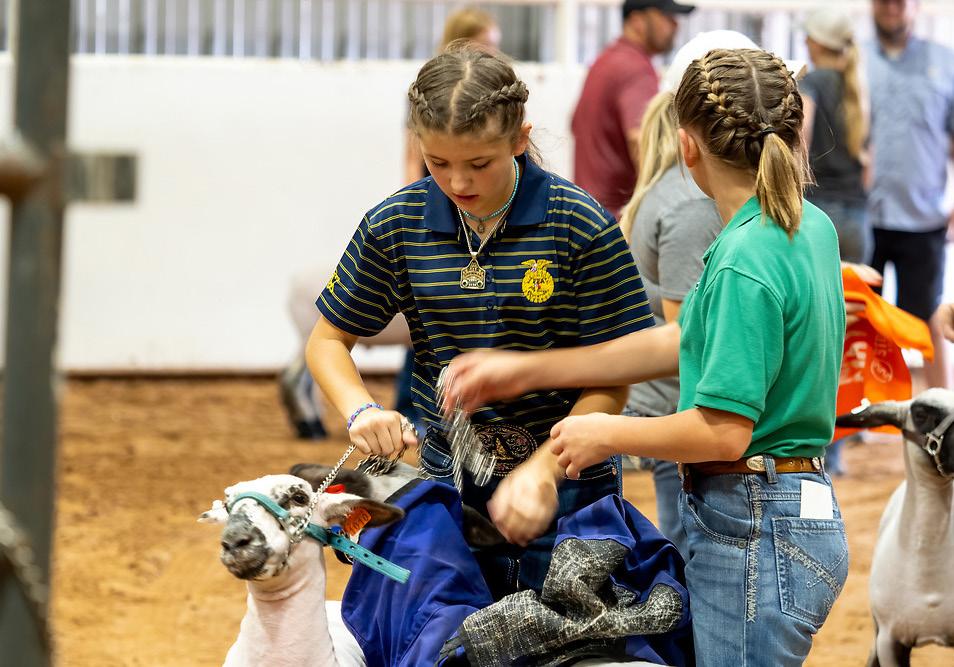
the projects listed: Applique, Buttons and Buttonhole, Bias Tape, Couture Technique/Historic Technique, Crochet, Darts, Facing, Fasteners, Hem, Interfacing/Underlining, Knitting, Lining, Mitered Corners, Pleats, Pockets, Seam, Seam Finish, Staystitching, Trim(s), Top Stitching and Zipper.
34. Design Storyboard: For an “Ultimate/Ideal” Room. Include color scheme, wall treatment, floor treatment, floor plan, etc. Exhibit will consist of a multimedia presentation, notebook, or story board (matte or foam core board 20” x 15”) with above items and a description of what was learned. Project can include but not limited to pictures, samples, diagram of room arrangement, drawings, narration, cost comparison of supplies, arrangements, and budget/cost, etc. for project. See Storyboard instruction sheet.
35. Home Accent Living/Family room: any combination of two-piece coordinates for the living/family room (slipcovers, lined or unlined curtains/drapes/shades, pillows, lap throw/ lap quilt, remote caddy, ottoman, lamp shade, fireplace mantel scarf, doily, or any other similar item). No full-size quilts, full size quilts would be exhibited in classes 54 or 55.
36. Home Accent Outdoors/Patio/Camping: any combination of a two-piece coordinate (picnic/BBQ accessories, patio furniture cushions/covers, shades, (1) placemat with napkin (this is a “set” and does not count as a two-piece coordinate), utensil/condiment caddy, insulated carrier, picnic blanket, outdoor sling chair, hammock, sleeping bag, or any other similar item not stated for outdoors/patio/camping.
37. Recycled/Upcycled Furniture: Painted, stained, refinished, decoupage, tiled or upholstered furniture, or any other appropriate technique not stated to recycle/repurposed a piece of furniture. Purchasing an unfinished piece of furniture does not qualify as recycling/repurposing. MUST include before and after (furniture displayed, showing how it was designed to fit a room’s décor) photos, a description of the process - inspiration/design process, who it was made for, why the need, any special considerations, or any other pertinent information supporting the finished product. See Recycle and Redesign instruction sheet.
38. Seasonal Décor sewn from fabric: table runner, (2) placemats with napkins, wall hanging, yard flag/
banner/windsock, centerpiece, decoration, or any other similar item, sewn by hand or machine stitching. This class is not intended for full size quilts/blankets which do not fit “seasonal décor.”
** See Class 39 All Grades: Special “Needs” Accessory
** See Class 40 All Grades: Seasonal Décor non fabric
** See Class 41 All Grades: Interior Design Project Portfolio
39. Functional Home Accessory design for Special “Needs”: “Special Needs” being the individual requirements of a person with a mental, emotional, physical disability or disease. MUST include a description of who it was made for, why the need, any special adaptations per the individuals request and any other pertinent information supporting the finished product. (Examples of housing accessories for special needs: sensory swing/activity station; fidget quilt/blanket/ mat; bedding/pillows/lap blanket; weighted/pressure/gravity blanket; bed/chair/walker caddy; bath or kitchen accessory; bedrail; storage; etc.) See Citizenship through Service Learning and Sewing for Special Needs instructions.
40. Seasonal Décor non fabric/textile: wall hanging, centerpiece, decoration, or any other similar item not stated. Exhibit is not to be constructed primarily from fabric or any textile-based product. It can have some textiles (i.e., lace, ribbon, buttons, etc.)
41. Interior Design Project Portfolio: A portfolio is a great record keeping tool. It will be a valuable source for ideas and future projects, a place to share any project work done in IDC and provide a place to show samples of new techniques or knowledge explored in IDC. It is a notebook with three (3) sections – 1) Projects/Products, 2) Sample Technique Pages and 3) Creative Inspirations and Ideas. See Design Portfolio instructions. All Portfolios, regardless of grade, will be judged together.
Hobbies/Textile Design And Construction - (HTDC)
HTDC projects are made from a textile product created by the exhibitor, unless otherwise stated. A textile is a flexible material made of fiber/thread/yarn. Textiles are formed with various methods including weaving, knitting, crocheting, knotting or felting. Other words for textiles are cloth and fabric.
Grades 3-6 - Review section 306 general instructions. Project must have at least two (2) skills/techniques identified as appropriate for the ADC Level 1 or Level 2 project work. Some classes have specific skills/techniques which must be incorporated into the exhibit. See sample technique cards for some of the HTDC techniques.
42. Simple Sewn Stuffed animal, doll or puppet with both hand and machine stitching techniques. Focused on showing technique mastery/what was learned constructing the finished product.

43. Decorative Textile Technique: Skill techniques(s) being mastered/learned - screen printing, transfer printing, fabric pens, tie dye, batik, stenciling, block printing or a similar method applied to a textile foundation such as a piece of clothing, fashion accessory or home décor purchased or sewn by the exhibitor. Any skill technique listed in classes 44-47 are not to be exhibited in this class. Focus is on the 1) mastery of one or more decorative textile technique, 2) creativity, and 3) mastery of the use of the elements and principles of design.
44. Textile Fabric Creation: Skill technique(s) being mastered/learned - weaving (beading or textile), latchhook, braiding, macramé, knitting, crochet, felting, basket weaving or a combination of one of these techniques to create a textile. “Textile” defined as any woven, looped or felted thread or fibre. Focus is on 1) the mastery of one or more defined textile technique(s) used to complete a finished product 2) creativity and 3) master of the use of the elements and principles of design. Examples: toy/game (rug for doll house, doll, ball, etc.), home décor (doily, table scarf, pillow, coaster, wall hanging, plant hanger, small basket, linen - dish cloth, scrub, towel, pillow cover, etc.), clothing/fashion accessory (hat, scarf, purse/ bag, jewelry, etc.) or similar small item. Any skill technique listed in classes 43, 45-48 are not to be exhibited in this class.
45. Needle Art by Hand: Skill technique(s) being mastered/ learned - hand embroidery, counted cross-stitch, needlepoint, crewel embroidery, needle punch or smocking applied to towel, pillowcase, garment, home accessory. Pictures must be framed. Base/foundation for needle art can be purchased or sewn by the exhibitor. Focus is on 1) the mastery of one or more “hand” needle art technique(s), 2) creativity, and 3) master of the use of the elements and principles of design.
46. Needle Art by Machine: Simple machine embroidery, cross stitch/decorative stitches, or applique applied to small decorative items, home accessories, towel, pillowcase, garment, picture, flag, banner, windsock, etc. Base/foundation for needle art can be purchased or sewn by the exhibitor. Focused on 1) the mastery of machine created needle art techniques, 2) creativity, and 3) master of the use of the elements and principles of design. NO full size quilts.
47. Machine Pieced or Appliquéd Item: Skill technique(s) being mastered/learned is machine piecing and/or applique
in the creation of a “textile/fabric. From the piece, design and construct apparel, fashion accessory, or home décor item. Focus is on 1) the mastery of one or more “machine pieced or appliqued technique(s)”, 2) creativity, and 3) master of the use of the elements and principles of design. Examples might include picture or wall art, pillow, bag, doll quilt, flag, banner, windsock, etc. NO full size quilts.
48. Repurposed Textile Creation: Item made from repurposed textile material/product which can be worn/carried or used in the home. MUST include before and after (a picture being worn or displayed, showing how it was designed to fit room décor) photos, a description of the process - inspiration/ design process, who it was made for, why the need, any special considerations, or any other pertinent information supporting the finished product. Focused on 1) appropriate use of repurposed textile, 2) quality of end product, 3) creativity, and 4) application of the elements and principles of design. Attach See Recycle and Redesign instruction sheet.
** See Class 57 All Grades: Hobbies and Textiles Design Project Portfolio
** See Class 58 All Grades:
Quilts of Valor Community Service
Grades 7-12 - Review section 4306 general instructions. Project must have at least two (4) skills/techniques identified as appropriate for the ADC Level 3 or Level 4 project work. Some classes have specific skills/techniques which must be incorporated into the exhibit. See sample technique cards for some of the HTDC techniques.
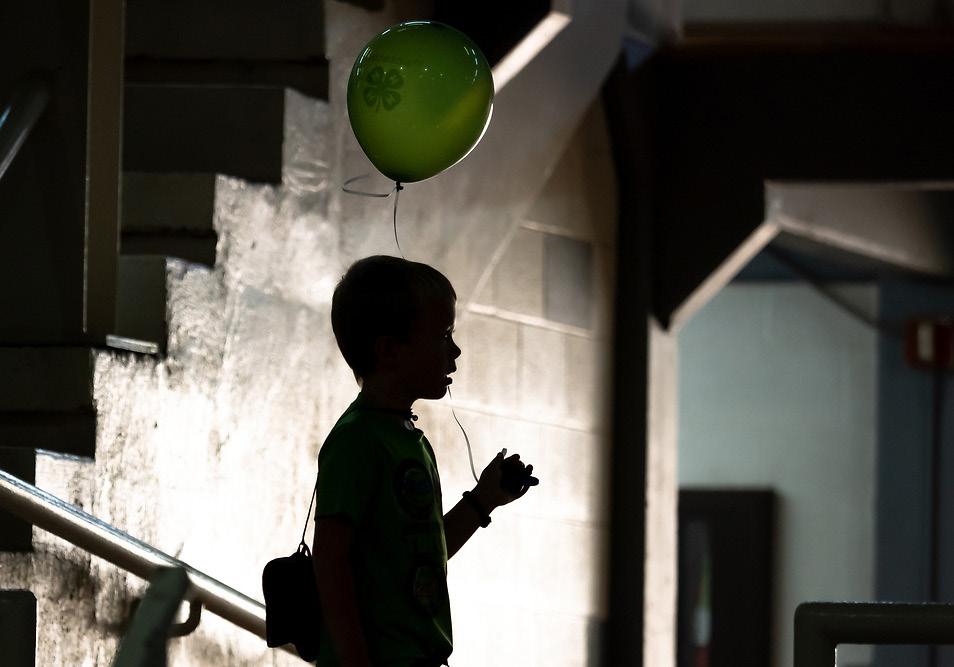
49. Stuffed animal, doll or puppet with a minimum of two (2) hand and two (2) machine sewing techniques (i.e., embroidered/appliqued/textile painted facial features, hair constructed from yarn/floss/fur, movable parts (arm, mouth, legs, etc.), use of fake fur, or any other similar combination of techniques showing mastery of skill/technique applied to the finished product.
50. Decorative Textile Technique: Create a piece of fabric using two (2) or more decorative textile techniques described in class 43. From the piece of fabric, design and construct apparel, fashion accessory, or home décor item. Any skill technique listed in classes 51-56 are not to be exhibited in this
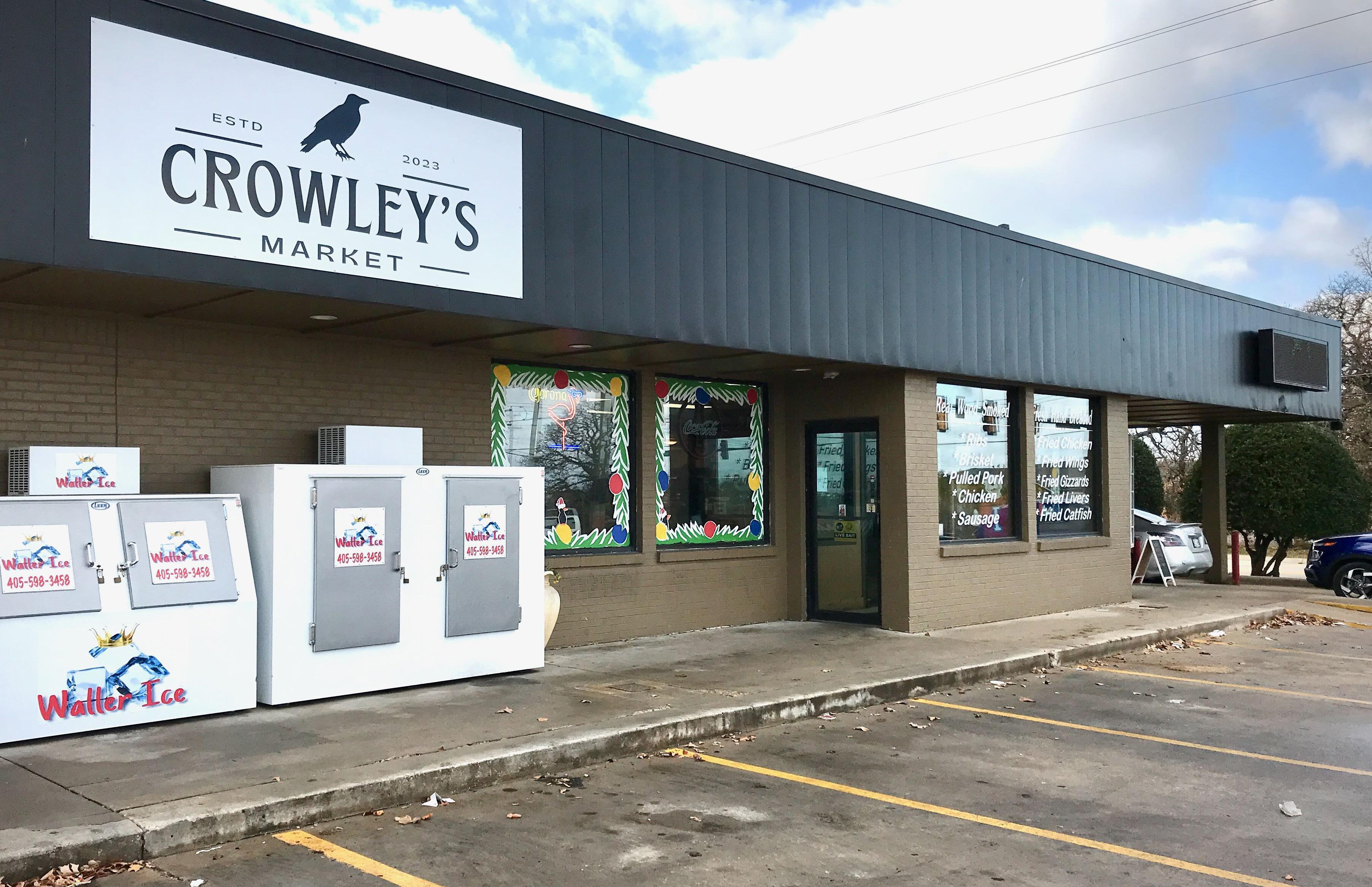


class. Focus is on the 1) mastery of technique, 2) the creative and appropriate blending of two or more decorative textile techniques, 3) the fabric/trim fittingly showcased in a finished product, and 4) master of the use of the elements and principles of design.
51. Textile Fabric Creation: Design and construction of an original textile [fabric or trim] using at least two (2) techniques described in class 45. Additional techniques might include but are not limited to hand spinning, cotton linter, and tatting. From the textile fabric, design and construct apparel, fashion accessory, or home décor item. Focus is on 1) the mastery of two or more textile technique(s) used to produce a textile, 2) creative and appropriate use of the “textile” in finished product, and 3) mastery of the use of the elements and principles of design. Any skill technique listed in classes 50, 52-56 are not to be exhibited in this class.
52. Needle Art by Hand: Two (2) or more of these “hand” technique(s). Techniques include but not limited to embroidery [floss, yarn (crewel) or ribbon], cross-stitch, needlepoint, needle punch, smocking, Trapunto quilting, hand quilting, or similar techniques. Base/foundation for needle art can be purchased or sewn by the exhibitor. Exhibit must be a finished product, ready to display/use. Focus is on 1) the mastery of two or more “hand” needle art technique(s), 2) creativity, and 3) a mastery of the use of the elements and principles of design. This class is not intended for pieced quilts which do not fit the criteria described. A pieced quilt would be exhibited in class 54 or 55.
53. Needle Art by Machine: Two (2) or more of these “machine” techniques: original free motion embroidery/thread painting, “modified” commercial/software-based embroidery design (must describe modification(s) on skill mastery sheet), Trapunto quilting, quilting, applique, or other advanced needle art technique(s) applied to clothing, fashion accessory or home/school/office décor. Base/foundation for needle art can be purchased or sewn by the exhibitor. Focus is on 1) the mastery of two or more “machine” created needle art techniques, 2) creativity, and 3) a mastery of the use of the elements and principles of design. This class is not intended for pieced quilts which do not fit the criteria described. A pieced quilt would be exhibited as class 54 and 55.
54. Hand Pieced and/or Hand Appliquéd Item finished with Hand quilting. Piecing and/or applique and quilting MUST have been done by hand, not by machine. Examples might include picture or wall art, pillow, bag, doll quilt, table runner, lap robe, etc. Focus is on1) the mastery of “hand work,” 2) creativity and 3) the mastery of the use of the elements and principles of design.
55. Machine Pieced and/or Machine Appliquéd Item finished with Machine Quilting. Quilting must be done by the exhibitor. Examples might include picture or wall art, pillow, bag, doll quilt, lap robe, table runner, etc. Focus is on 1) the mastery of one or more “machine pieced or appliqued technique(s),” 2) creativity, and 3) mastery of the use

of the elements and principles of design.
56. Repurposed Textile Creation: Item made from repurposed textile material/product which can be worn, used in the home, at school, in the office, on the job, car/boat/vehicle, etc. MUST include before and after (a picture being worn or displayed, showing how it was designed to fit room décor) photos, a description of the process - inspiration/design process, who it was made for, why the need, any special considerations, or any other pertinent information supporting the finished product. Focused on 1) appropriate selection of textile, 2) appropriate construction techniques for end use, 3) creativity, and 4) the use of the elements and principles of design. See Recycle and Redesign instruction sheet.
** See Class 57 All Grades: Hobbies and Textiles Design Project Portfolio
** See Class 58 All Grades: Quilts of Valor Community Service
57. Hobbies and Textiles Design Project Portfolio: A portfolio is a great record keeping tool. It will be a valuable source for ideas and future projects, a place to share any project work done in HTDC and provide a place to show samples of new techniques or knowledge explored in HTDC. It is a notebook with three (3) sections – 1) Projects/Products, 2) Sample Technique Pages and 3) Creative Inspirations and Ideas. See Design Portfolio instructions. All Portfolios, regardless of grade, will be judged together.
58. Quilts of Valor Community Service: Group or individually constructed quilt, constructed for the express purpose of being presented to a Veteran as part of the Quilts of Valor program. When available, attach the presentation script used in the Awards Ceremony or a copy of the report submitted to Quilts of Valor (https://www.qovf.org/take-action/report-aquilt-of-valor-award/). Pictures of the presentation welcome. Be sure to have the veteran’s approval to use their picture for display.
Please reference the 4-H Military Partnership guide for Babysitting, updated in 2020.
https://4-hmilitarypartnerships.org/resources/educator-re-
Junior (Grades 3-7)
1. Baby Book - Any practical size, minimum of five (5) pages covering at least 9 to 10 months of development. Includes photographs, drawings mementos, and comments on developmental milestones. Must be clear that 4-Her has contributed child development information to book. Baby books prepared earlier by parents may not be entered unless 4-H’er reworks the information. Handwriting should be the youth preparing the exhibit not an adult. See Unit One, page 13. Do not confuse with Class 5, Children’s Book.
2. Puzzles Help Children Learn - Any size. Two (2) puzzles developmentally appropriate for children at two (2) distinct age and ability levels. Each puzzle must have its own storage container. Puzzles must be sturdy and covered so they can be cleaned with damp cloth. Describe the child for whom each puzzle would be appropriate by giving child’s age, interest, and ability. Puzzles should be suitable for either boys or girls. Do not indicate that a puzzle is for boys or girls only. See Unit One, Page 13. Commercially made puzzles are not eligible.
3. Child Care Poster - Must be 14” x 22” and must be permanently signed and dated on the back prior to lamination. Judging committee may mark or punch if not marked. Text of poster should be visible for at least 10 ft. away. Choose one of these topics to develop poster: Behavior and Guidance—Include pictures and fact about child development. (See Unit One, Pages 14-15 and No. 706); Safety Risks and Procedures— include common safety risks that a babysitter needs to be aware of and procedures to address the safety issue (See No. 575, Pages 4-7 Unit 1, pages 16-17; Unit 2, Pages 28-29. 4-H Army Child & Youth Services Babysitting Student Guide, pages 25-44); Ages and Stages of Development (No 575, page 10, 4-H Army Child & Youth Services Babysitting Student Guide, Pages 49-50)
4. Basic First Aid Kit - Create a basic first aid kit from scratch (not a purchased kit) that includes the basic supplies to take care of small accidents such as bumps, scrapes, stings, and sprains. Include an emergency contact list in the first aid kit that includes but is not limited to: Emergency numbers for police, fire department, poison control, veterinarian, etc. Include a supply list and the cost to pul the kit together. The kit should be in a container with a lid or zipper closure. Make sure there is a label on the kit that identifies it as a “First Aid Kit” See 4-H Army Child & Youth Services Babysitting Student Guide, pages 37-41)
5. Children’s Book - Written, illustrated and constructed by 4-Her. May be written for a specific with text relating to that child or for children of certain age range. Indicate appropriate age range. Construction paper, computer print-out, cloth or poster board may be used. Illustrations may be drawn, photographs, appliqués, magazine pictures or reassembled from other books. See no. 707, Books for Children. Do not confuse with Class 1, Baby Book.
6. Surprise Suitcase - Fill suitcase with homemade or store bought items for children you baby-sit. Could include books,

puzzles, games, play dough, balls, and costumes. Indicate appropriate age child to use each item. Include records of how children have responded to materials. Package in suitcase that can be taken to the home. See No. 722, Child Care Kit. May include commercial puzzles. Contents need to be in a suitcase or a container with a lid.
7. Create a Game - Create a board game or card game to teach a specific topic to a child. Examples might include but are not limited to: Hygiene practices, exercise and fitness, safety, etc. Game boards must be 14” x 22” and must be permanently signed and dated on the back prior to lamination. Judging committee may mark or punch if not marked. Make sure to laminate game boards, cards or any pieces made of paper so that they are durable. Include written instructions of the rules of the game. Note in the instructions the age appropriateness of the game.
• Educational exhibits must fit 3’ x 4’ (width x depth) space, with sides extended. Exhibits must be free standing with sides attached. Poster must be constructed on poster board 14” x 22”. Posters and displays must be permanently signed and dated on the back prior to lamination. Judging committee may mark or punch if not marked. Text of posters and displays should be readable from at least 10 ft. away.
• All food products must be on a paper plate and in a sealed plastic bag.
• 4-Hers may use recipes indicated in the food science manuals or any other recipe that fits the exhibit requirements. Cakes must be made from scratch using shortening mixing method (no angel food or chiffon-type). Bread machines may be used for the bread exhibits but bread must be made from scratchno mixes.
• Dried foods should be exhibited in a sealed, plastic sandwich bag.
• Canned foods should be placed in colorless, standard canning jars such as those made by Kerr, Ball, etc., and properly sealed with two (2) Piece lids (no paraffin on jams and jellies). Other types of jars will be rejected. Judges will remove the screw-bands at time of judging. Labels should be neat and plainly written. Jars of jams and jellies being considered for ribbons may be evaluated for taste in addition to traditional attributes.
LEVEL TWO - Grades 3-5
1. Three (3) Muffins
2. Three (3) Rolled Biscuits
3. Three (3) Baked Drop Cookies (no shaped cookies such as snickerdoodle or peanut butter)
LEVEL THREE - Grades 6-8
4. One-half loaf of any yeast bread (not a sweet dough) made by hand or in a bread machine
5. Three (3) yeast cinnamon rolls (no icing)
6. Three (3) rolled sugar-type cookies (no icing, no gingerbread recipes)
LEVEL FOUR - Grades 9-12
7. One-half loaf or portion of breads from another culture. Include a one (1) page story on how this bread fits into that culture and its nutritional contribution
8. One-half of one 8” or 9” layer Un-iced shorten type cake

(no angel food or chiffon)
9. Two-crust fruit pie – 9” or 10” disposable pie pan. Crust and filling must be made by exhibitor.
• Jar rings should be left on for display. Home canned food entries to be presented in standard jars made for home canning, with a raised pattern or lettering, clear, uncolored glass and two-piece lids.)
LEVEL TWO - Grades 3-5
10. One (1) pint or half (1/2) pint jar of jam or jelly processed in boiling water canner
11. Two (2) pieces of fruit leather

12. One (1) pint or half (1/2) pint of salsa/picante sauce
LEVEL THREE - Grades 6-8
13. One (1) pint jar cucumber pickles or vegetable relish 14. One (1) pint or quart of any single canned fruit (not pickled).
15. Dried Fruit (4 cup of a single dried fruit). Display in a sealed plastic sandwich/freezer bag.
LEVEL FOUR - Grades 9-12
16. One (1) pint or quart jar pressure canned vegetables (no tomatoes or pickles)
17. One (1) quart or one (1) pint jar of plain canned tomatoes.
18. Dried Vegetable (½ cup of a single dried vegetable). Display in a sealed plastic sandwich/freezer bag
DIVERSITY LEVEL TWO - Grades 3-5
19. Educational poster based on breads or cheeses of another country or countries.
LEVEL THREE & FOUR - Grades 6-12
20. Educational poster based on the foods from another culture. Can be based on a cultural celebration.
LEVEL TWO - Grades 3-5
21. Educational poster based on recipe modification for healthful eating

LEVEL THREE - Grades 6-8
22. Educational poster based on the nutritional contributions of fruits and vegetables
LEVEL FOUR - Grades 9-12
23. Educational display based on a recipe modification to include:
• Original recipe and what modifications were made

• Benefits of the modifications
• How did the modifications impact the above factors?
• What were other people’s responses to the modifications?
LEVEL TWO - Grades 3-5
24. Educational poster based on food or kitchen safety
LEVEL THREE - Grades 6-8
25. Educational poster based on protein food safety
LEVEL FOUR - Grades 9-12
26. Educational poster based on outdoor cookery or grilling
LEVEL TWO - Grades 3-5
27. Educational poster illustrating a place setting for a specific occasion or menu
28. Bicycle Poster – Create a poster on one of the following: a) bicycle safety b) bicycling as part of healthy living c) maintenance of bicycles.
LEVEL THREE - Grades 6-8
29. Educational display based on a breakfast bread buffet theme. Should include menu, buffet layout, decorations, invitations, and any additional information.
30. Bicycle Poster – Create a poster on one of the following: a) bicycle safety b) bicycling as part of healthy living c) maintenance of bicycles.
LEVEL FOUR - Grades 9-12
31. Educational poster based on careers in the food industry
32. Bicycle Poster – Create a poster on one of the following: a) bicycle safety b) bicycling as part of healthy living c) maintenance of bicycles.
• All curriculum for Personal Development are posted on the Oklahoma 4-H Literature Online website at: http://4h.okstate. edu/literature-links/lit-online/leadership-personal_development/personal-development/personal-development-resources
• Picture Perfect YOUth curriculum and Leader Guide - This new curriculum provides specific lessons in each level of the curriculum (beginner, intermediate and advanced) with fair project instructions. On the table of contents of each project manual, lessons with fair projects are noted with a blue ribbon icon. The score sheet for evaluating fair projects are included in all manuals and leader guide.
• Heritage Scrapbook Classes – The Heritage Scrapbook project also has a new curriculum. It is posted on the link provided above. This manual provides specific activities for each age division (beginner, intermediate, advanced). Specific activities are required for each age division

and other activities are optional. The Heritage Scrapbook should grow each year! All instructions for completing the Heritage Scrapbook are provided in each activity in the Heritage Scrapbook manual. The score sheet for evaluating the Heritage Scrapbook is included in the manual and Picture Perfect YOUth Leader Guide.
• Scrapbooking Classes – The 4-H Scrapbooking project has a specific curriculum which teaches youth the basics of scrapbooking. The manual is posted on the website link above. Youth are encouraged to go through these six lessons before beginning a scrapbooking project.The score sheet for evaluating the Scrapbooking classes is provided in the 4-H Scrapbooking manual.
• Posters and educational displays should follow the guidelines on page 2 of the Oklahoma State Fair rulebook unless different instructions are provided in the project manual.
1. My Short Term Goals Poster — Picture Perfect YOUth Beginner Manual: Let’s Take A Goal Setting Ride, page 7
2. Hello to the House Poster — Picture Perfect YOUth Beginner Manual: Who am I? Who are YOU2, page 32
3. That’s Write! Poster – Picture Perfect YOUth Beginner Manual: Manners Matter: That’s Write!, page 41. The Thank you note subject for 2024 entry is as follows: Your grandmother who lies out of state sent you a $100 gift card to our favorite online store. Include in your thank you note how you plan to spend the money.
4. My Hands of Service Display — Picture Perfect YOUth Beginner Manual: Helping Hands in Action, Page 62
5. Emergency Preparedness Kit — Picture Perfect YOUth Beginner Manual: Safe in My World, page 87
6. Heritage Scrapbook — Required activities: My Family Tree, Picture This, My Heredity Profile, This is Me. Optional activities: Preserving my Family Traditions and Customs, Digital Scavenger Hunt, Can I Interview You?
7. Scrapbook — 4-6 pages (pages counted just like pages of a book, not plastic sleeves.) Scrapbooks should center around a specific theme such as 4-H projects, family vacations, birthday celebrations, a specific family holiday, etc.
Intermediate Level (grades 6-8)
8. Problem Solving Poster — Picture Perfect YOUth Intermediate Manual: Solutions for Problem-Solving, page 16
9. Media Messages: Myth or Fact? Display — Picture Perfect YOUth Intermediate Manual: The People in Our Lives, page 46
10. Leadership Banner Poster — Picture Perfect YOUth Intermediate Manual: Modeling Leadership, page 58
11. My Thumbprint of Character Poster — Picture Perfect YOUth Intermediate Manual: I.D. Good Character, page 79
12. Cyber Space Safety Board Game — Picture Perfect YOUth Intermediate Manual: Cyber Space: Keep It Safe, page 89
13. Heritage Scrapbook — Required activities: My Family Tree, Picture This, My Heredity Profile, This is Me, My Day in History, Letter Writing: A Lost Art, Favorite Family Recipe, Hello. My Name is... Optional activities: Cultural Museums of Oklahoma, Digital Scavenger Hunt, Can I Interview You?
14. Scrapbook — 8-10 pages (pages counted just like pages of a book, not plastic sleeves.) Scrapbooks should center around a specific theme such as 4-H projects, family vacations, birthday celebrations, a specific family holiday, etc.
Advanced Level (grades 9-12)
15. Goal Setting Collage Poster — Picture Perfect YOUth Advanced Manual: Be SMART About Goals, page 15

16. The Who, What, Why and How of an Interview Creative Writing Poster — Picture Perfect YOUth Advanced Manual: Communicating Well with Others, page 34
17. Team building Game Display — Picture Perfect YOUth Advanced Manual: Teamwork: Towering to Success, page 53
18. My BEST Marketable Skills Display — Picture Perfect YOUth Advanced Manual: Making Your Mark!, page 73
19. Vehicle Emergency Kit — Picture Perfect YOUth Advanced Manual: Destination: Safe, page 81
20. Heritage Scrapbook — Required activities: My Family
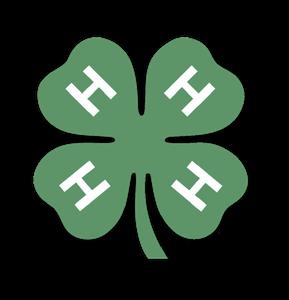

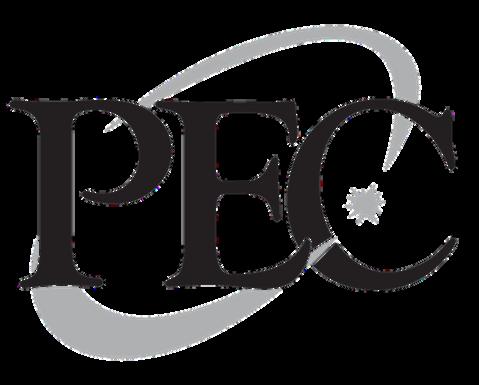




Tree, Picture This, My Heredity Profile, This is Me, My Day in History, Letter Writing: A Lost Art, Favorite Family Recipe, Hello. My Name is..., My Family Genogram, My Life Timeline, Cultural History Exploration, Family Holidays. Optional activities: My Family Poem, Digital Scavenger Hunt, Can I Interview You?
21. Scrapbook — 12-16 pages (pages counted just like pages of a book, not plastic sleeves.) Scrapbooks should center around a specific theme such as 4-H projects, family vacations, birthday celebrations, a specific family holiday, etc.
• This exhibit consists of postmarks, not stamps.
• Exhibits may be illustrated.
• All postmarks must be mounted on either 8 1/2” x 11” note paper or photo album page of any color in a binder.
• All entries are limited to 30 pages for the collection, plus an additional page for the objective of the collection.
• Plastic cover pages are acceptable to protect the mounts.
• Any class may be illustrated.
• The criteria for judging will be: 1) Appearance and neatness; 2) readability; 3) material relates to chosen topic; 4) brief written description telling purpose or objective of your collection.
• NOTE: Metered postage marks must not be used in non-metered class exhibits and non-metered postmarks in metered classes.
• Collections from a commercial source are not eligible for exhibit (i.e. through a postal society membership.) At least one-third of the postmarks in any collection must have been added during the current project year.
• All entries must be clearly marked on the front cover or inside the front cover with the member’s name and county.
Beginning Level (Grades 3-5)
1. Postmark for 10 post offices in home county or surrounding area
2. 30 Oklahoma postmarks
3. 20 topical (any category)
4. 25 Metered postage marks
Intermediate Level (Grades 6-8)
5. 30 hand cancelled
6. 10-30 postmarks that tell a story
7. 30 or more different slogans
8. 30 topical (any category)
9. 30 metered postage marks
Advanced (Grades 9-12)
10. 100 or more hand cancelled postmarks
11. 30-75 postmarks that tell a story
12. 50 or more different slogans
13. 50 or more topical (any category)
14. 50 metered postage marks

• All exhibits must illustrate applications and utilize electrical energy. The exhibit must have been constructed by the exhibitor during the year exhibited and must meet electrical safety standards. All exhibits, except lamps will be judged on electrical wiring and connections, electrical components, usefulness of exhibit, working condition, complexity and design, appearance, originality, workmanship and safety. Lamps will be judged as described for each class. A 4-H member can have only one (1) exhibit in each class. Exhibits should be permanently signed and dated on the bottom or in an inconspicuous location. If not marked judges may mark or punch.
1. Electric projects (Grades 3-7): Entries to include, electromagnets, motors, buzzers and direct current circuit boards. 2. Kit Lamps (Kit Construction): (All Grades) Electrical wiring and connections, light source, and suitability as a reading lamp will be judged. Lamps can be floor, desk or wall models.
3. Original Lamps (All Grades): Originality, workmanship, electrical wiring and connections, light source, and suitability as a reading lamp will be judged. Lamps can be floor, desk or wall models (no kits).
4. Educational poster on careers in the electrical field (All Grades): Poster must be 14” x 22”
Additional electric exhibits (Classes 5-10) can be found in the State Fairbook https://bit.ly/4am8327
• Posters must be 14” x 22” Exhibitors are encouraged to laminate all posters or cover them with clear plastic film. Display boards should be limited to a maximum of 2’ x 3’ and must have a single 1/4” hole drilled at the top center of board to allow for dis-play.
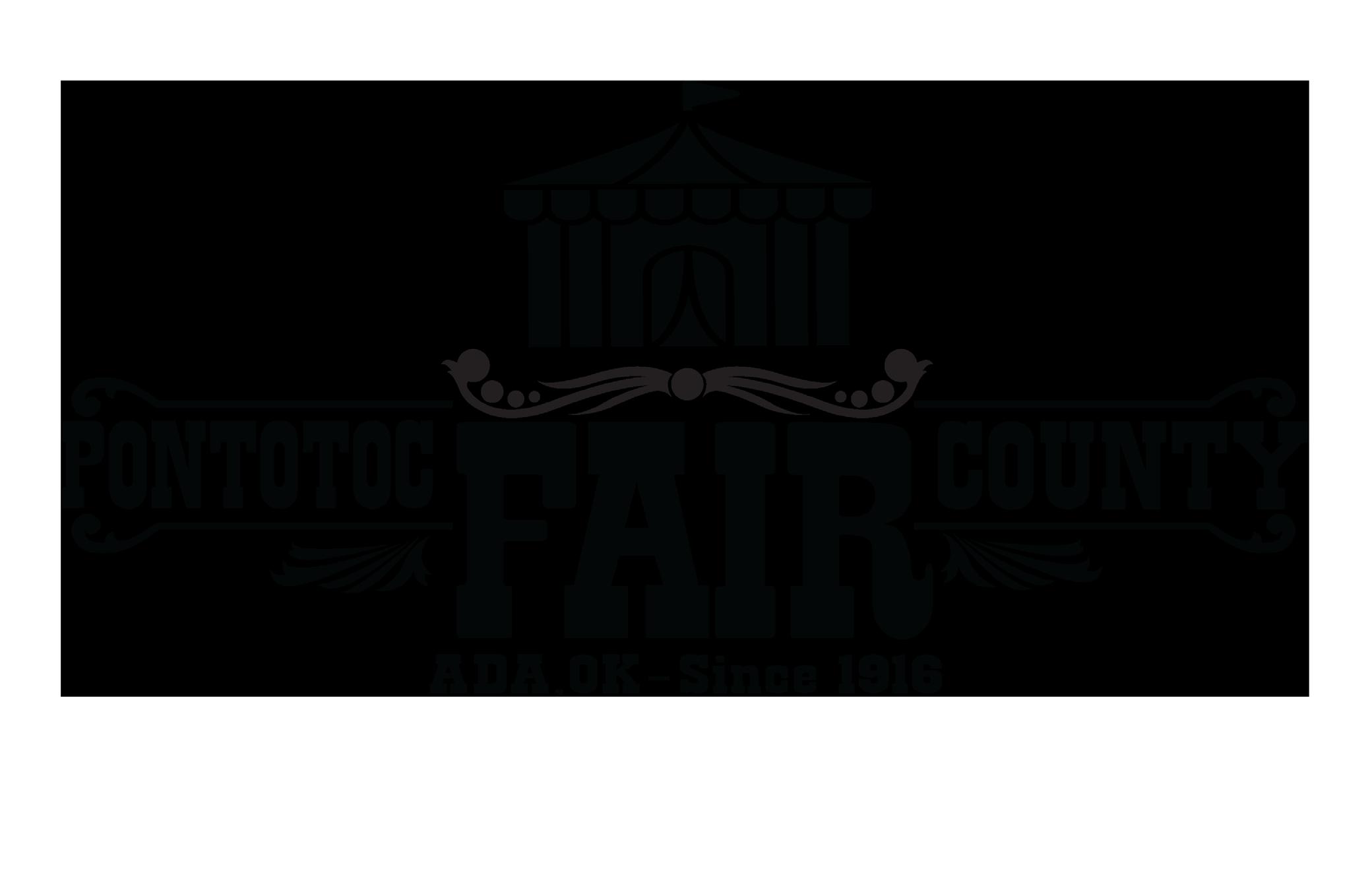

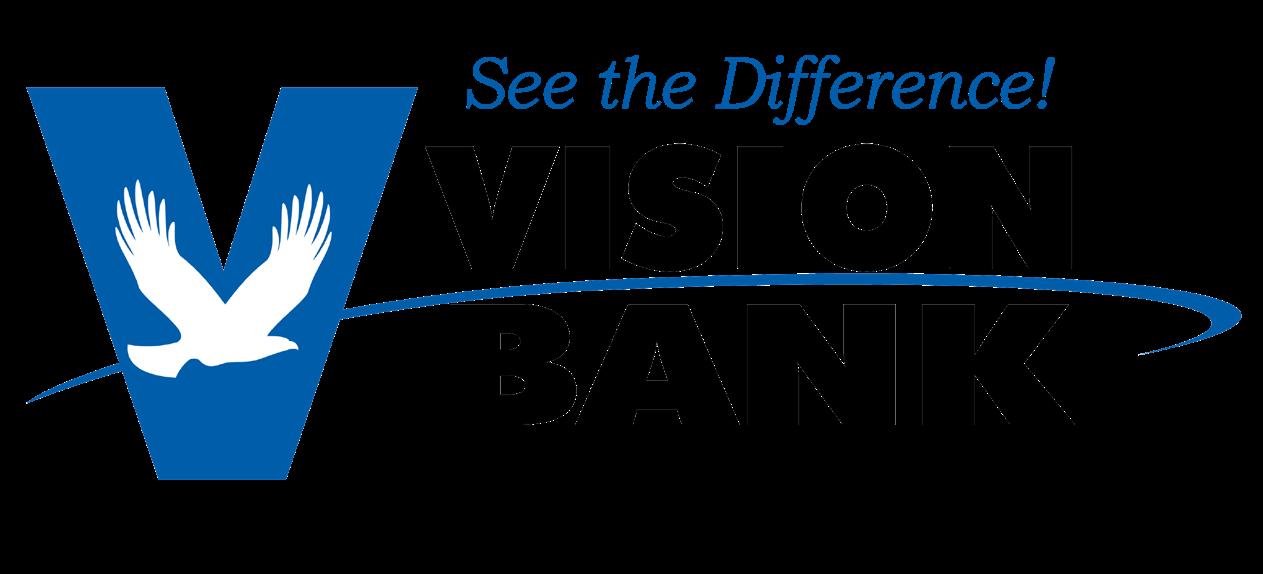
Text of posters or displays should be readable from at least 10 ft. away. *Homemade rockets could be dangerous to fly. Model rockets, posters, and displays should be permanently signed and dated in an inconspicuous location. If not marked the judging committee may mark or punch exhibits.
• Attach a 3”x 5” index card to each rocket, explaining:
• Construction material, how constructed and goal of project.
• Year in project
• Age of member
• Whether or not made from kit
• Other pertinent information
Junior Division (grades 3-7)
1. Poster showing the parts of a model rocket, with an explanation of the purpose of each part.
2. Poster explaining the function of the model rocket engine
3. Poster showing one or more points from model rocketry safety code.
4. Model Rocket made from a kit. Must be safe and functional for flight.
5. Model Rocket designed and built by exhibitor. Must be safe and functional for flight.
6. Poster on any other topic pertaining to model rocketry project.
Senior Division (grades 8-12)
7. Poster or display showing the parts of a model rocket, with an explanation of the purpose of each part.
8. Poster or display explaining the function of the model rocket engine.
9. Poster or display showing one or more points from model rocketry safety code.
10. Model Rocket made from a kit. Must be safe and functional for flight.
11. Model Rocket designed and built by exhibitor. Must be safe and functional for flight.
• The wood science exhibits should demonstrate a project experience which emphasizes the development of woodworking skills, such as: sawing, sanding, planning, alignment of joints, neat use of fasteners (nails, screws, etc.), and careful application of finishes. Judging will focus on the evidence of these skills.
• These exhibits will consist of articles made by 4-H Club members the past year. The project is not limited to current project idea sheets. It must be proportional; functional; and include the same techniques as the listed classes. Miscellaneous and refinished class items should be similar in size to the exhibits in the classes listed for the age division.
• 4-H members can enter one (1) exhibit per class and are

restricted to exhibits designed for his or her age group.
• Wood Science exhibits should be permanently signed and dated in an inconspicuous location. If not marked judge may mark.
1. Jr. Wood Carving Article
2. Sr. Wood Carving Article
3. Jr. Woodcraft: Original design
4. Sr. Woodcraft: Original design
Beginning Level (Grades 3-5)
5. Wall mounted rack for hot pads, ties, paper towels or other wall mounted item
6. Puzzle or game
7. Spice, what-not or other small shelves
8. Book ends
9. Miscellaneous
Intermediate Level(Grades 6-8)
10. Book case or entertainment center (without doors)
11. Gun, baseball bat, fishing rod or similar rack
12. Refinished item: attach before picture & story with history of time, cost sheet, and description of process used
13. Miscellaneous
Advanced (Grades 9-12)
14. Gun, curio or display cabinet (with doors)
15. Table
16. Chest
17. Miscellaneous
18. Refinished item: attach before picture & story with history of item, cost sheet, and description of process used.
Junior Grade 3-7 Senior Grade 8-12
19. Jr. Metalwork: Embossed, tooled, etched
20. Sr. Metalwork: Embossed, tooled, etched
21. Jr, Metalwork: Soldered
22. Sr. Metalwork: Soldered
23. Jr. Metalwork: Arc Welding
24. Sr. Metalwork: Arc Welding
25. Jr. Metalwork: Gas Shielded Arc Welding
26. Sr. Metalwork: Gas Shielded Arc Welding
27. Jr. Metalwork: Free Hand Plasma Cutting
28. Sr. Metalwork: Free Hand Plasma Cutting
29. Jr. Metalwork: Computer Aided Plasma Cutting
30. Sr. Metalwork: Computer Aided Plasma Cutting
• No live ammunition, actual firearms or parts of firearm that could be reassembled should be included. Any manufactured part of a sporting arm may not be displayed, No knives, axes, etc. may be entered, For exhibits other than posters, attach a 3” x 5” inch note card to the back of the exhibit describing the exhibit, what was done to create or prepare this exhibit and how the exhibit relates to the Shooting Sports Project. The 4-H member’s name, age, and county must be included with the exhibit. Exhibits deemed to be inappropriate will not be displayed. Exhibits suggested but not limited to posters, educational displays, journals, slings, quivers, gun stocks, decoys and equipment.
• All exhibits will be judged on the basis of instructions and standards explained in the Oklahoma “S01: 4-H Shooting Sports Exhibit Preparation Guidelines Leaders/Members Guide” #690 (1/2007) which is available through the County Extension Office and on the Oklahoma State 4-H Website https://4h.okstate.edu/projects/shooting-sports-curriculum/ site-files/docs/information-resources/shooting¬sports--project-prep-guide-updated-logo.pdf
• Posters must be 14”x 22” For display purposes, exhibitors are encouraged to laminate all posters or cover them with clear plastic film. Posters must be permanently signed and dated on the back. If not marked the judging committee may mark or punch. Posters may be horizontal or vertical. Text of poster should be readable from at least 10 ft. away.
• Educational display must be three (3) dimensional should be mounted on a freestanding display board not to exceed 3’ x 4’ (width x depth) when the sides are extended for display. Commercially available “Science Fair Presentation Boards” are recommended,
• If you use text, pictures, drawings, artwork or other information not created by you in your exhibit you must cite the source.
Junior Division - An explanation (3” x 5” card) must be attached describing the exhibit, what was done to create or prepare this exhibit and how the exhibit relates to the Shooting Sports Project.
1. Archery Safety: any related item made
2. All Other Discipline Safety: any related item made

3. Archery: any related item made
4. Air Pistol: any related item made
5. Air Rifle: any related item made
6. 22 Rifle: any related item made
7. Shotgun: any related item made
8. Hunting and Wildlife: any related item made (May include tanned hides, dried and mounted wings, cleaned skulls or other wildlife parts preserved by the 4-H member. Full taxidermy style mounts will not be accepted due to space.
Senior Division - An explanation must be attached to and/ or included in each exhibit listed below describing the subject and what is being illustrated.
9. Archery Safety: any related item made
10. All Other Discipline Safety: any related item made
11. Archery: any related item made
12. Air Pistol: any related item made
13. Air Rifle: any related item made
14. 22 Pistol: any related item made
15. 22 Rifle: any related item made
16. Shotgun: any related item made
17. Muzzleloading: any related item made
18. Hunting and Wildlife: any related item made. May include tanned hides, dried and mounted wings, cleaned skulls or other wildlife parts preserved by the 4-H member.
SECTION 315 4-H ENTOMOLOGY
See State Fairbook For Classes https://bit.ly/4am8327
SECTION 316 4-H FORESTRY
See State Fairbook For Classes https://bit.ly/4am8327
SECTION 317 4-H GEOLOGY
See State Fairbook For Classes https://bit.ly/4am8327
SECTION 318 4-H WILDLIFE

• Only one exhibit allowed in each class per individual in their respective grade category.
All exhibits will be judged on the basis of instructions and
standards explained in the “4-H Project Wildlife Exhibit Preparation Guidelines” (#720 revised 12/06). This and other publications listed below are available at the County Extension Office or at https://4h.okstate.edu/projects/environmental-science/index.html
List of links for facts sheets listed in the below category: Lit #721 - Self determined 4-H Wildlife and Fisheries Project Ideas: https://4h.okstate.edu/projects/environmental-science/site-files/docs/wildlife-and-fisheries/self-determinedwildlife-and-fisheries-project-ideas-721.pdf
Lit #719 – Food and Cover Cards: https://4h.okstate. edu/projects/environmental-science/site-files/docs/wildlifeand-fisheries/wildlife-food-and-cover-card-719.pdf
Lit #473 – Animal Tracks: https://4h.okstate.edu/projects/ environmental-science/site-files/docs/wildlife-andfisheries/ animal-tracks-473.pdf
Lit #620 – Introduction to Birding: https://4h.okstate. edu/projects/environmental-science/site-files/docs/wildlifeand-fisheries/introduction-to-birding-620.pdf
Lit #621 – Using Binoculars: https://4h.okstate.edu/projects/environmental-science/site-files/docs/wildlife-andfisheries/using-binoculars-621.pdf
Lit #622 – Bird Identification: https://4h.okstate.edu/projects/environmental-science/site-files/docs/wildlife-andfisheries/bird-identification-622.pdf
Lit #723 – Bird Feeder Station Report: https://4h.okstate. edu/projects/environmental-science/sitefiles/docs/wildlife-and-fisheries/bird-feeding-station-report-723.pdf
Lit #724 – Bird House Observation Report: https://4h. okstate.edu/projects/environmental-science/sitefiles/docs/ wildlife-and-fisheries/birdhouse-observation-report-724.pdf
Lit #772 – Birds and Nests Observation: https://4h.okstate. edu/projects/environmental-science/sitefiles/docs/wildlife-and-fisheries/bird-and-nest-observation-772.pdf
Lit #237 – Leaf Presses and Collecting Hints: https://4h. okstate.edu/projects/environmental-science/sitefiles/docs/ wildlife-and-fisheries/leaf-presses-and-collecting-hints-237. pdf
Lit #718 – Wildflower Card: https://4h.okstate.edu/projects/environmental-science/site-files/docs/wildlife-andfisheries/wildflower-card-718.pdf
Exhibits entered in this section should relate to a specific category of game or non-game animals or birds. Junior (Grades 3-7)
1. Scrapbook of Oklahoma Wildlife (cutouts, pictures or drawings) of at least five (5) mammals, five (5) birds and five (5) reptiles or amphibians. Give common name and what habitat they can be found in, Common names should be specific (i.e. black rat snake, pygmy rattlesnake, etc.)
2. Self-Determined Exhibit. Posters must be 14” x 22”. Displays must not exceed 3’ x 4’. (width x depth). Senior (Grades 8-12)
3. Educational Poster (must be 14”x22”) on careers in Natural Resources. 4. Self-Determined Exhibit. Posters, must be 14” x 22”. Displays must not exceed 3’
4. Self-Determined Exhibit. Posters, must be 14” x 22”.
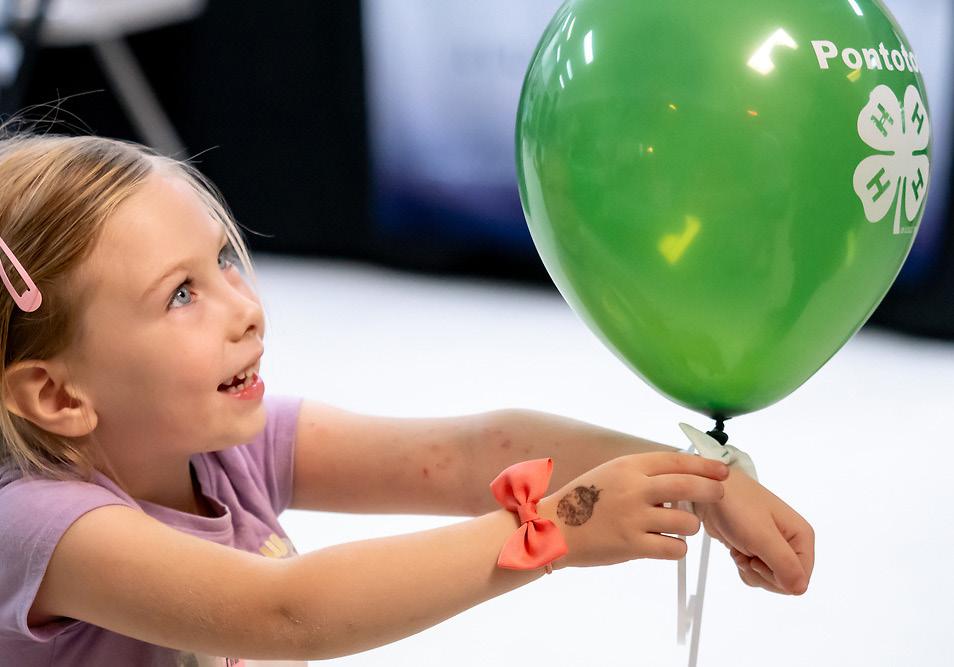
Displays must not exceed 3’ x 4’ (width x depth). Possible examples include but are not limited to: description of a Wildlife Management Area detailing area, location, habitat, management, and wildlife population trends (if known); or a poster with an emphasis on the life cycle, status, range map and habitat of an Oklahoman threatened or endangered species. Species names must be use for plants and wildlife in addition to common names. See Lit. #721 “Self Determined 4-H Wildlife and Fisheries Project Ideas” revised 12/06 for additional examples.
5. A) A collection of fifteen (15) different kinds of plants, trees or shrubs known to provide food or cover for wildlife, mounted on food and cover cards or (B) a seed board with fifteen (15) different kinds of seeds eaten by wildlife. No more than four (4) varieties may be cultivated crops. All of the specimens must have been collected during the current project year. For each plant or seed included list one (1) wildlife species that use that plant or seed (on the cover card or board). All plant species must be native to Oklahoma except that up to four (4) of the plants (or seeds) may be from cultivated crops (Wildlife Food and Cover Card Lit #719)
6. Exhibit of the tracks of eight (8) wild animals or birds commonly found in Oklahoma. POSITIVE or NEGATIVE plaster casts should be mounted on masonite or plywood, not to exceed 12” x 24”. Label each track with kind of animal or bird, which county track was found in, what habitat it was found in and what date the track was cast. See 4-H Lit. #473 Animal Tracks for more instructions and details.
7. Wildlife Single Photo Entry illustrating one of the following 1) wildlife in its natural habitat 2) interaction between two or more wildlife species 3) wildlife displaying a unique behavior 4) an animal at the zoo. Prints must be no smaller than 3.5 inch x 5 inch and no larger than 5 inch x 7 inch. Digital photos may not be manipulated or altered except for color and contrast adjustments, cropping, exposure adjustments, and red eye reduction. Prints must be securely attached to the surface of a poster board or mat board. No double matting, use of multiple layers or more than one color. The entire print must be seen and cannot

be masked in any way. Boards must be no larger than 10” x 10”. Captions are optional, but not required. Photos are to be taken by the exhibitor.
Junior (Grades 3-7)
8. Display board showing steps in tying two kinds of fishing knot used in tying lines or leaders. Use cord instead of fishing line. Mount on board suitable for hanging, not to exceed 12” x 12”.
9. Notebook describing habits and appearance of five (5) fish found in Oklahoma. Information on each fish to include photo, drawing or cut-out picture, proper common name, kind of food eaten, distinctive physical characteristics, best ways to catch and other topics of interest to anglers.
10. Display of five (5) member assembled lures, together with the materials from which they were assembled, mounted on a board not to exceed 12” x 16”. Lures may be spinners, jigs, flies, plugs or a combination of these. May be entirely homemade or assembled from purchased supplies.
11. Self-Determined Fish Project. Educational report, display or project created by the member. Topic to deal with fish, fishing, fish farming, aquatic food chains or pollution in Oklahoma waters. Displays not to 3’ x 4’. (width x depth) with sides extended. Posters must be 14” x 22”.
Senior (Grades 8-12)
12. Notebook describing habits and appearance of ten (10) fish found in Oklahoma. Information on each fish to include photo, drawing or cut-out picture, proper common name, kind of food eaten, distinctive physical characteristics, best ways to catch and other topics of interest to anglers.
13. Display of five (5) fishing flies tied by the exhibitor. The material and shape of the exhibit will be exhibitor’s choice, but cannot exceed 12” x 12” in size. Attach report to exhibit to indicate the following about each fly on the board: type of fly, type of fish it is used to catch, habitat conditions it is used in and cost to purchase or make.
14. Display of five (5) fishing lures. Lures may be any type commonly used in sport fishing. The material and shape of the exhibit board will be exhibitor’s choice, but cannot exceed 12” x 12”. Attach report to exhibit to indicate the following about each lure on the board: type of lure, type of fish it is used to catch, habitat conditions it is used in and cost to purchase or make.
15. Self-Determined Fish Project. Educational report, display or project created by the member. Topic to deal with fish, fishing, fish farming, aquatic food chains or pollution in Oklahoma waters. Displays not to exceed 3’ x 4’. (width x depth) with sides extended. Posters must be 14” x 22”.
Junior (Grades 3-7)
16. Display of a home constructed bird feeder (may be from a kit), must include a 3” x 5” index card tacked to the feeder

with the following information: 1) What species was it constructed for; and 2) What habitat and site location (should include height) it will be placed in. Should be functional and not decorative.
17. Display of a single unit bird house, home constructed (may be from a kit) with a 3” x 5” index card tacked to the house with the following information: (1) What bird species was house constructed for and (2) What habitat and site location (should include height) the house will be placed in. Should be functional and not decorative.
18. Notebook of fifteen (15) pictures, drawings or photos of birds seen and identified by member and labeled with common name of each.
19. Self-Determined Poster (14” x 22”). See “Self Determined 4-H Wildlife & Fisheries Project Ideas” Oklahoma 4-H Pub. #721 (revised 12/06) for ideas.
Senior (Grades 8-12)
20. Notebook of twenty-five (25) pictures, drawings or photos of birds seen and identified by member and labeled with common name of each.
21. Display of a Purple Martin bird house, home constructed (may be from a kit). Should be functional and not decorative.
22. Self-Determined Bird Project. If poster, must be 14” x 22”. If display must not exceed 3’x 4’ (width x depth). See “Self-Determined 4-H Wildlife & Fisheries Project Ideas” Oklahoma 4-H Pub. #721 (revised 12/06) for ideas. See 4-H Wildlife Project Lit No. 720 “Exhibit Preparation Guidelines Leaders/ Members Guide” (revised 12/06) for guidelines.
23. Observation report for Bird Feeder used during previous year, including photo of feeder at location used (report #723 found on OK Lit. online under Wildlife & Fisheries). May use feeder constructed or a purchased feeder.
24. Observation report for Bird House used during previous year, including photo of feeder at location used (report #724 found on OK Lit. online under Wildlife & Fisheries). May use birdhouse constructed or a purchased house.
At least one-third of the specimens must have been collected during the current project year. See information on pressing plants in “Leaf Pressing and Collecting Hints” 4-H Publication No. 237 (Revised 04/04) to prepare plants for collections and exhibits. Posters should be hand generated and not down loaded from internet or computer. “Wildflower Card” (OK 4-H Lit. #718) can be downloaded from OK 4-H Lit. On-Line under Wildlife & Fisheries: https://4h.okstate.edu/projects/environmental-science/index. html. Please print form on card stock or heavy paper and hole punch.
Junior (Grades 3-7)
25. Collection of eighteen (18) Oklahoma wildflowers properly pressed and mounted on wildflower cards. Label with common name flower family and tell location and date collected. Display in a notebook.
26. Drawing or diagram showing parts of a wildflower blossom, not to exceed 8 1/2” x 11”.
27. Display two (2) principle wildflower families showing four (4) or more pressed flowers of each family labeled with common name. A brief description of each flower family should be included. Posters must be 14” x 22” or display in a notebook.
28. Self-Determined Poster (14” x 22”). See “Self Determined”

4-H Wildlife & Fisheries Project Ideas” Oklahoma 4-H Pub. #721 (revised 12/06) for ideas.
Senior (Grades 8-12)
29. Collection of twenty five (25) Oklahoma wildflowers properly pressed and mounted on wildflower cards. Label with common name, scientific name, flower family, location collected, date collected and habitat collected from. Display in a notebook.
30. Poster on historical and/or cultural uses of wildflowers in Oklahoma. Poster must by 14”x22”.
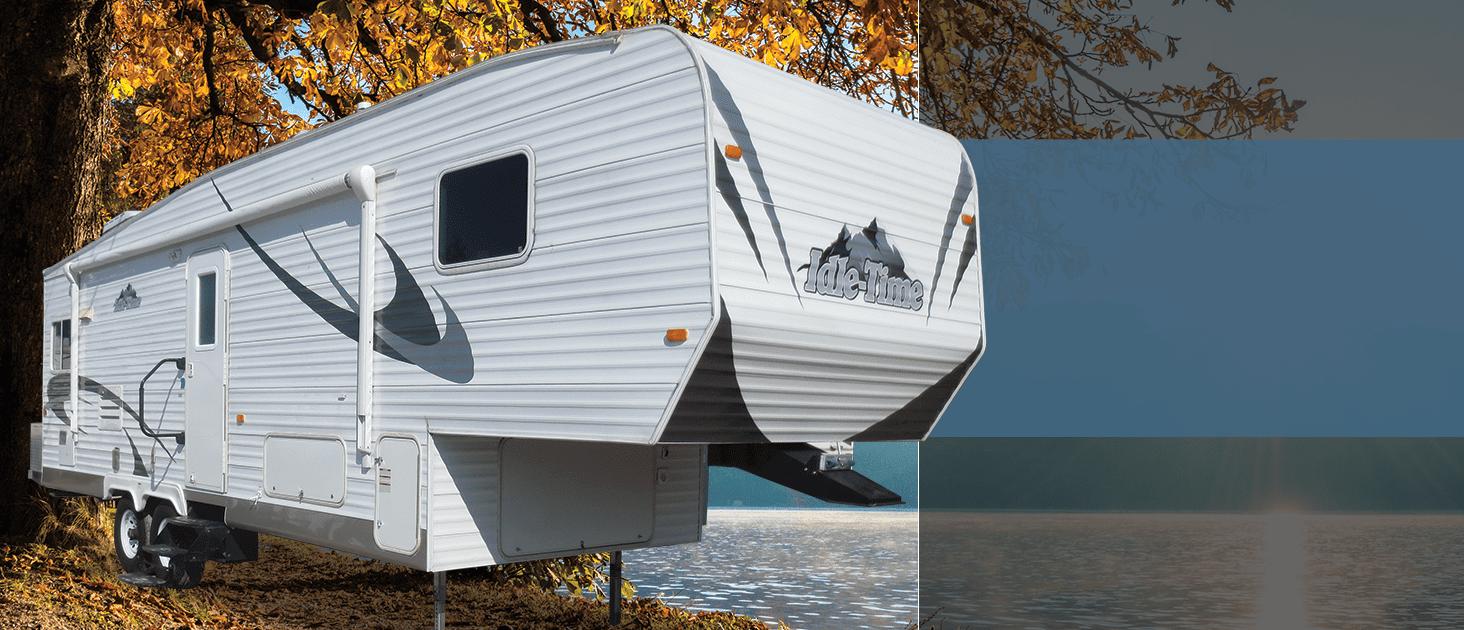

31. Special collections. Collection of specimens in some special category, i.e. one (1) family, poisonous, dyes, edibles or specific season such as early spring. Posters must be 14” x 22” or displayed in a notebook on card stock pagers or wildflower cards (Lit. # 718).
32. Self-Determined Exhibit. If poster must be 14” x 22”. Display must not exceed 3’x 4’ (depth x height). See “Self-Determined 4-H Wildlife & Fisheries Project Ideas” Oklahoma 4-H Pub. #721 (revised 12/06) for ideas. All Grades:
33. Make a collection, mount and press, at least five (5) leaves of plants showing leaf arrangements (opposite, alternate and whorled); types of leaves (simple, pinnately compound, palmately compound); leaf margins (toothed, smooth and lobed). If poster must be 14” x 22” or display in notebook on card stock pages or wildflower cards (Lit # 718)
SECTION 319 4-H ENVIRONMENTAL STEWARDSHIP
See State Fairbook For Classes https://bit.ly/4am8327
SECTION 320 4-H CROPS
See State Fairbook For Classes https://bit.ly/4am8327
SECTION 321 4-H FORAGE PLANTS
See State Fairbook For Classes https://bit.ly/4am8327
SECTION 322 4-H HOME GARDENING


Yellow Apples, plate of five
Pears, plate of five
• This exhibit is a quality selection of from five to nine different species of mature fruits and/or vegetables from the exhibit list above. Items not listed above can be used, but should not be more than a third of the species utilized. Amounts of fruits and vegetables in this exhibit should be such that they can be arranged in a neat and orderly manner and have good eye appeal. There must be enough of each fruit or vegetable for the judge to determine quality.
1. Potatoes, yellow, white or russet, 3 specimens
2. Potatoes, red, 3 specimens
3. Okra, 6 pods
4. Onions, yellow, 3 specimens
5. Onions, white, 3 specimens
6. Onions, red, 3 specimens
7. Pumpkin, field type (oblong), one specimen
8. Pumpkin, Jack-O-Lantern (round and flat), one specimen
9. Squash, winter, acorn, one specimen
10. Squash, winter, butternut, one specimen
11. Squash, winter, other, one specimen
12. Eggplant, 2 specimens
13. Squash, summer, zucchini, 2 specimens
14. Squash, summer, yellow straight neck, 2 specimens
15. Squash, summer, yellow crook neck, 2 specimens
16. Squash, summer, patty pan (scallop type), 2 specimens
17. Sweet Potatoes, (any variety), 3 specimens
18. Pepper, jalapeno, 5 specimens
19. Pepper, other hot pepper, 5 specimens
20. Pepper, sweet bell pepper, 5 specimens
21. Pepper, banana pepper, 5 specimens
22. Tomatoes, large type, 5 specimens
23. Tomatoes, cherry type (1 1/2” or less in diameter), 5 specimens
24. Watermelon, oblong type, one
25. Watermelon, round type, one
26. Watermelon, small icebox, one
27. Red apples, plate of five
• All fruits and vegetables exhibited must be grown by the exhibitor.
• No specimens in this exhibit may be entered in another class. Any combination of fruits and vegetables may be used.
• The exhibit must be in a container such as a basket or box.
• One third (1/3) of the judging will be on how well the exhibit is prepared and presented. Packing such as paper, straw or cloth may be used but the fruits and vegetables should be the main attraction of the exhibit. No artificial plant material or specimens can be utilized as part of the exhibit.
30. Jr. Division (Grades 3-7)
31. Sr. Division (Grades 8-12)
32. Junior Division (Grades 3-7) Poster size is 14” x 22”. Other exhibits limited to 4’x4’x4’ due to space limitations
33. Senior Division (Grades 8-12) Poster size is 14” x 22”. Other exhibits limited to 4’x4’x4’ due to space
Exhibit Unit I - Landscaping Home Grounds
• “Before and After” pictures not to exceed 5” x 7” of yard clean up, plantings or construction of landscape elements mounted securely on one 14” x 22” sheet of poster board shall constitute this exhibit. Number of pictures should be no less than two or more than eight. Posters must be permanently signed and dated on the back.
• Neatness and arrangement of pictures is important. A brief explanation of the project should
be attached to the exhibit, and each picture must be labeled. The before and after pictures should show a definite change and should be taken from the same place so judges can evaluate the change. An exhibit should not be entered more than once unless it has been substantially revised.
1. Junior - (Grades 3-7)
2. Senior - (Grades 8-12) Exhibit Unit II - Herbarium Card
These exhibits shall consist of dried and pressed specimens of leaves and other specified parts of native or cultivated trees, vines and/or shrubs. Each leaf specimen should be mounted on a separate 8” x 10” herbarium card available at your County Extension Centers or at https://4h.okstate.edu/ projects/plant-science-andentomology/site-files/docs/horticulture-pdfs/herbarium-card-620.pdf Only the information required in your division should be filled out. The cards should be enclosed in a notebook or binder. Each specimen should be covered with a transparent plastic or similar covering to protect it from damage. No leaf should be more than 3 years old and at least one-third of the specimens must have been collected during the current project year. Instructions for collecting and pressing are available in the OSU Extension Center.
3. Grades 3-5 A collection of 15 specimens with the following information: 1) common name; 2) general class; (3) kind of plant
4. Grades 6-8
A collection of 25 specimens with a pressed flower or fruit or seed included with each specimen. Information on the card to be filled out is 1) common name; 2) general class; 3) kind of plant; 4) form; 5) color; 6) exposure.
5. Grades 9-12 A collection of 30 specimens with a pressed flower, fruit or seed included with each specimen. All information on the card should be filled out.
• Terrarium of plant life. Refer to OSU Fact Sheet No. F-6438 or a similar guideline. No specific size of container, materials, plants or methods. Criteria for judging will be 1) compatibility and arrangement of plants and materials; 2) appropriate potting media; 3) attractiveness and originality; 4) appropriate size of plants for container, Terrariums should feature either woodland or tropical plants, and feature at least three (3) different species of plants. Terrariums must be completely covered at all times. 5) Terrariums containing succulents will be disqualified; succulents belong in dish gardens.
1. Grades 3-5
2. Grades 6-8
3. Grades 9-12
• Dish Garden of plant life. Please see OSU Fact Sheet HLA- 6451 for more information.
• Criteria for judging will be 1) compatibility and arrangement of plants, potting media, and contain; 2) attractiveness and originality; 3) appropriate size of plants for container. Dish Gardens may feature succulents,
carnivorous plants, or foliage plants. Dish Gardens should feature at least three different species of plants.
• Dish Gardens should be no larger than 15 inches in diameter, length, width, or height and weigh no more than 15 pounds and contain at least 80% living plant material. Dish Garden should feature at least 3 different species of plants.
4. Grades 3-5
5. Grades 6-8
6. Grades 9-12
Additional horticulture exhibits (Classes 7-20) can be found in the State Fairbook https://bit.ly/4am8327
• All Companion Animal exhibits should focus on one of the following: 1) Animal Health and/or Nutrition 2) Good Husbandry and/or Grooming 3) Training and/or showing 4) Service and/or Civic Engagement 5) Career exploration in companion animals and livestock.
• Animals for this section can be categorized as companion animals (birds, dogs, cats, fish, rabbits, guinea pigs, etc.) or livestock (beef, dairy, equine, goats, poultry, sheep, swine, etc). This section is not to include animals considered wildlife (deer, pheasants, wild birds, turkey, etc.)
Companion Animal and Livestock Poster illustrating one of the following 1) Animal Health and/or Nutrition 2) Good Husbandry and/or Grooming 3) Training and/or showing 4) Service and/or Civic Engagement 5) Career exploration in companion animals and livestock.
1. Jr. (Grades 3-7)
2. Sr. (Grades 8-12)
Companion Animal and Livestock Display illustrating one of the following 1) Animal Health and/or Nutrition 2) Good Husbandry and/or Grooming 3) Training and/or showing 4) Service and/or Civic Engagement 5) Career exploration in companion animals and livestock. Space for the booth is 36”x.48”. Back can be 4 feet high. Display must be free-standing. Models, photographs, posters or other means for display may be used.
3. Jr. (Grades 3-7)
4. Sr. (Grades 8-12)
Companion Animal and Livestock Photo Story Board illustrating one of the following 1) Animal Health and/or Nutrition 2) Good Husbandry and/or Grooming 3) Training and/or showing 4) Service and/or Civic Engagement 5) Career exploration in companion animals and livestock. Story Board should contain 4 to 6 photos attached to the surface of a white or colored foam core, poster, or mat board no larger than 14” x 22”. Each photo should contain a caption. Judging criteria will emphasize content first and photo composition second. Photos are to be taken by the exhibitor.
5. Jr. (Grades 3-7)
6. Sr. (Grades 8-12)
Companion Animal and Livestock Single Photo Entry illustrating one of the following 1) Animal Health and/ or Nutrition 2) Good Husbandry and/or Grooming 3) Training and/or showing 4) Service and/or Civic Engagement 5) Career exploration in companion animals and livestock. Prints must be no smaller than 3.5 inch x 5 inch and no larger than 5 inch x 7 inch. Digital photos may not be manipulated or altered except for color and contrast adjustments, cropping, exposure adjustments, and red eye reduction. Prints must be securely attached to the surface of a poster board or mat board. No double matting, use of multiple layers or more than one color. The entire print must be seen and cannot be masked in any way. Boards must be no larger than 10” x 10”. Captions are optional, but not required. Photos are to be taken by the exhibitor.
7. Jr. (Grades 3-7)
8. Sr. (Grades 8-12)
Other Companion Animal and Livestock Items Exhibits must have a 3” x 5” inch note card describing the exhibit, what was done to create or prepare this exhibit and how the exhibit relates to 1) Animal Health and/or Nutrition 2) Good Husbandry and/or Grooming 3) Training and/or showing 4) Service and/or Civic Engagement 5) Career exploration in companion animals and livestock. Posters, photo, displays and journals are not allowed in this category. Exhibit size limited to 4’x4’x4’ due to space limitations.
9. Jr. (Grades 3-7)
10. Sr. (Grades 8-12)
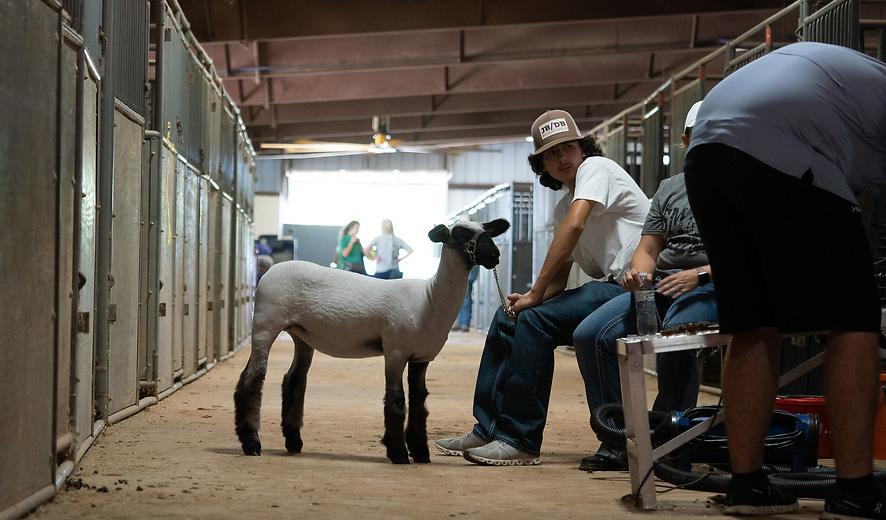

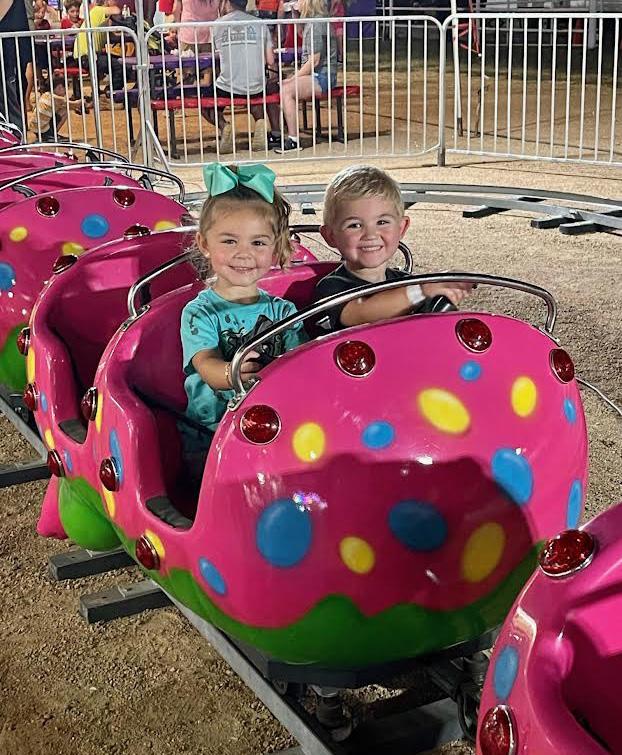




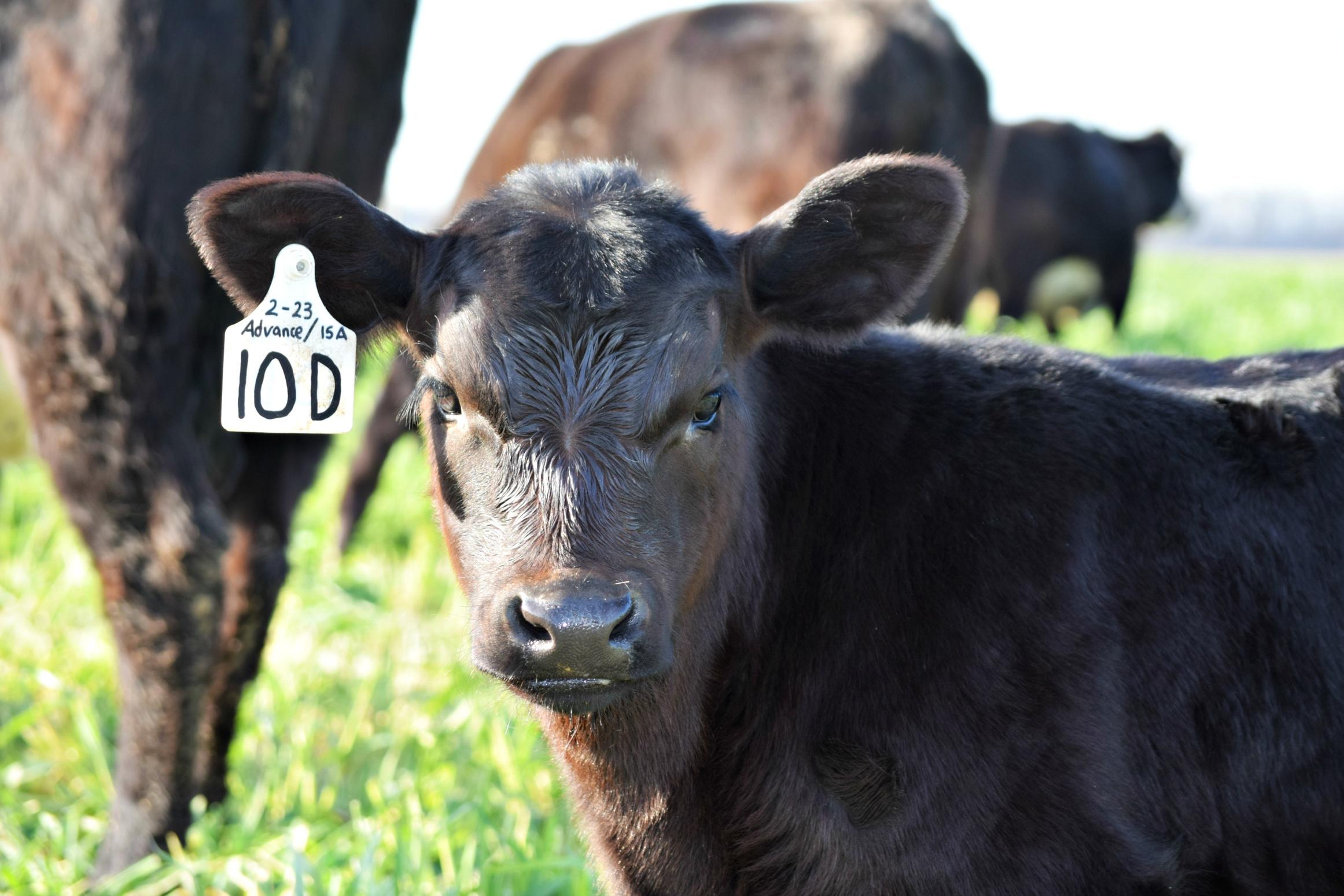


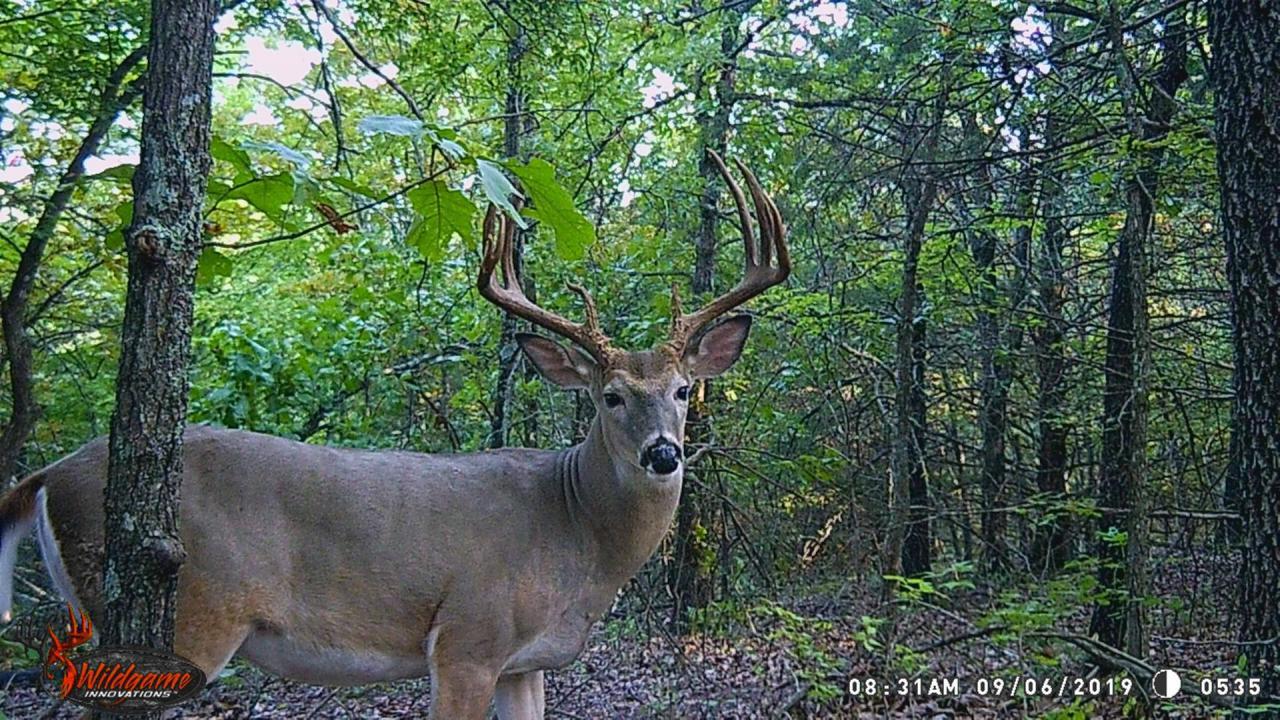





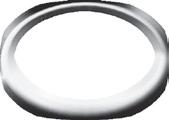


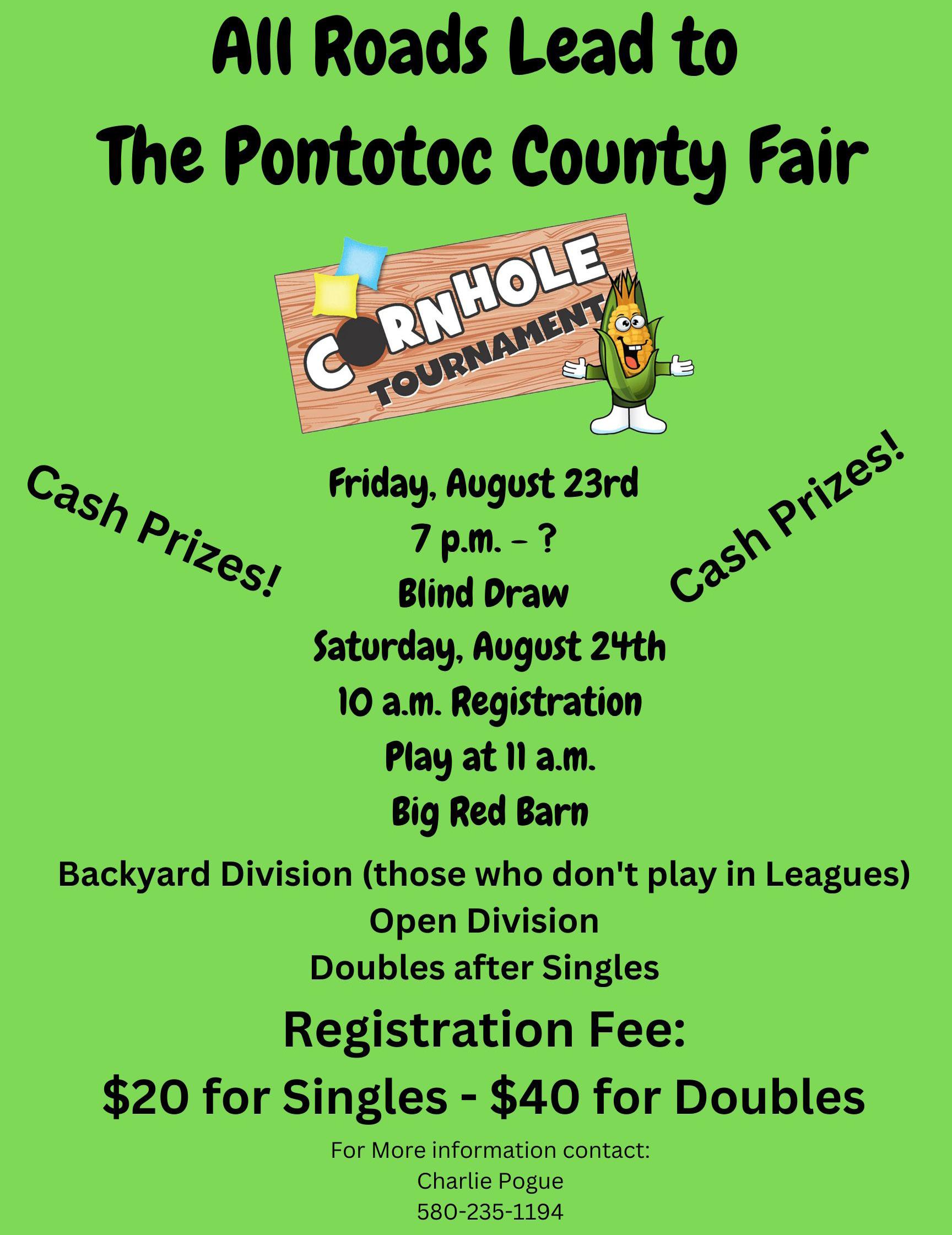

Saturday, August 24
Registration 3 p.m. Contest 4 p.m. Convention
Categories:
Children - 14 & Under and Families
Adults - 15 and Up
Exhibition - Made or Purchased
Craftsmanship - 50% or More Made or Altered
Awards:
KIDS - 1ST, 2ND, & 3RD AWARDS JUDGES CHOICE
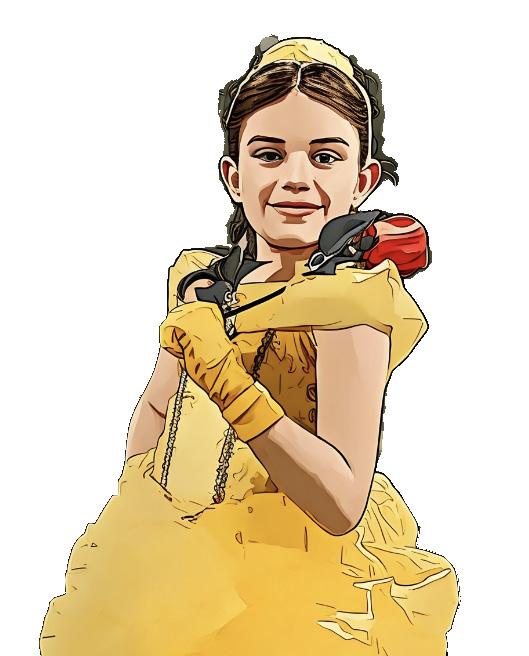

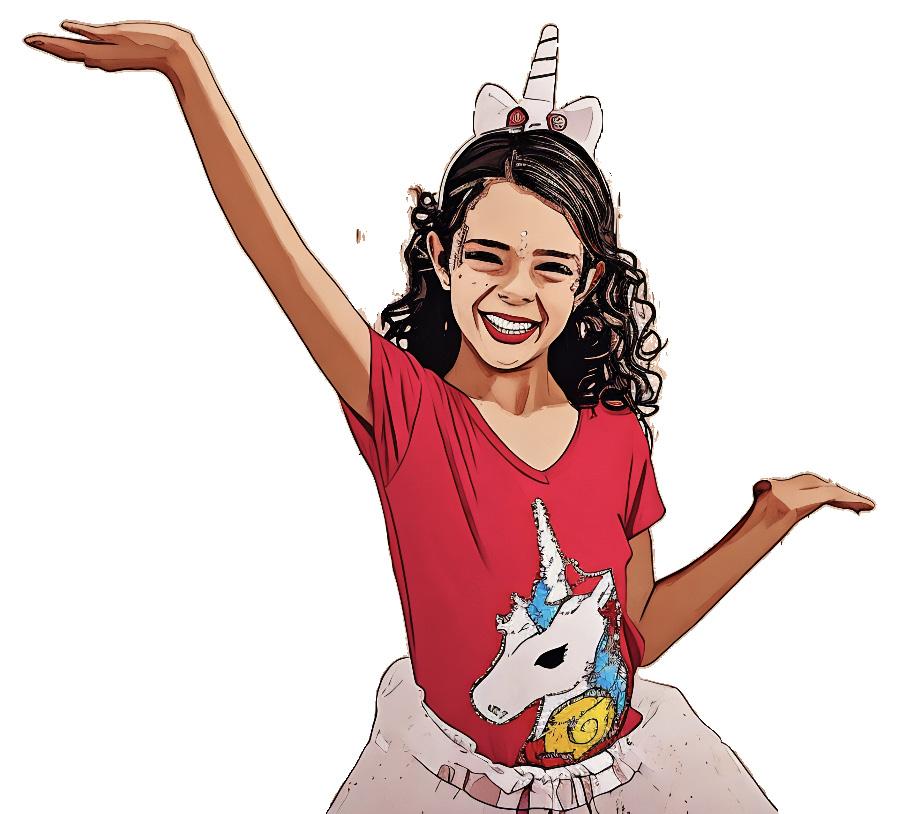
Contest Rules
Contestants can only enter one category. No sandbagging. Previous major award winners of other competitions are not eligible to compete. No skits during judging or catwalk. No nudity.
No profanity on stage. Including messages on signs or clothes. No political or religious statements during the catwalk. No projective of any kind.
No flash spots, explosive devices, or similar special effects.


